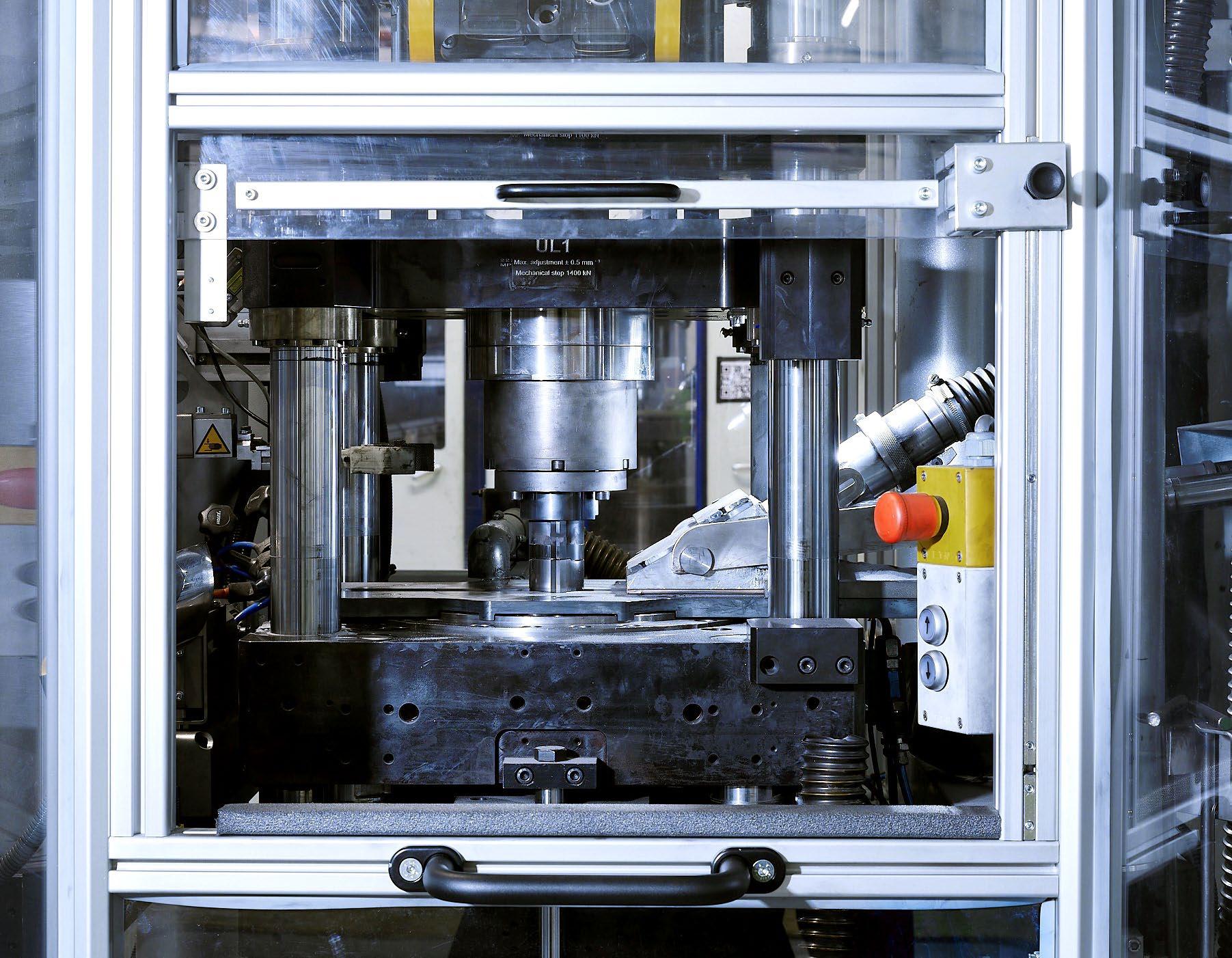

Make the most of your metal powder
The possibilities with Höganäs metal powders are endless, and we’re here to help you discover which can benefit your business. We offer advanced development services – from idea creation, design, simulation and prototyping to industrialisation. At our Customer Development Centres, which are located in the USA, Europe and Asia, we conduct advanced analyses, investigations and testing.
The centres include state-of-the-art testing and laboratory equipment, and we also offer technical support and training. We are dedicated to helping you find the ideal metal powder solutions designed for your specific needs.

Publisher & Editorial Offices
Inovar Communications Ltd
11 Park Plaza
Battlefield Enterprise Park
Shrewsbury SY1 3AF
United Kingdom
Tel: +44 1743 469909 www.pm-review.com
Managing Director
Nick Williams nick@inovar-communications.com
Group News Editor
Paul Whittaker paul@inovar-communications.com
Features Editor
Emily-Jo Hopson-VandenBos emily-jo@inovar-communications.com
Assistant Editor
Charlie Hopson-VandenBos charlie@inovar-communications.com
Consulting Editor
Dr David Whittaker Consultant, Wolverhampton, UK
Advertising Sales Director
Jon Craxford
Tel: +44 (0) 207 1939 749 jon@inovar-communications.com
Digital Marketer
Swetha Akshita swetha@inovar-communications.com
Production Manager
Hugo Ribeiro hugo@inovar-communications.com
Subscriptions
Jo Sheffield jo@inovar-communications.com
Accuracy of contents
Whilst every effort has been made to ensure the accuracy of the information in this publication, the publisher accepts no responsibility for errors or omissions or for any consequences arising there from. Inovar Communications Ltd cannot be held responsible for views or claims expressed by contributors or advertisers, which are not necessarily those of the publisher.
Reproduction, storage and usage
Single photocopies of articles may be made for personal use in accordance with national copyright laws. Permission of the publisher and payment of fees may be required for all other photocopying.
All rights reserved. Except as outlined above, no part of this publication may be reproduced, stored in a retrieval system, or transmitted in any form or by any means, electronic, photocopying or otherwise, without prior permission of the publisher and copyright owner.

Submitting news and articles
We welcome contributions from both industry and academia and are always interested to hear about company news, innovative applications for PM, research and more.
Subscriptions
Powder Metallurgy Review is published on a quarterly basis. It is available as a free electronic publication or as a paid print subscription. The annual subscription charge is £150.00 including shipping.
Design and production
Inovar Communications Ltd.

ISSN 2050-9693 (Print edition)
ISSN 2050-9707 (Online edition)
© 2023 Inovar Communications Ltd.
This magazine is also available for free download from www.pm-review.com
METALLURGY REVIEW
Strategic innovation in the face of uncertainty
Welcome to the first issue of 2023. As the PM industry continues to evolve and adapt to market demands, we will be continuing to explore how companies are responding to a rapidly changing landscape.
The rise of electric vehicles continues to be at the forefront of people’s minds. Despite the clear statements from governments around the world about the phasing out of the internal combustion engine, there is still a hint of uncertainty as to what the reality will look like in 2035 and beyond.
Will EV adoption stall as electricity prices rise and critical material and component shortages worsen as a result of ongoing geopolitical turmoil? Will alternative technologies come to the fore, or will ambitious ‘phasing out’ targets for conventional and hybrid ICE vehicles be pushed back, throwing a lifeline to the owners of rows of compaction presses and sintering furnaces that are so reliant on existing automotive technology?
In this issue, GKN Powder Metallurgy, the world’s largest PM producer, shares its ambitious strategic vision for the future of the permanent magnets used in electric motors – including the establishment of two major permanent magnet manufacturing facilities in Europe and North America to produce this product at scale and reduce reliance on Asian magnet producers.
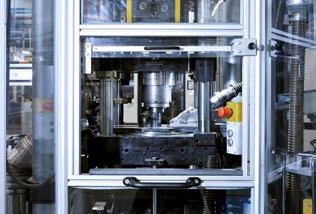
The magnetic field (excuse the pun) also features in our Industry News section, with VAC recently confirming a long-term supply agreement with General Motors, while Europe’s MagREEsource project received €5 million in funding to open the first pilot facility for recycling and manufacturing permanent magnets.
Nick Williams Managing Director, Powder Metallurgy ReviewOur materials, your life
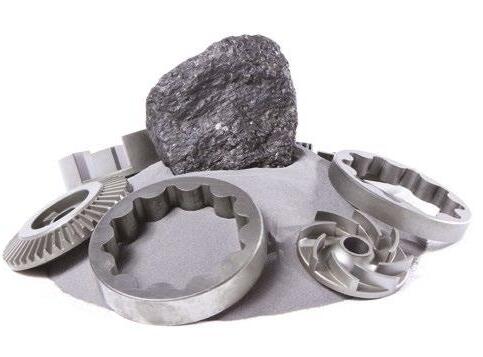

Rio Tinto Metal Powders (RTMP) is committed to finding better ways to provide the materials the world needs now and in the future.
Producer of iron and steel powders at our plant located in Quebec, Canada, we primarily supply into the automotive industry which is transitioning to electrification. RTMP is contributing to the development of new powder materials for electric components, from pump assemblies to small electric motors in e-bikes and EV’s to support the energy transition so together we can create a better life for the generations to come.
Find out more at www.riotinto.com
www.qmp-powders.com
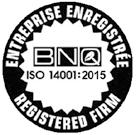
53 GKN Powder Metallurgy: A strategic vision for the future of permanent magnets for EVs
The transition to clean energy, acceleration in EV uptake, and demand from other renewable technologies means the market for permanent magnets is growing rapidly. GKN Powder Metallurgy recently announced it will begin manufacturing permanent magnets specifically for the EV markets in Europe and North America and is investing significantly to establish the capacity to produce up to 4,000 tonnes by 2025. Here, GKN PM shares its vision for the electric motor market and its plans to create local-to-local supply chains for permanent magnets, with insight from Thorsten Wieres, Global Program Director Magnets, and Eckart Schneider, Director of Business Development. >>>
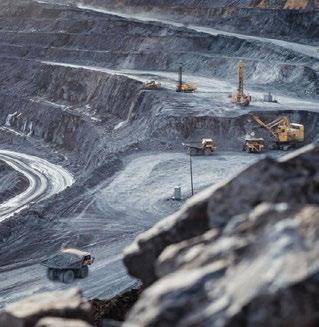
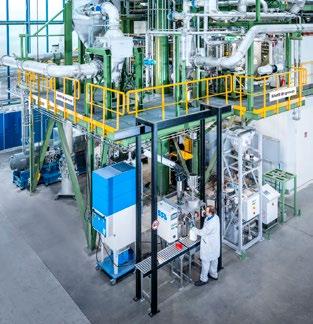
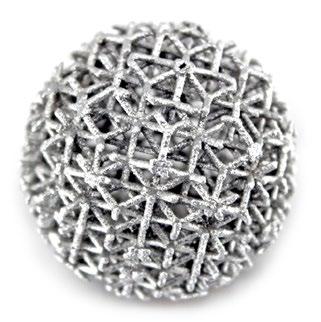
61 Building trust in the Powder Metallurgy industry: The role of standardisation and an update on recent work by ISO/TC 119
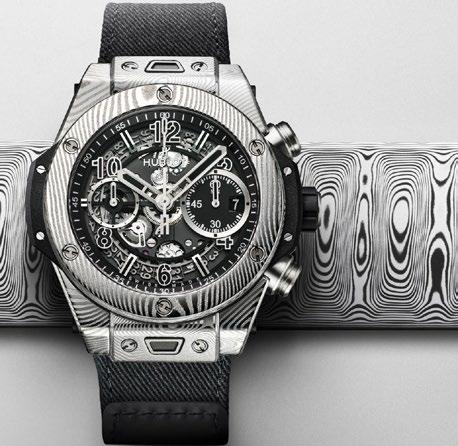

Adhering to industry standards is crucial for fostering customer confidence and maintaining the integrity of the Powder Metallurgy field. Standards establish a framework for the language used by the industry, characterisation techniques, and material specifications. They play a vital role in both technological development and business transactions, where a clear understanding of terms, material properties, and measurement methods is necessary. In this article, Mats Larsson, chairman of the technical committee ISO/ TC 119 – Powder Metallurgy, explains the importance of standardisation in PM and offers insights into the organisation’s most recent work. >>>
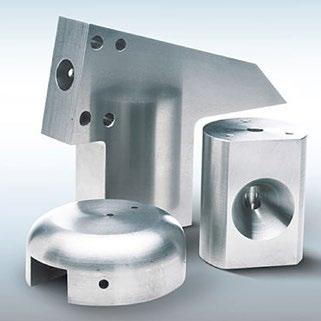
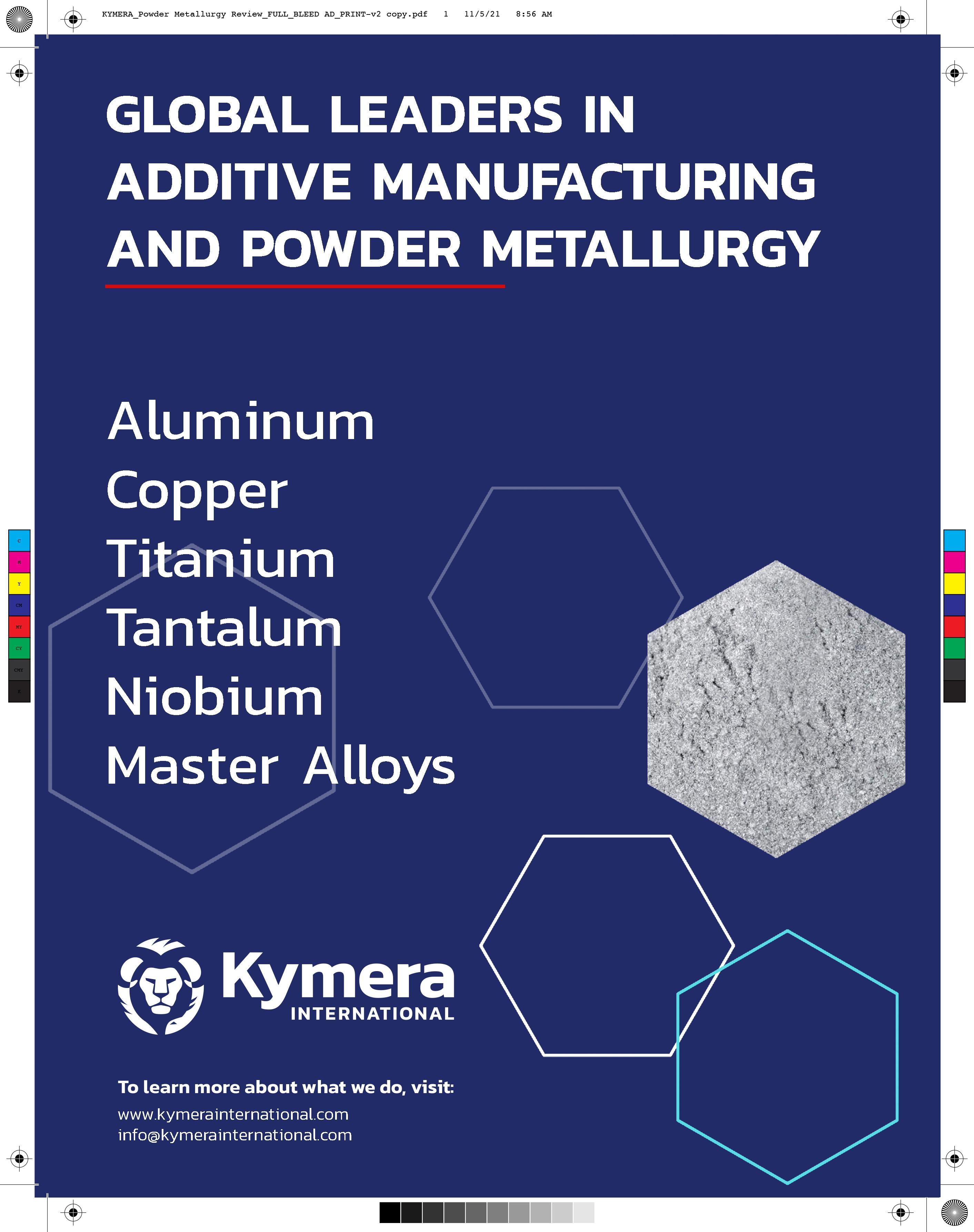
71 High-volume powder production for Additive Manufacturing: SMS group’s continuous metal powder production process
SMS group GmbH’s newly developed continuous powder production process enables up to 4,000 tons of high-quality atomised metal powder to be produced every year for use in Additive Manufacturing and other technologies. This comes just in time to meet the challenges of a growing industrial AM market, which has seen demand for metal powder expand significantly in recent years. SMS group’s Yannik Wilkens explores the continuous powder production concept and the step change it represents in the high-volume production of atomised powders for AM. >>>
77 Development of enhanced-performance PM brake pads for high-speed trains by Beijing
Tianyishangjia New Material Corp., Ltd.
The new generation of high-speed trains presents a challenge for braking systems manufacturers. The increased speed at which these trains must be able to brake safely has significant implications for the required friction and wear properties of brake pad materials. Leveraging the precise property control made possible by Powder Metallurgy, Beijing Tianyishangjia New Material Corp., Ltd. (TYSJ) has designed and fabricated a series of brake pads suitable for these applications and is a key supplier of these components for ten of China’s high-speed trains. In this article, Dr Hongzhou (Andy) Zhang reports on the R&D behind TYSJ’s high-speed brake pads. >>>
89 The START project: Creating a sustainable supply chain for green energy harvesting products by Powder Metallurgy
Sustainable Energy Harvesting Systems Based on Innovative Mine Waste Recycling (START) is an Innovation Action project co-funded by the EU and its Horizon Europe programme.
Using an advanced powder production and consolidation process, the project’s aim is to create a sustainable supply chain for green energy harvesting products by transforming sulphide materials from mining waste into sustainable high-added-value Powder Metallurgy components for tellurium-free thermoelectric (TE) devices. Here, the consortium members offer a comprehensive summary of START’s background, the innovative workflow developed, and its potential impact. >>>
97 World PM2022: Reviewing three innovative methods for metal powder production

A technical session at the 2022 World PM Congress, organised by the European Powder Metallurgy Association (EPMA) and held in Lyon, France, October 9-13, 2022, focused on a number of innovative methods for powder production.
An overview was given of a new approach to spherical powders in a range of sizes using conical laser beams; the production and processing of tungsten-based nanopowders in thermal plasma systems; and the fabrication of monodispersed spherical composite granules by electrostatic integrated granulation of nanopowder suspension. Dr David Whittaker reviews the research presented during the session. >>>













Hublot adopts Powder Metallurgy Damasteel for limited edition watch

Swiss luxury watchmaker Hublot has released a limited edition watch featuring a Powder Metallurgy Damasteel case. The Big Bang Unico Gourmet watch forms part of Hublot’s Gourmet range, and its distinctive material choice is influenced by the metal used in high-end chefs’ knives.
Damasteel is based on the traditional Damascus steel process, and today is made from gas atomised metal powders that
undergo a Hot Isostatic Pressing stage, followed by forging and rolling steps before twisting or coining.

The particular type of Damasteel used for the Unico Gourmet consists of 304L and 316L, both stainless steels that are widely used for watch cases. The Damasteel is etched with various acids to bring out the layered texture, as each type of steel reacts differently to the acid. The
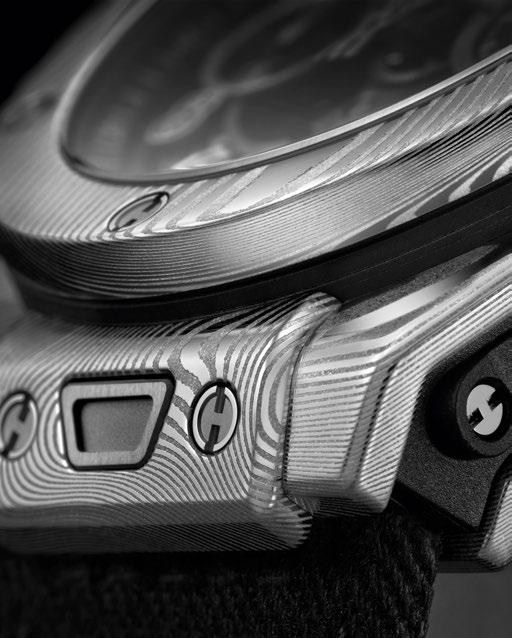
darker layers seen in the case are 304L, while the pale layers are 316L.
The novel Powder Metallurgy process was developed by Sweden’s Erasteel, which later formed the company Damasteel. The material is popular with knife makers, as it blends great strength with the characteristic patterned finish of Damascus steel.
The Big Bang Unico Gourmet features a 42 mm watchcase and a self-winding chronograph movement. It is waterproof to 100 metres and costs around €25,200.
www.hublot.com
www.damasteel.se
GM invests $918 million in US plants for new V8 engine and EV components
General Motors has announced plans to invest $918 million in four US manufacturing plants, including $854 million to prepare these facilities to produce the company’s sixth generation Small Block V8 engine and an additional $64 million in Rochester, New York, and Defiance, Ohio, for castings and components to support EV production.
These investments will enable the company to strengthen its fullsize truck and SUV business, and continue to support the company’s growing EV product portfolio.
GM’s US manufacturing operations include more than fifty assembly, stamping, propulsion, and component plants, and parts distribution centres across the US, and highlight the company’s commitment to continue providing customers with a strong portfolio of ICE vehicles, while continuing to accelerate its transformation to an all-electric future.
“Today we are announcing significant investments to strengthen our industry-leading lineup of full-size
pickups and SUVs by preparing four US facilities to build GM’s sixth generation Small Block V8 engine,” stated Gerald Johnson, GM’s executive vice president of global manufacturing and sustainability. “These investments, coupled with the hard work and dedication of our team members in Flint, Bay City, Rochester and Defiance, enable us to build world-class products for our customers and provide job security at these plants for years to come.”
GM’s Flint Engine Operations in Michigan will receive $579 million to prepare the plant to assemble GM’s sixth generation family of Small Block V8 engines along with the related block, crank and head machining. Work at the facility will begin immediately, and the site will continue building the 3.0 L turbo-diesel during the facility renovations. GM’s 3.0 L diesel is used in a variety of light-duty truck applications.
At its Bay City GPS in Michigan, GM will invest $216 million to prepare the facility to build
Höganäs AB seeks new CEO as Fredrik Emilson departs company
Höganäs AB, Sweden, has announced that Fredrik Emilson has stepped down as its president and CEO of the company. Until a successor has been appointed, Magnus Eriksson, CFO of Höganäs, will assume the role of interim CEO in addition to his other duties.

Emilson’s departure is said to have been mutually agreed with the board of directors, and follows a thirteen-year career at Höganäs, with nearly six years as president and CEO. The search for a permanent replacement is reportedly underway.
“We are thankful for the way Fredrik has expanded Höganäs, led the business through turbulent
times, and strengthened our position as the world’s leading metal powder company,” stated Magnus Hall, chairman of Höganäs. “Together with Fredrik, the board has agreed that following these active years and the conclusion of the coming strategy, now is the ideal timing for a change in leadership. We would like to thank Fredrik for his contribution and wish him all the best in his future endeavors.”
Emilson added, “After more than thirteen years with Höganäs and almost six years as CEO during turbulent and challenging conditions, I believe it is time to hand over the reins to new forces with
camshafts, connecting rods, and block/head machining supporting future V8 production at Flint Engine Operations.
Defiance Operations in Ohio will see an investment of $55 million in the Defiance facility. $47 million will be invested to prepare the facility to build a variety of block castings to support future V8 engine programmes. In addition, the investment includes $8 million to build a casting development cell to support future EV strategies.
At Rochester Operations in New York, GM will invest a total of $68 million. $12 million will be invested to prepare the facility to build intake manifolds and fuel rails for future V8 production at Flint Engine Operations. In addition, the investment includes $56 million for the production of battery pack cooling lines for EV production.
“The teams in Rochester and Defiance are also leading our transformation to an all-electric future,” Johnson added. “Their flexibility to build components for both internal combustion and electric vehicles highlights why our manufacturing team is second to none.”
www.gm.com
invigorated energy to take Höganäs to the next level. To make a smooth transition we have agreed to make a swift transfer hence I will be leaving already now. I will remember my time with Höganäs with great affection and how much I have appreciated working with all colleagues.”
www.hoganas.com
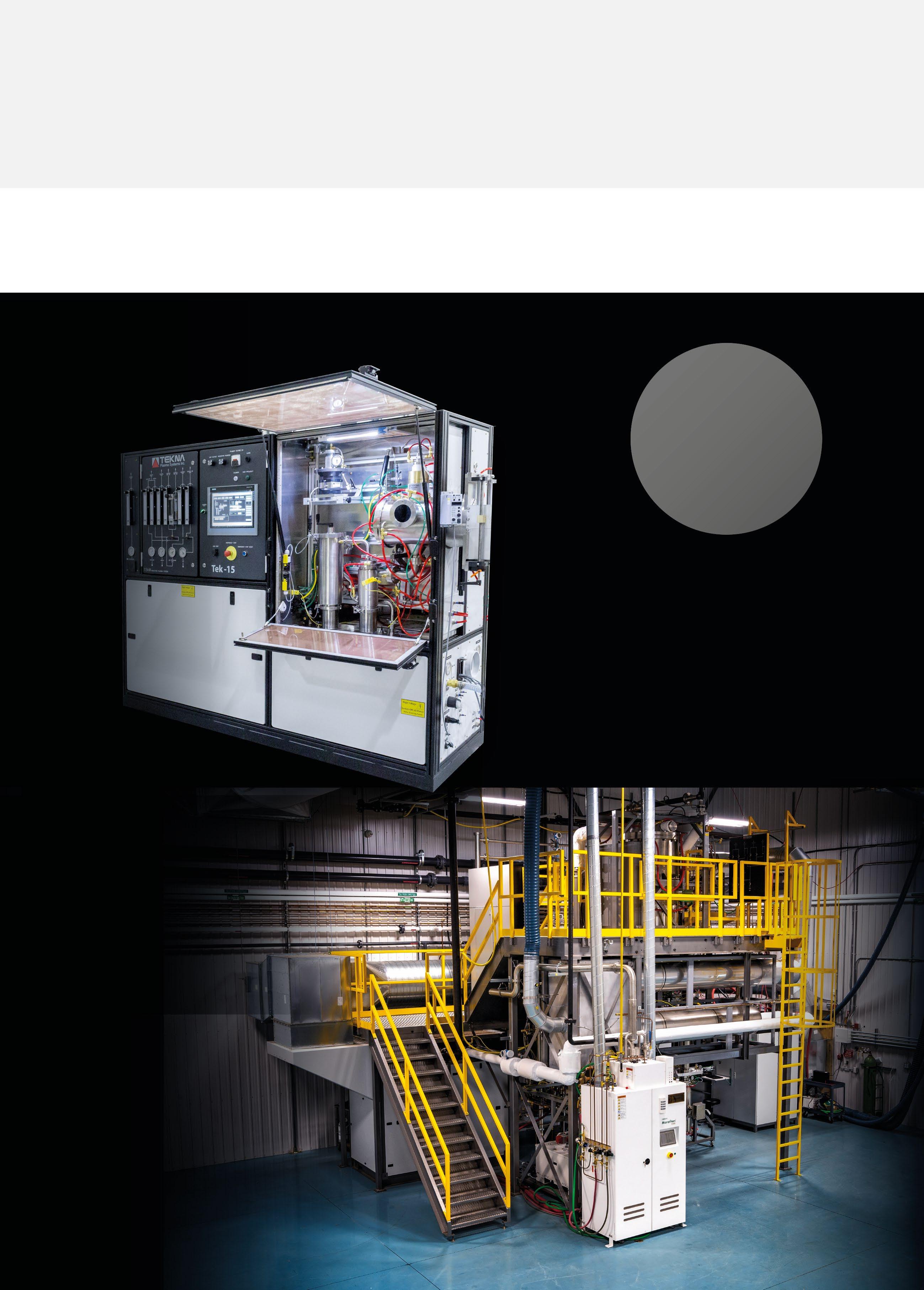
Dormer Pramet facility expansion to increase production of cutting inserts
Sandvik president Stefan Widing and Sandvik Machining Solutions (SMS) president Nadine Crauwels joined Dormer Pramet president Eduardo Martin in launching construction of a new 4,500 m 2 production hall in Šumperk, Czech Republic. A division of SMS, Dormer Pramet will use the hall as its main location for the production of cutting inserts and
tools. The site will also be home to the XP Center, a global R&D, training and testing facility.
The new hall will include two floors and annexes to increase production of inserts. Once completed, this will also allow room for upgrading existing equipment in the current production halls at the Czech site. Along with developments to the manufacturing
facility, the safety of employees is also scheduled to be improved; the new hall will feature additional changing rooms and clean spaces to maintain a safe working environment. Innovations in automation and robotisation are planned within the facility’s development to meet future demands.
Pramet also aims to improve the sustainability of the Šumperk facility. The company’s goal is to globally reduce CO 2 emissions by 50% and achieve recyclability of 90% by 2030. In line with this, the new hall will utilise photovoltaic panels installed on the roof to provide solar energy and reduce carbon emissions. There are additional plans for upgrading waste management capacity, including improved sorting to increase the reclamation of recyclable material.
A virtual tour of the Šumperk facility is available on the company website, where viewers can see the various stages of production, packaging and R&D involved in indexable insert manufacture.
www.dormerpramet.com
www.home.sandvik.com
Sven Arend named CEO of hGears
hGears AG, a global manufacturer of high-precision gears and components headquartered in Schramberg, Germany, has announced that Sven Arend has been appointed chairman of the management board and CEO of the company, replacing Pierluca Sartorello. hGears is the parent company of mG miniGears, the Italian-based Powder Metallurgy parts maker.
“As we build on hGears’ achievements to date, we are pleased to have Sven officially on board from today,” stated Volker Stauch, hGears AG chairman of the supervisory board. “He brings proven strategic and operational expertise and has an excellent track record with international organisations,
notably also in Asia and Italy. He is the ideal person to drive operational excellence and take the business to its next phase of growth.”
“We thank Pierluca Sartorello for his significant contribution to hGears over the years. In merging mG miniGears SpA, Padova and Herzog GmbH, Schramberg Pierluca played a key role in the group’s inception in 2015 and in taking the company public in May 2021. hGears’ growth strategy, which is based on the ongoing strong global expansion of eMobility, is the result of Pierluca’s entrepreneurial vision and dedication,” Stauch continued.
Commenting on his departure, Pierluca Sartorello stated, “It has been a privilege to lead hGears for the last eight years. Throughout my journey, I have been fortunate to work with many talented people
who have all been committed to the company’s success. I am very proud of what we have achieved together, and I have great confidence in Sven as my successor.”
Arend began his career at ThyssenKrupp’s automotive segment and led several companies, including Berco SpA and Brink Group, where he served as CEO.
“I am excited to take over the leadership at hGears, which offers many growth opportunities, above all in the e-Mobility area,” he added. “I look forward to working closely with the management team and all employees to strengthen hGears’ position as preferred partner for our valued customers, generating further value for our stakeholders”.
hGears operates globally with production facilities in Germany, Italy and China.
www.hgears.com

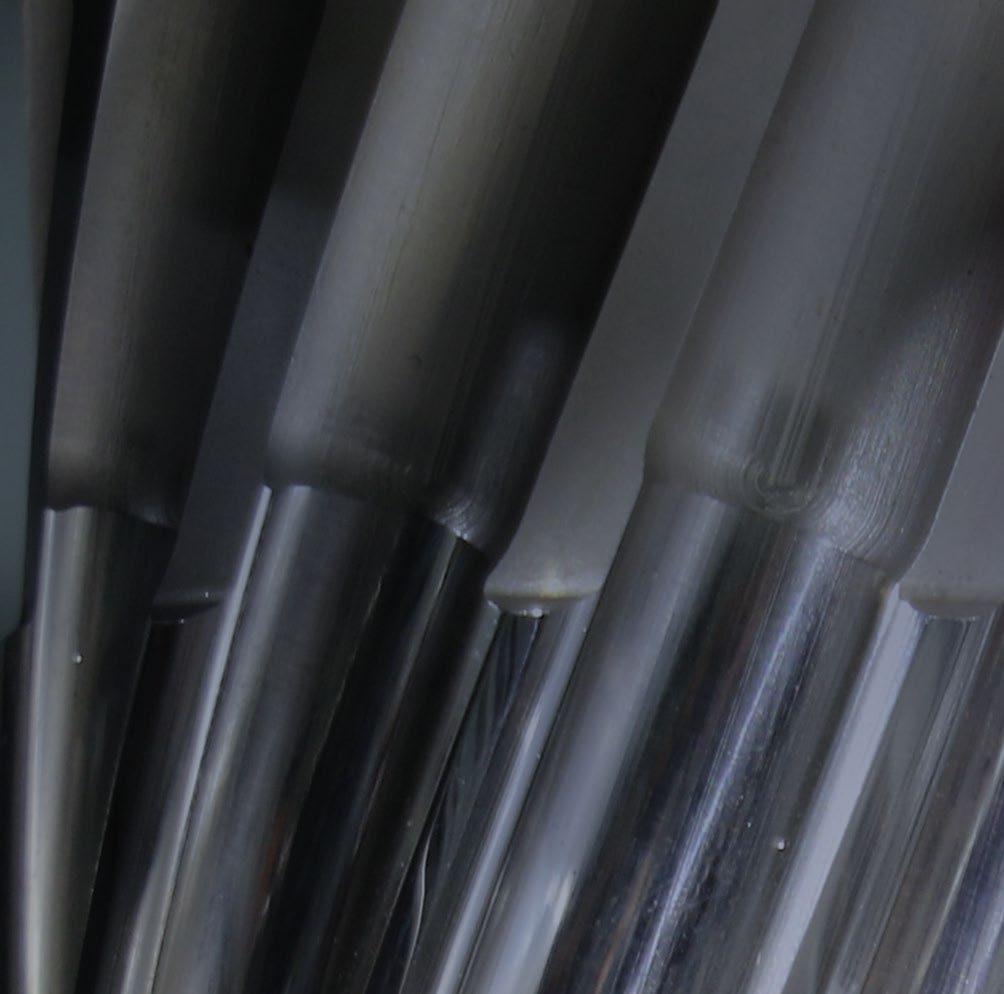
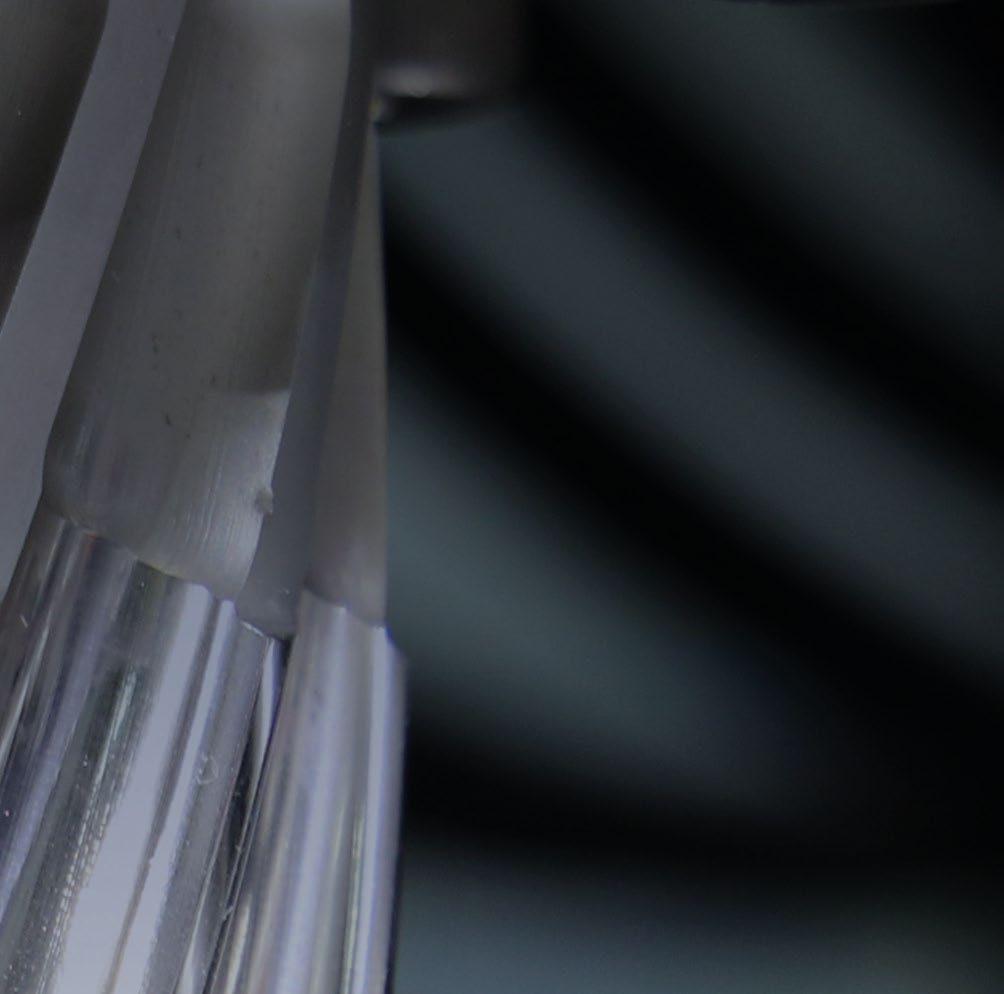



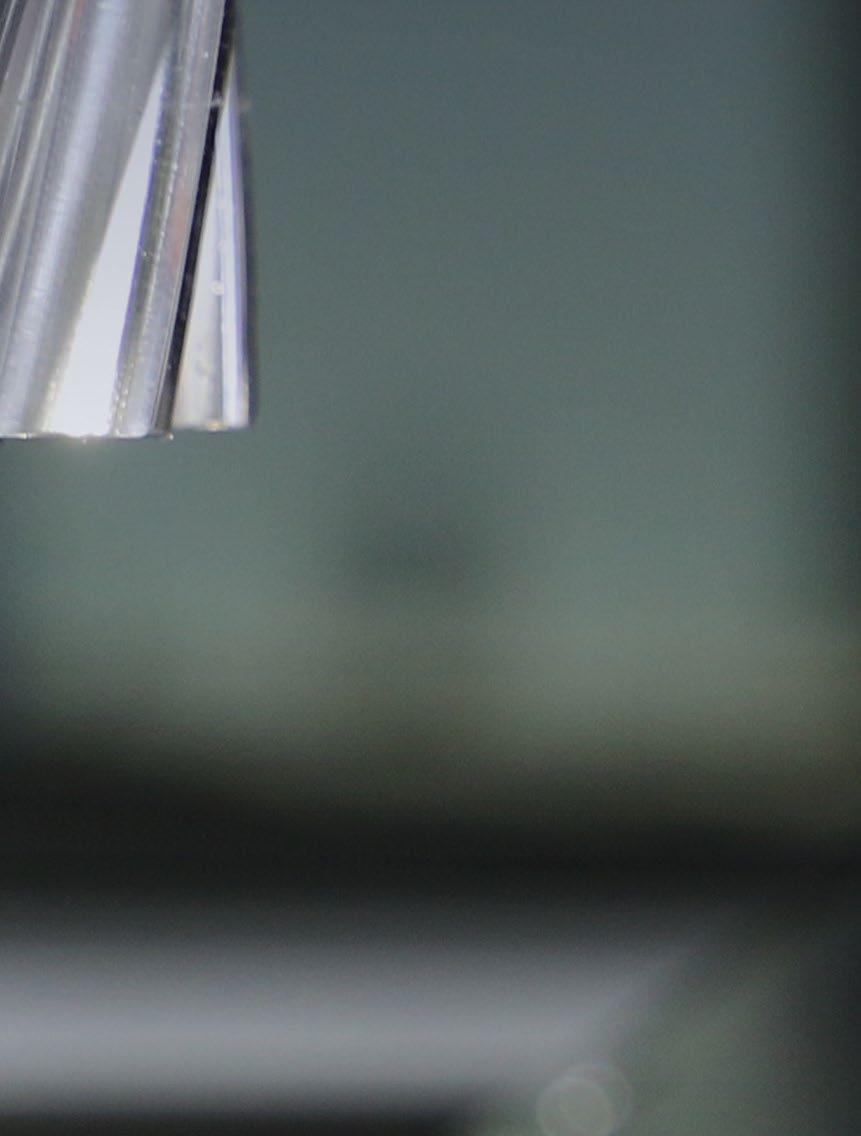

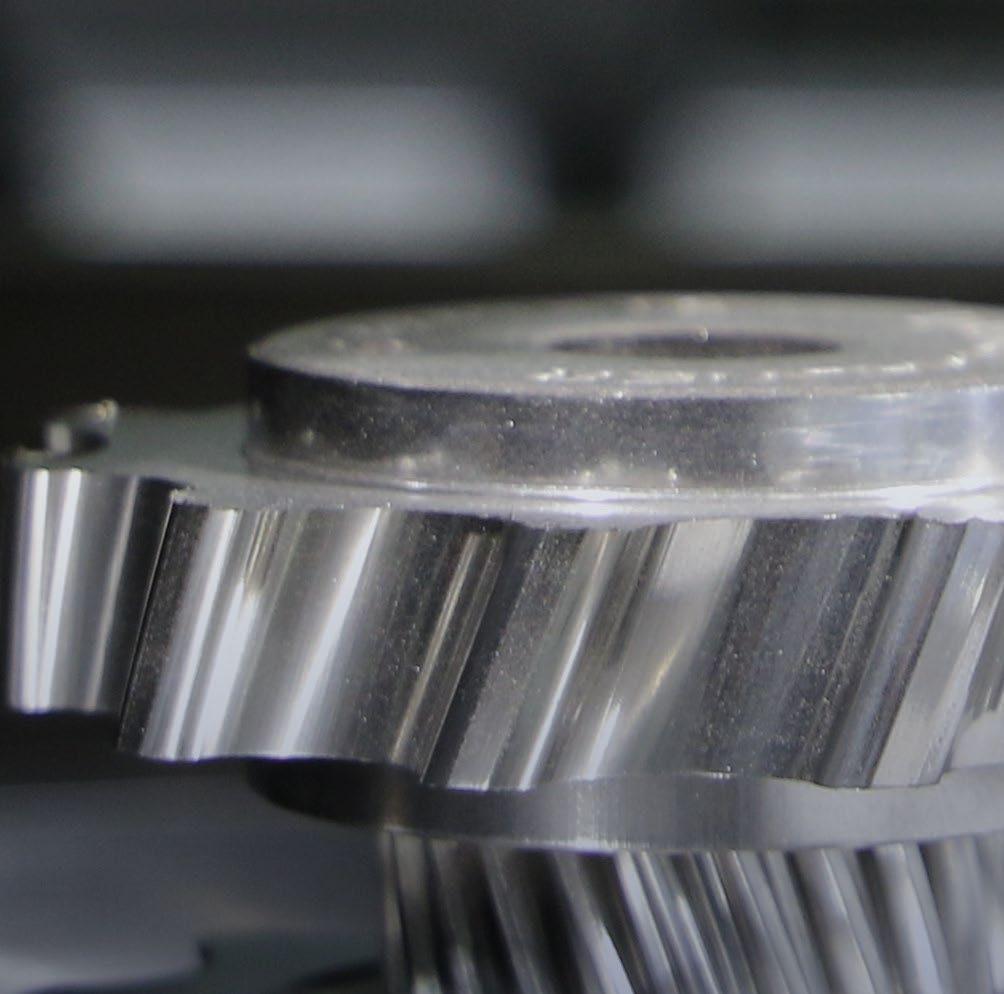




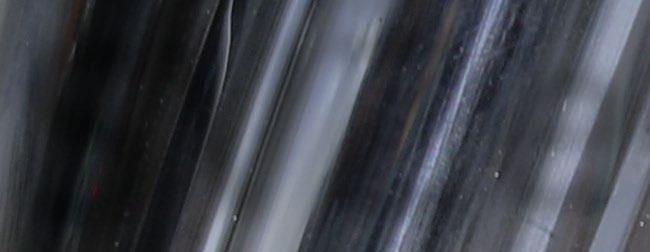


VAC confirms long-term supply agreement with GM for North American permanent magnet production
Vacuumschmelze GmbH & Co. KG (VAC), a producer of advanced magnetic materials and rare earth permanent magnets headquartered in Hanau, Germany, has announced a binding long-term supply agreement with General Motors for North American permanent magnet production. The news follows a non-binding Memorandum of Understanding (MoU) between the companies – first announced in 2021 – and will see VAC build a facility in North America
to manufacture permanent magnets for the electric motors used in GM’s portfolio of electric vehicles.
With 100 years of experience, VAC is a leading global developer and producer of advanced magnetic solutions and reportedly the largest producer of rare-earth NdFeB permanent magnets in the Western Hemisphere.
“The demand for rare earth permanent magnets and supporting technologies is intensifying at an
unprecedented rate as the world shifts to sustainable clean energy. VAC is extremely excited to be partnering with General Motors to take this important step to ensure the realisation of GM’s all-electric future,” stated Dr Alexander Barcza, VAC VP – Permanent Magnets.
VAC is in the process of establishing a North American rare-earth permanent magnet production facility to support GM for a minimum period of ten years. The finished magnets will be delivered to facilities building EV motors for GM within North America. The VAC facility is expected to start production in 2025 and create hundreds of new jobs.
“Our agreement with VAC for permanent magnet production in North America represents another major milestone in building a strong, secure, sustainable and cost-competitive supply chain to support our EV growth,” added Jeff Morrison, GM VP – Global Purchasing and Supply Chain.
Vacuumschmelze is a leading global producer of advanced magnetic materials and reportedly the largest producer of permanent magnets in the Western Hemisphere (Courtesy Vacuumschmelze)
Scott Pelhank, VAC VP – Sales, concluded, “GM’s leadership in recognising the need to develop a resilient North American supply chain creates additional resources to ensure all regions of the world will have sufficient access to core elements and technology to pivot to a cleaner global future. We are thrilled to be a part of it.”
www.vacuumschmelze.com
www.gm.com
Gasbarre Products Inc recently marked its fiftieth anniversary.
Founded in 1973 by George Gasbarre Sr, in Falls Creek, Pennsylvania, USA, the company began building and rebuilding powder compaction press equipment for the growing Powder Metallurgy market.
Since then, under the direction of Tom Gasbarre from 1999 to 2018 and Alex Gasbarre from 2019 onwards, the company has become a multi-divisional corporation with
products in the powder compaction press market, including the original mechanical press, and expanding into hydraulic, high-speed, isostatic, and electric press types.

Gasbarre also has an extensive line of industrial thermal processing systems, including continuous atmosphere to batch atmosphere and continuous vacuum to batch vacuum furnaces. Additional product lines of precision tooling, industrial automation, and
contract manufacturing round are also offered by the company. Over the past half century, Gasbarre has 4500+ units installed on six continents in sixty-four countries.
“This could not have been accomplished without the hard work and dedication by team Gasbarre and so many who have come before us,” stated Alex Gasbarre, CEO. “I know that my Grandfather, George Sr., would be proud of what Gasbarre has become today. Thank you to all who made an impact on Gasbarre over the years. Happy fiftieth!”
www.gasbarre.com
Aalberts forms new HIP, braze and heat treatment business in the US
Aalberts Surface Technologies GmbH, headquartered in Kerpen, Germany, has announced the formation of a new HIP, braze and heat treatment business unit in the US. Through a merger of two existing business units, ‘Aalberts surface technologies – Specialized Heat Treatment US’ and ‘Aalberts surface technologies – accurate brazing’, the combined companies will now operate as ‘Aalberts surface technologies – HIP | braze | heat treatment’.
Specialized Heat Treatment US was formed when Premier Thermal, Applied Process, and Ionic Technologies were rebranded as Aalberts surface technologies – specialized heat treatment US in 2022. Accurate Brazing was founded in 1989 in Goffstown, NH and has been part of the Aalberts family since 2006, rebranding as ‘Aalberts surface technologies – accurate brazing’ in 2022.

“Over the course of thirty years, Accurate Brazing has built a strong reputation, partnering with our customers in pursuit of shared success. Moving forward as Aalberts surface technologies – HIP | braze | heat treatment, we will continue that partnership, providing an even stronger portfolio of thermal processing technologies,” stated Brent Davis, formerly president of Accurate Brazing, and now serving as a Director of Operations for the new division.
The realignment includes the thirteen facilities operating as Specialized Heat Treatment US and the four facilities operating as ‘Aalberts surface technologies – accurate brazing’. With these facilities, ‘Aalberts surface technologies – HIP | braze | heat treatment’ is one of the largest providers of thermal processing and metal joining technologies in the
US. Steve Wyatt now leads Aalberts surface technologies – HIP | braze | heat treatment as its president, and rebranding activities have started and will continue throughout 2023. Day-to-day plant operations will be largely unaffected.
“The Aalberts brand is defined by its deep commitment to winning with people, mission-critical technologies, and a relentless pursuit of


excellence. Having our US thermal processing businesses operate within a single business unit creates an integrated organisation that offers a wider array of technologies to our customers. With our commitment to cutting-edge technologies and access to global resources, we are positioned well, with an eye on the future,” concluded Wyatt.
www.aalberts-st.com

MagREEsource receives €5 million boost and opens first pilot facility
MagREEsource, a spin-off of the CNRS-Institut Néel based in Grenoble, France, aims to reindustrialise the French permanent magnet industry with its hydrogen recycling process and innovative technologies for manufacturing new magnets. Already awarded
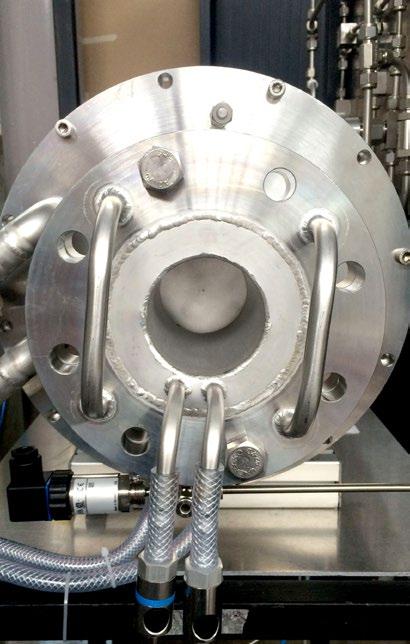
with BPI France Recovery Plan in 2020, the company has announced €5 million in financing and the opening of its first pilot facility in Grenoble.
The permanent magnet market is at the heart of several strategic issues: while demand is growing in line with sustainability needs, China has retained its monopoly on production, accounting for 95% of neodymium production and 85% of permanent magnet production based on rare earths. With the first agreement resulting from the European Commission’s Fit for 55 programme requiring 100% electric cars in Europe by 2035, and the REPowerEU plan further accelerating the deployment of renewable energies, particularly wind power, the mining of rare earths worldwide will not be sufficient, leading to an increase in production costs, or even a shortage of magnets before 2030.
a powder that can be directly reused for the manufacture of new magnets with a carbon footprint reduced by 91% compared to those produced by Chinese mining extraction.
This first 50-ton-per-year industrial pilot is expected to be operational in the second half of 2023, and will manufacture highperformance sintered magnets from recycled material, using MagREEsource’s patented hydrogen technology.
“With the ambition to open a MagFactory in 2027 with a capacity of 500 tons, we demonstrate that reindustrialisation and circular economy can solve a problem of sovereignty,” stated Erick Petit, CEO and co-founder of MagREEsource.
MagREEsource has developed a proprietary recycling technology based on a hydrogenation process
(Courtesy MagREEsource)
In an effort to ensure its own supply and the strategic autonomy of European manufacturers, MagREEsource has developed an innovative and clean technology for recycling end-of-life magnets with hydrogen, in order to recover
Ceratizit joins net-zero Science Based Targets initiative
Ceratizit Group, headquartered in Mamer, Luxembourg, has committed to setting short- and long-term targets for company-wide emission reductions in line with the sciencebased net-zero approach laid out in the Science Based Targets initiative (SBTi). In doing so, the carbide specialist furthers its ambitious sustainability strategy presented in September 2022.
“Climate change represents a challenge for all of humanity— and also requires the entire industry to rethink many areas.
For those reasons, sustainability is a top priority for us,” stated Andreas Lackner, Executive Board Spokesman.
The next step for the company is to develop science-based targets based on its own sustainability strategy and have them validated by SBTi.
The Science Based Targets initiative (SBTi) is a global body enabling businesses to set ambitious emissions reductions targets in line with the latest climate science. It is focused on encouraging and empow -
Maenhout, Investment Director at Finindus, added, “MagREEsource is a forerunner in the recycling of rare earth magnets, an essential component for the electrification of our society. The company’s technology and vision fits perfectly into the framework defined by the European Green Deal. They provide a clear response to the call-toaction launched by ERMA – the European Critical Materials Alliance – to ensure Europe’s access to the critical raw materials needed to achieve carbon neutrality.”
www.magreesource.org
ering companies across the world to halve emissions before 2030 and achieve net-zero emissions before 2050.
The initiative is a collaboration between CDP (formerly the Carbon Disclosure Project), the United Nations Global Compact, World Resources Institute (WRI) and the World Wide Fund for Nature (WWF) and one of the We Mean Business Coalition commitments. The SBTi defines and promotes best practice in science-based target setting, offers resources and guidance to reduce barriers to adoption, and independently assesses and approves companies’ targets.
www.ceratizit.com
Porvair establishes fully integrated sintered filter production cell







Porvair Filtration Group, headquartered in Fareham, Hampshire, UK, has completed the commissioning of a fully integrated Powder Metallurgy production cell at its Caribou, Maine, USA, facility to produce its sintered powder products. The new equipment is said to deliver increased capacity, reduced lead time and repeatable product quality.
The production cell combines metal powder delivery, compaction, quality inspection, statistical process control and part handling in a single automated unit. The integrated servo-electric press technology is reported to offer increased precision control of dimensional, density, flow and filtration parameters, when compared with commonly used hydraulic presses.
Porvair has manufacturing facilities in the UK and USA, with an extensive network of sales offices and distribution channels throughout the world. The company produces a range of sintered metal filters under its Sinterflo P brand. Material options include 316L stainless steel for use in temperatures up to 540ºC which, depending on process conditions, offers resistance to most chemicals. Sinterflo P media can also be produced in other grades of stainless steel and alloys such as Inconel, Hastelloy and Monel.



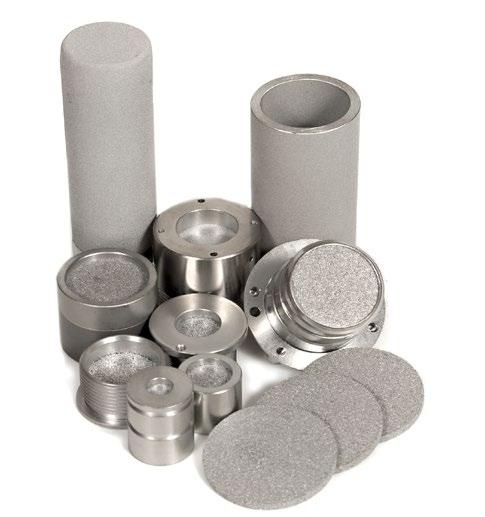
The company also offers a range of sintered porous bronze filters. Manufactured from pre-alloyed bronze, these filters can be used at temperatures of




Porvair produces a range of sintered Powder Metallurgy filters under its Sinterflo P brand (Courtesy Porvair Filtration Group)
up to 300°C and with good chemical resistance, making them the preferred medium for many filtration applications.


















www.porvairfiltration.com





ELEMENTAL ANALYSIS OF METAL POWDERS & FEEDSTOCK


ELTRA’s new and innovative ELEMENTRAC series is a mile stone for C/S and O/N/H analysis in Powder Metallurgy and Additive Manufacturing: easy to use, fast analysis times and reliable results for metal powders and processed samples.


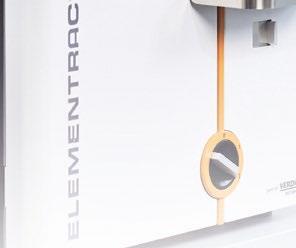




powders that make a difference.
Meeting the highest standards for drying and powder quality.
As world-leading specialists in powder engineering, we have developed exceptional Spray Drying Solutions that define and deliver superior quality powders to your exact specifications in the most energy-and-costefficient way.
Be it a powder, a granulate or an aglomerated product. GEA offers compact, single-line spray drying plants of any desired capacity. Our very own Nozzle or Rotary Atomizer technology allow us to cover a very wide size range.
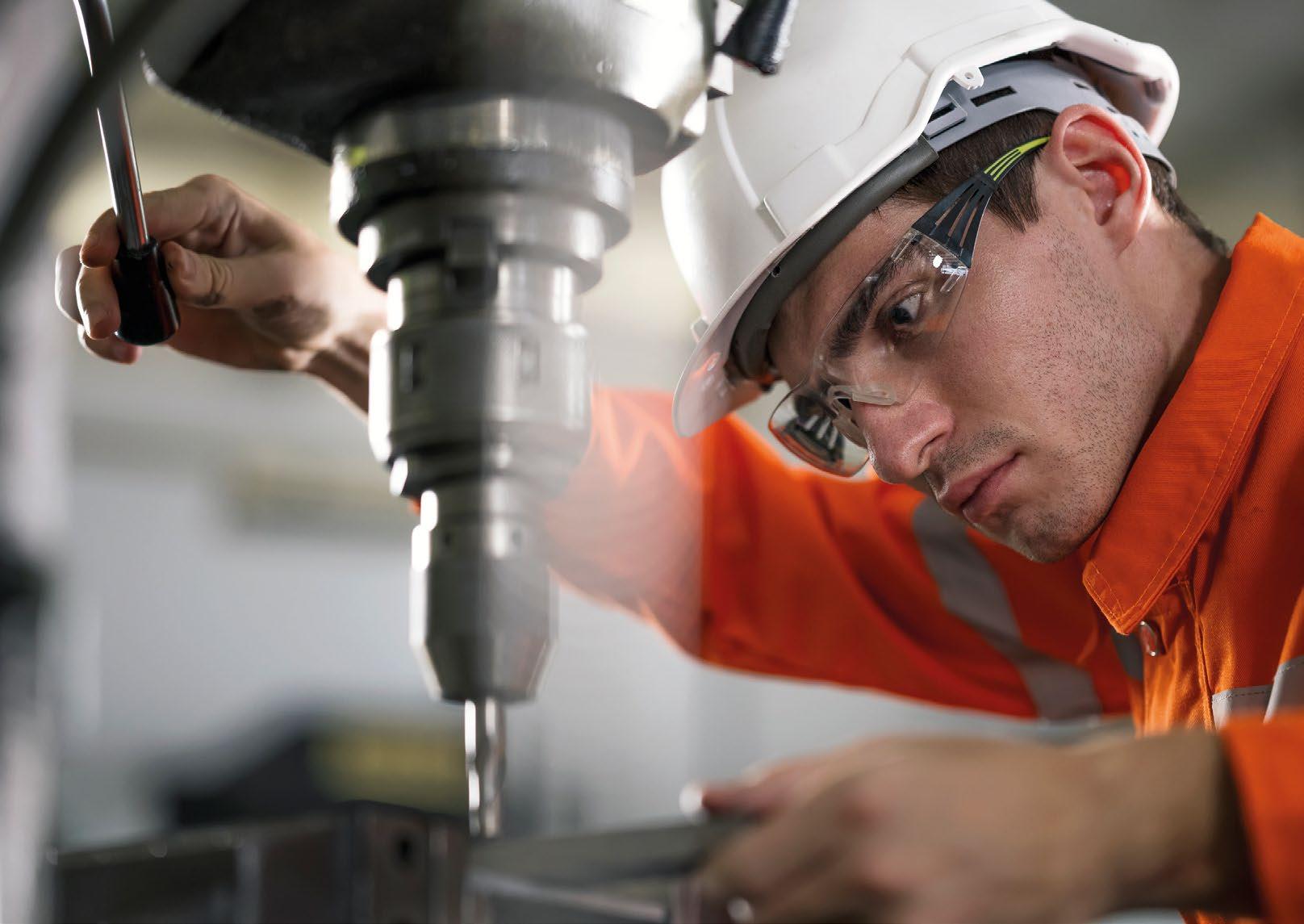
Sandvik Coromant introduces two steelturning carbide grades
Sandvik Coromant, part of the Sandvik group headquartered in Sandviken, Sweden, has announced that it is adding two new steelturning carbide grades – GC4415 and GC4425 – to its range in an effort to improve cutting speeds and reduce energy consumption. Sandvik Coromant has reported that the new grades offer an average tool life increase of 25%, in combination with reliable and predictable performance, and can minimise materialise waste.
GC4425 is said to deliver improved wear resistance, heat resistance and toughness, while grade GC4415 is designed to complement GC4425 when enhanced performance and more heat resistance is needed. Both grades are suitable for use with tough materials like Inconel and unalloyed stainless steel ISO-P grades that are complex and difficult to machine.
The GC4425 grade reputedly provides extremely high process
security through its ability to retain an intact edge line. Because the insert can deliver more pieces per edge, fewer carbides are consumed to machine the same number of components; consistency and predictability also help to minimise material waste.

With both GC4425 and GC4415, the insert’s substrate and coating have been developed to better withstand high temperatures. Both contain a second-generation Inveio® layer, a textured chemical vapour deposition (CVD) alumina (Al 2O 3) coating developed for machining. Inveio creates a strong barrier towards the cutting zone and extends the life and wear resistance of tools.
Testing
The GC4425 grade was subjected by Sandvik Coromant’s customers to pre-market tests. Among these was a general engineering company that applied both a competitor’s insert
Tekna sells two more plasma systems for highly spherical metal powder production
Tekna Holding ASA, Sherbrooke, Quebec, Canada, has signed contracts for the sale of two plasma systems, one TEK15 and one TEK40 model, which enable the development and pilot production of highly spherical metallic or ceramic powders. Amounting to a total value of CA $1.57 million, the systems will be used in a government research centre in Belgium, and by a private company in Asia for commercial R&D purposes. Delivery is expected by the end of 2023.
The TEK15 system can be used for the development of spherical powder, nanomaterials and coatings. The sold system is to be used to develop spherical powder of
various materials to be applied in Additive Manufacturing, for instance, Binder Jetting, as well as Metal Injection Moulding (MIM).
The TEK40 system is an upscaled version of the TEK15 and can be used for development or pilot production purposes. The system sold will be used to develop and produce trial-size samples of spherical refractory metal powders.
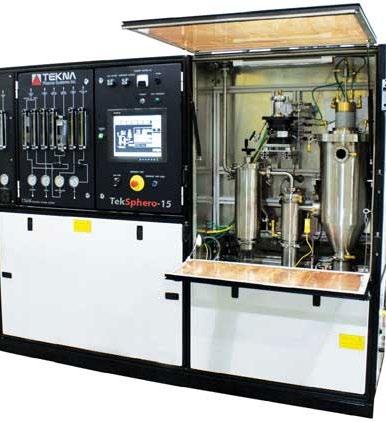
“We are excited to announce these contracts for the sales of our TEK15 and TEK40 plasma systems, which demonstrate the growing demand for our advanced materials solutions in the industry. These systems will allow our customers
and the GC4425 insert, in the manufacture of pressure rollers. An ISO-P grade was subjected to continual external axial machining and semifinishing at a cutting speed (vc) of 200 m/min, feed rate of 0.4 mm/rev (fn) and depth (ap) of 4 mm.
Manufacturers typically measure tool life by the number of workpieces machined. While competitor’s grade machined a reported twelve pieces before wearing out due to plastic deformation, Sandvik Coromant’s insert produced eighteen pieces and, in doing so, worked 50% longer with stable and predictable wear.
The company has stated that this illustrates the gains that can be achieved if the right machining elements are brought together. To help with process monitoring itself, Sandvik Coromant has also developed CoroPlus® Process Control software that can monitor machining in real-time and act according to programmed protocols if specific issues occur — for example, by stopping the machine or replacing a worn cutting tool.
www.sandvik.coromant.com
to experiment with a wide range of materials and explore different plasma environments and conditions. It is exhilarating to enable our customers’ advancements and innovations,” stated Luc Dionne, CEO at Tekna.
www.tekna.com
Amaero and Rabdan to establish metal powder production and AM in Abu Dhabi
Amaero International Limited, headquartered in Notting Hill, Victoria, Australia, and Rabdan Industries PLC, an affiliate of diversified holding company Ethmar Holdings based in Abu Dhabi, UAE, have announced an exclusive partnership for Additive Manufacturing and metal powder production in the Middle East. Forming a joint venture, the companies have established Falcon Advanced Metals PLC, a 50/50 partnership acting as a holding company
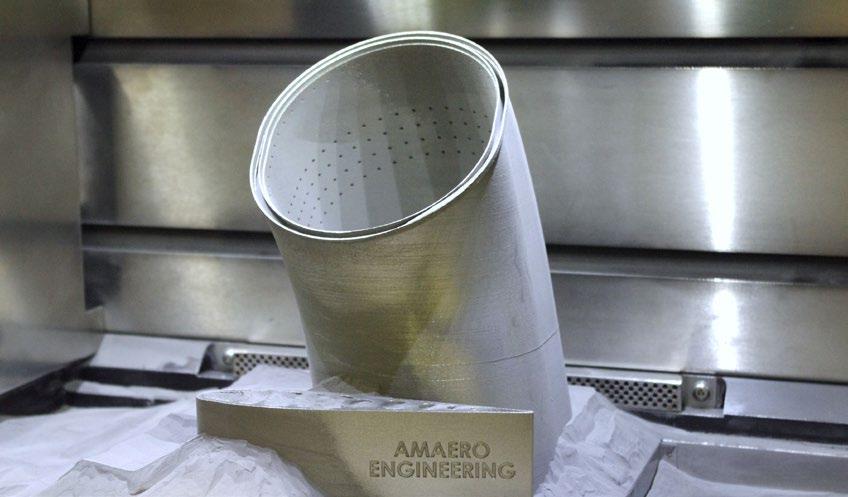
to control and own a number of further operating subsidiaries. With a budget of some AU $300 million (US $203 million), the partners plan to create an applied engineering, design and commercialisation centre in Abu Dhabi. The project includes adding largeformat AM and establishing a metal powder production facility with seven gas atomisers, four dedicated to titanium and three for aluminium, copper and superalloys.
Midhani looks to produce nickel and titanium alloy powders for aerospace Additive Manufacturing
Mishra Dhatu Nigam Limited (Midhani), in Hyderabad, India, which specialises in metals and metal alloy manufacturing, has announced its intention to produce nickel and titanium-based alloy powders for the Additive Manufacturing of components in the aerospace sector.
Dr Sanjay Kumar Jha, Managing Director and chairman, told The New Indian Express that Midhani
is planning partnerships with aerospace firms such as Boeing, Rolls-Royce and Lockheed Martin to supply products. These are hoped to be solidified by the company’s exhibiting at Aero-India 2023, which takes place February 13-17.
“Midhani is an aerospace-certified organisation, this is a good opportunity to meet the requirements of the industry,” stated Jha. “The future is to increase the
In addition, the partners will pursue a strategy to develop projects to vertically integrate the titanium supply chain, including titanium sponge, melt, mill and forge operations.
It was stated that Amaero will contribute goodwill, reputation and knowledge to the joint venture, with a licensing agreement expected to be signed for IP and know-how in respect of the project. Rabdan will contribute local knowledge and relationships, and has also committed to directly providing funding for capital expenditure at the project level and/or to indirectly secure funding from Abu Dhabi-based strategic groups.
“After spending three months in the UAE and countless hours with our partners, I couldn’t be more excited about embarking on the next chapter of Amaero’s growth and development with Rabdan Industries,” stated Hank Holland, Amaero’s chairman and CEO. “Our partner brings deep knowledge and relationships in the UAE, as well as in the Kingdom of Saudi Arabia. Moreover, Falcon Advanced Metals’ capabilities and growth strategy closely align with the UAE’s priority economic and industrialisation initiatives.”
www.amaero.com.au
base in aerospace, space, defence, as well as energy – and, as part of this, a three-metre wide plate mill, eight-tonne vacuum induction melting, skull melting, cold roll products and other facilities will be produced from here.”
Midhani is recognised as one of India’s leading manufacturers of special steel and superalloys, and is reported to be the only Indian manufacturer of titanium alloys. Currently, Midhani’s Hyderabad plant features primary and secondary melting furnaces and retains an armoured unit in Rohtak, Haryana.
www.midhani-india.in



Masan High-Tech Materials and HC Starck Tungsten Powders combine R&D activities
Masan High-Tech Materials Group, headquartered in Ho Chi Minh City, Vietnam, and HC Starck Tungsten Powders, based in Goslar, Germany, are bringing together their research and development activities with the establishment of an international innovation hub. Established January 2023, the innovation hub consists
of approximately forty specialist employees based at both the Goslar site and at Masan Tungsten LLC in Thai Nguyen, Vietnam.
The combined team will focus on application research in pyro- and hydro-metallurgy; the optimisation of existing processes and products; and the development of new, disrup -
Siobhán Duffy appointed new CEO of Element Six
The Board of Element Six has announced the appointment of Siobhán Duffy as its new CEO, effective February 1, 2023. Duffy is currently the company’s Executive Director for Sales and Marketing, and has been with Element Six for over thirty years.
Since joining Element Six in 1989 as Quality Engineer in Micron Production, and then moving into Business Management for the Precision Grinding and Micron unit, Duffy has held a series of senior management positions, leading the oil & gas business unit and, subsequently, heading the Element Six Innovation function as Executive Director from July 2014.
Under her stewardship, the innovation teams at Element Six
accelerated the company’s journey towards new applications and technologies, leading to significant milestones in established industries, as well as important developments in new areas of emerging technologies. Duffy is said to possess a wealth of synthetic diamond and tungsten carbide experience and has consistently supported customers throughout the development of engineered advanced material solutions for their given industrial technology applications.
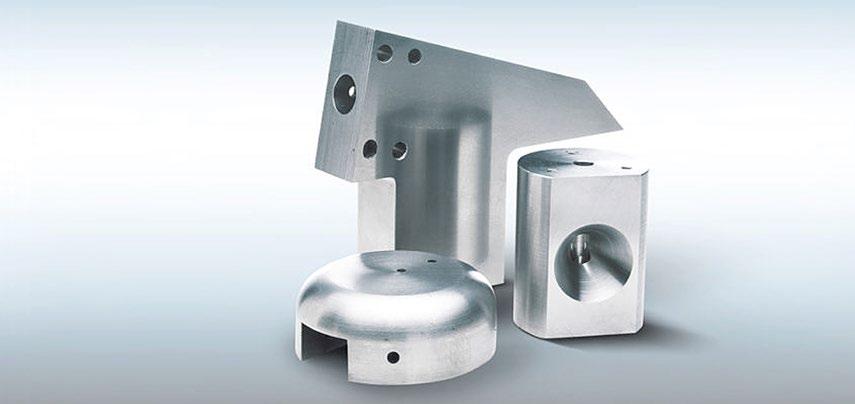
Following her appointment, Duffy stated, “I am excited to progress the work we started and take the company and our teams forward. The successes achieved over the years would have not been possible
tive solutions and technologies. Responsible for the integration and leadership of the expanded organisation is Julia Meese-Marktscheffel, who has led the Technology & Innovation Global (TIG) division at HC Starck Tungsten Powders since its spin-off from the HC Starck Group in 2016.
The combined resources and capabilities are intended to strengthen the company’s innovation processes, and further investments in laboratory equipment and qualification measures are planned, especially at the Masan Tungsten LLC APT factory.
“The integrated organisation will secure our technological leadership in tungsten along the entire value chain and, in addition, open up new, profitable business areas beyond tungsten,” stated Meese-Marktscheffel. “The interaction of different cultures will help us to develop and realise new ideas for trends such as electromobility or a circular economy even more effectively in the future.”
HC Starck Tungsten Powders sold to Masan Resources in 2020, a subsidiary of the Masan Group.
www.masanhightechmaterials.com
www.hcstarck.com
without them and I firmly believe that passionate, talented people are the best, most important asset a company could ask for. By pulling together, I look forward to accelerating Element Six’s journey of growth, maintaining what the business is good at, while seeking new opportunities and partnerships along the way.”
Commenting on the announcement, Bruce Cleaver, CEO, De Beers Group and chairman, Element Six, added, “I congratulate Siobhán on her appointment as CEO of Element Six. Siobhán brings over thirty years of international leadership and experience and is the ideal candidate to continue driving the company’s strategic journey, nurturing existing partnerships and fostering new exciting opportunities for the business.”
www.e6.com
ASIMCO relocates headquarters to Nanjing
Automotive parts producer ASIMCO Group has officially relocated its group headquarters to Nanjing, the capital city of China’s Jiangsu province.
ASIMCO is one of the leading automotive parts manufacturing groups in China, supplying commercial vehicle and passenger car companies in China and overseas.
The company utilises Powder Metallurgy to manufacture a range of parts for the commercial, off-highway, passenger, and electric vehicle markets. Components produced include piston rings, valve seats, parts for passive safety systems (such as airbag, seatbelts), parts in braking systems, inner gear rings, planet and sun gears.
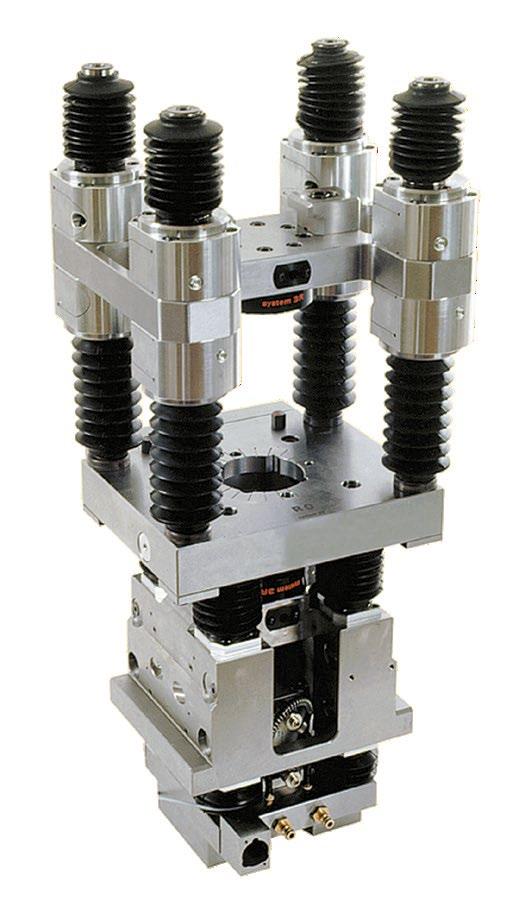
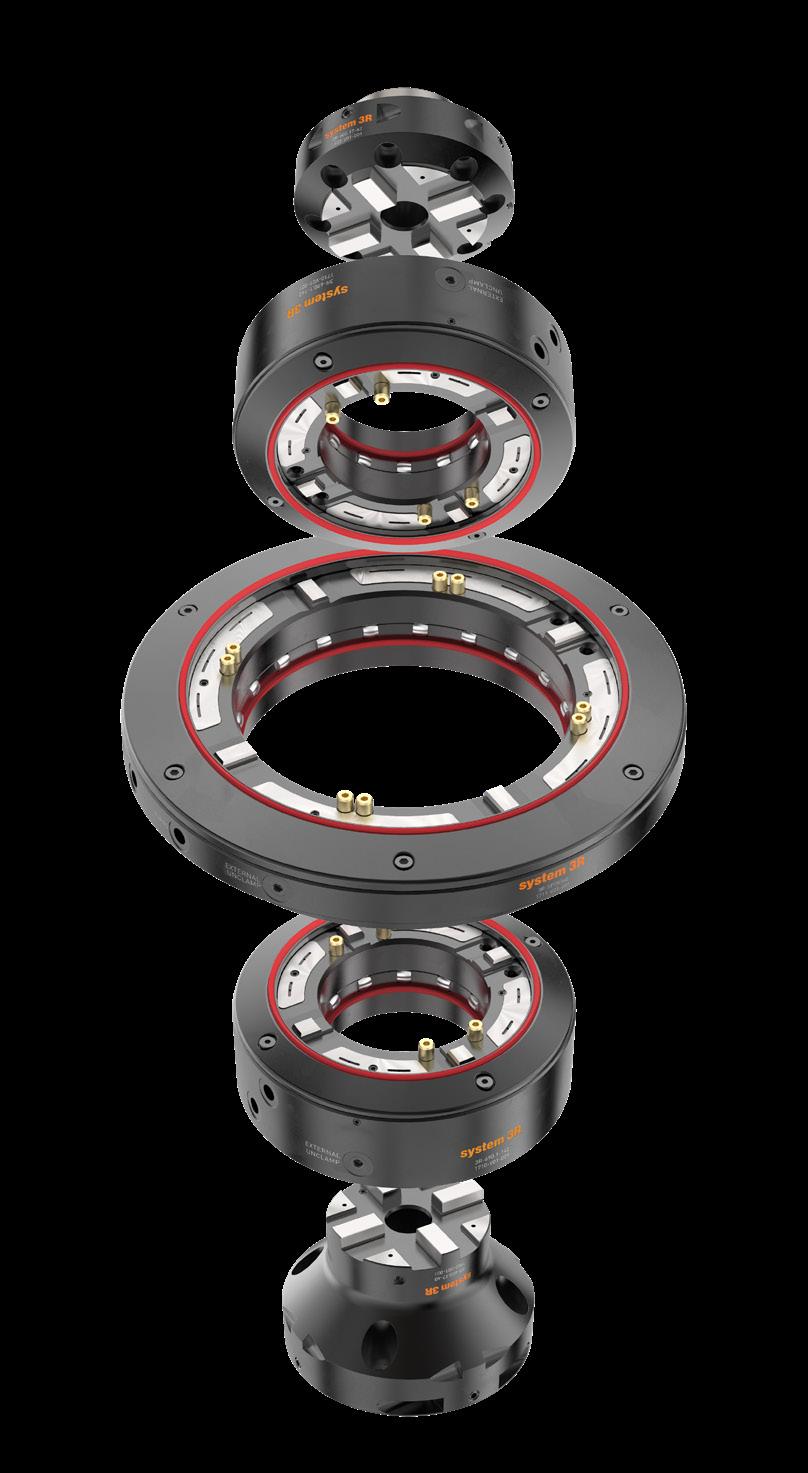
www.asimco.com

Centorr Vacuum names Chief Operating Officer
Centorr Vacuum Industries, headquartered in Nashua, New Hampshire, USA, has promoted Randy Fellbaum to the position of Chief Operating Officer.
Fellbaum joined Centorr in 1997 as an Electrical Engineer before rising to the Manager of the Electrical Engineering Department. With experience in instrumentation and controls technologies, Fellbaum reportedly led Centorr’s efforts into computer-controlled HMI implementation in the early 2000s. Prior to his work with Centorr, Fellbaum worked for Saint-Gobain Diamond Film, where he headed the Furnace Deposition Team.
Fellbaum has a BS in Computer Science from Franklin Piere College, Rindge, New Hampshire, and two AS degrees in Industrial Electricity and Industrial Electronics. www.centorr.com
Wall Colmonoy appoints Surfacing Products manager
Wall Colmonoy, headquartered in Madison Heights, Michigan, USA, has announced that Josh Gardner is now Business Development Manager – Surfacing Products of the Alloy Products Americas’ Sales Team.
In this role, Gardner will be responsible for expanding product applications for new and existing surface coating customers. He will work alongside the sales team to perform technical inputs for surfacing and thermal spraying techniques, including laser cladding, PTA, HVOF and spray & fuse.
Gardner has over twenty-three years’ experience in thermal spraying, laser cladding, PTA welding, HVOF and sales applications for oil & gas, mining, agriculture and aerospace industries.
www.wallcolmonoy.com
Osterwalder opens Asia Engineering Center in Shanghai
Osterwalder AG, Lyss, Switzerland – alongside partners Agathon AG and Bruker Alicona – has reported the opening of the Asia Engineering Center (AEC) in Shanghai, China.
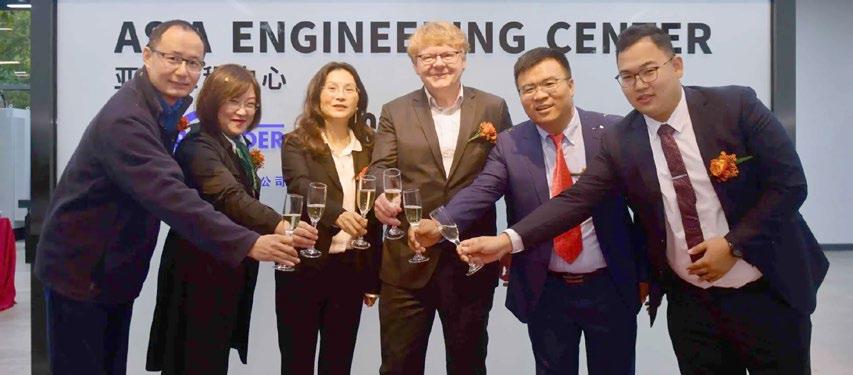
Osterwalder offers a wide range of servo-electric Powder Metallurgy compaction presses with single and multi-platen options. The company has also developed a fully integrated production cell to offer significantly improved productivity to manufacturers of powder compacted parts. The Smart Press Cell combines the processes of powder pressing and
parts handling and is available for all single-platen powder presses with a pressing force of 80 to 2000 kN.
The AEC location features press cells and other processing machines which will allow those interested to explore the technology in person. Customers can carry out press tests, develop new applications, and receive various levels of training on the latest machines.
www.osterwalder.com
www.agathon.ch
www.alicona.com
Globe Metal adds metal Additive Manufacturing waste recycling
Globe Metal, a recycler of metals based in Saint-Catherine, Quebec, Canada, now offers the handling and recycling of waste material produced via the metal Additive Manufacturing process. The company is aiming to reduce the environmental and financial impact of Additive Manufacturing through its range of hazardous waste services.
Building on its experience within traditional industrial manufacturing, Globe Metal has begun working with an increasing number of Additive Manufacturing companies, including those producing parts for the aviation, aerospace, medical, dental, automotive sectors. For its part, Globe Metal recycles these companies’ metal waste, which includes titanium and its alloys; copper, aluminium, and nickel- & cobaltbased cobalt alloys; tool steels, stainless steels, and precious metal alloys like gold, platinum, palladium and silver.
PMG’s Leader Yangzhou receives supplier and performance awards from Tenneco
Leader Yangzhou, headquartered in Yangzhou City, China, and now part of Powder Metallurgy parts maker PMG Group, was awarded Annual Excellent Supplier Award and Outstanding Performance Award at the 2022 Tenneco Supplier Day. These awards are intended to recognise the company’s commitment to service and performance to Tenneco.
Tenneco is a leading manufacturer of shock absorbers and exhaust systems for major global automotive brands. For a number of years, Leader Yangzhou has provided Powder Metallurgy shock absorber components to Tenneco, with a
reported focus on quality, delivery and cost competitiveness.
“PMG would like to thank the Yangzhou team for their exceptional efforts in exceeding the expectations of Tenneco,” it was stated. “Great job!”
The 35,000 m 2 facility in Yangzhou employs 270 and is IATF 16949:2016 certified. The location undertakes powder mixing, compacting, sintering, sizing, machining, steaming, piston banding, rod guide assembly and cleaning to produce a range of shock absorbers.
Leader Yangzhou was purchased by PMG Group in January 2022. www.pmgsinter.com
In addition to this new service, Globe Metal also offers recycling of metal powders to local and international customers. The company can recycle scrap nickel powder, scrap cobalt powder, scrap molybdenum powder, scrap tungsten carbide powder, brass powder, bronze powder, copper powder, iron powder, stainless steel powder from stainless and steel mill scale.
Globe Metal handles mixed materials in compliance with all required permits and provides documentation of recycling and destruction, helping companies avoid costly fines and investigations which could interfere with productivity. Its services include waste audit, metal testing & analysis, logistics, metal reclamation, recycling, disposal and suggestions for on-site waste handling and management.
www.globemetal.com
ADDING VALUE TO ADDITIVE MANUFACTURING
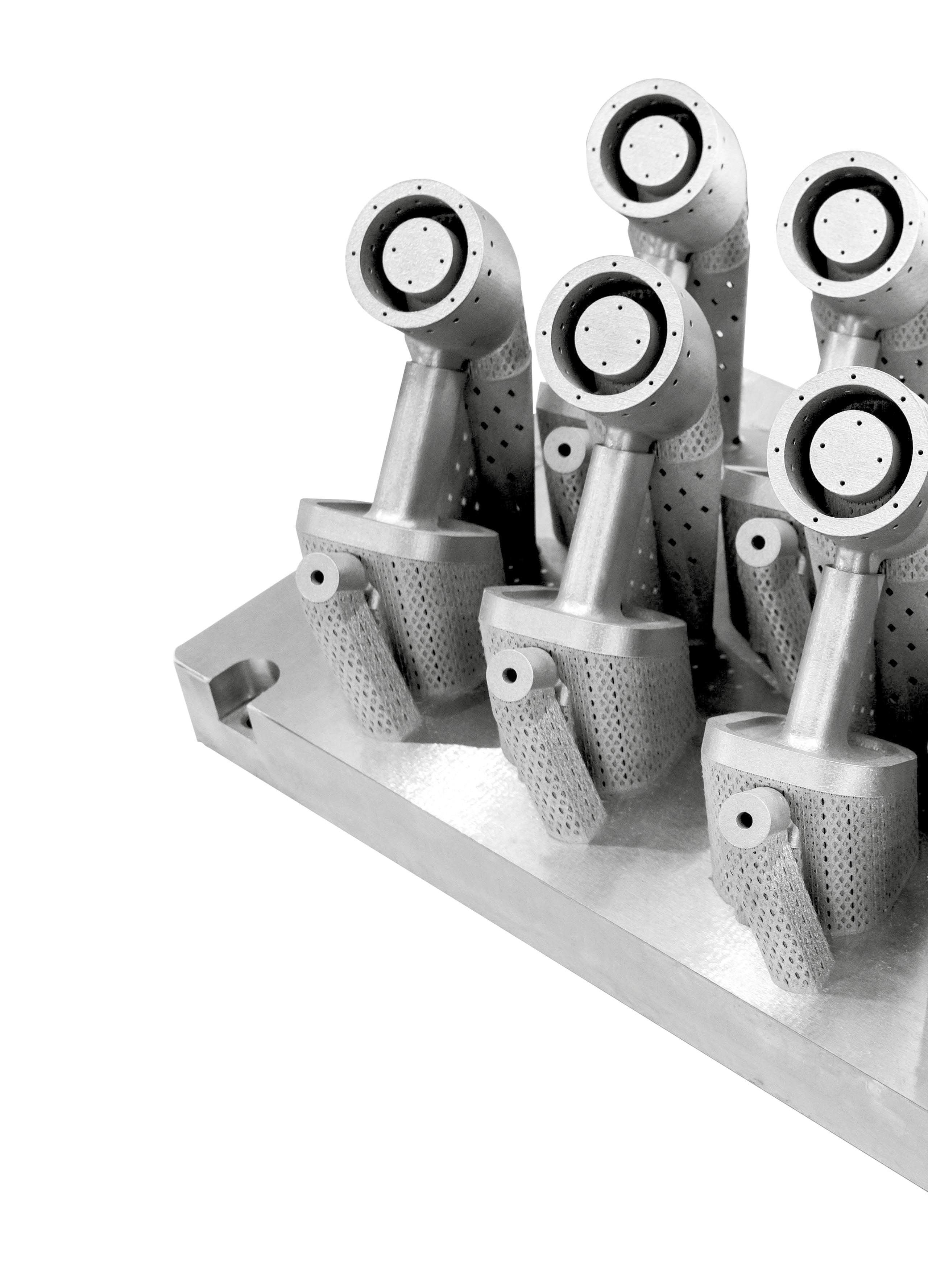
Bodycote provides a complete service solution for metal parts built by the additive manufacturing process, including stress relief to minimise distortion and residual stress, EDM to prepare the component for hot isostatic pressing (HIP), heat treatment or HIP to remove microporosity, and associated quality assurance testing.
Reduction in rejection rates and inspection costs
Fatigue properties on par with wrought material
Significant improvement in fatigue strength, fracture toughness, and tensile ductility
100% reduction in porosity possible
Improved machined surfaces and consistency in properties
Improved microstructure
the partner of choice for additive manufacturing
heat treatment | metal joining | hot isostatic pressing | surface technology
www.bodycote.com
PVA TePla AG delivers its largest sinter-HIP machine
PVA TePla AG, Wettenberg, Germany, announced that, at the end of 2022, it delivered the largest sinter-Hot Isostatic Pressing (HIP) machine in the company’s threedecade history. The horizontally designed system features a usable length of 3600 mm.
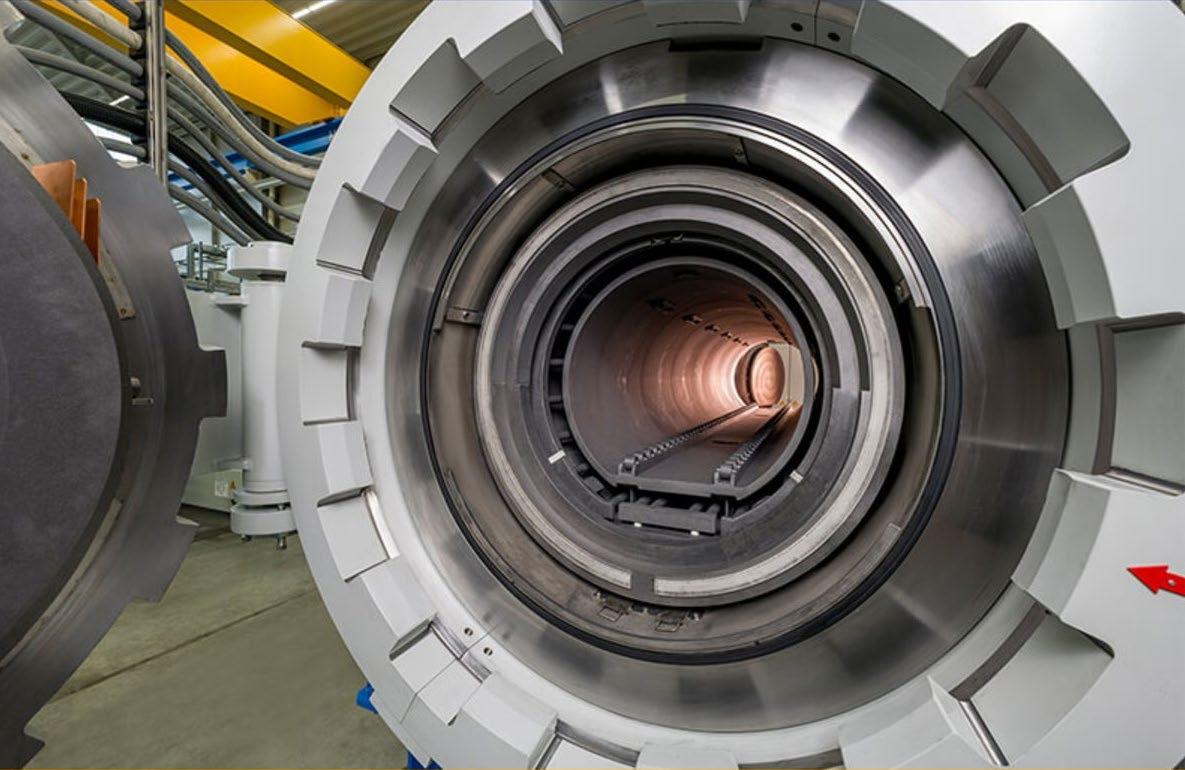
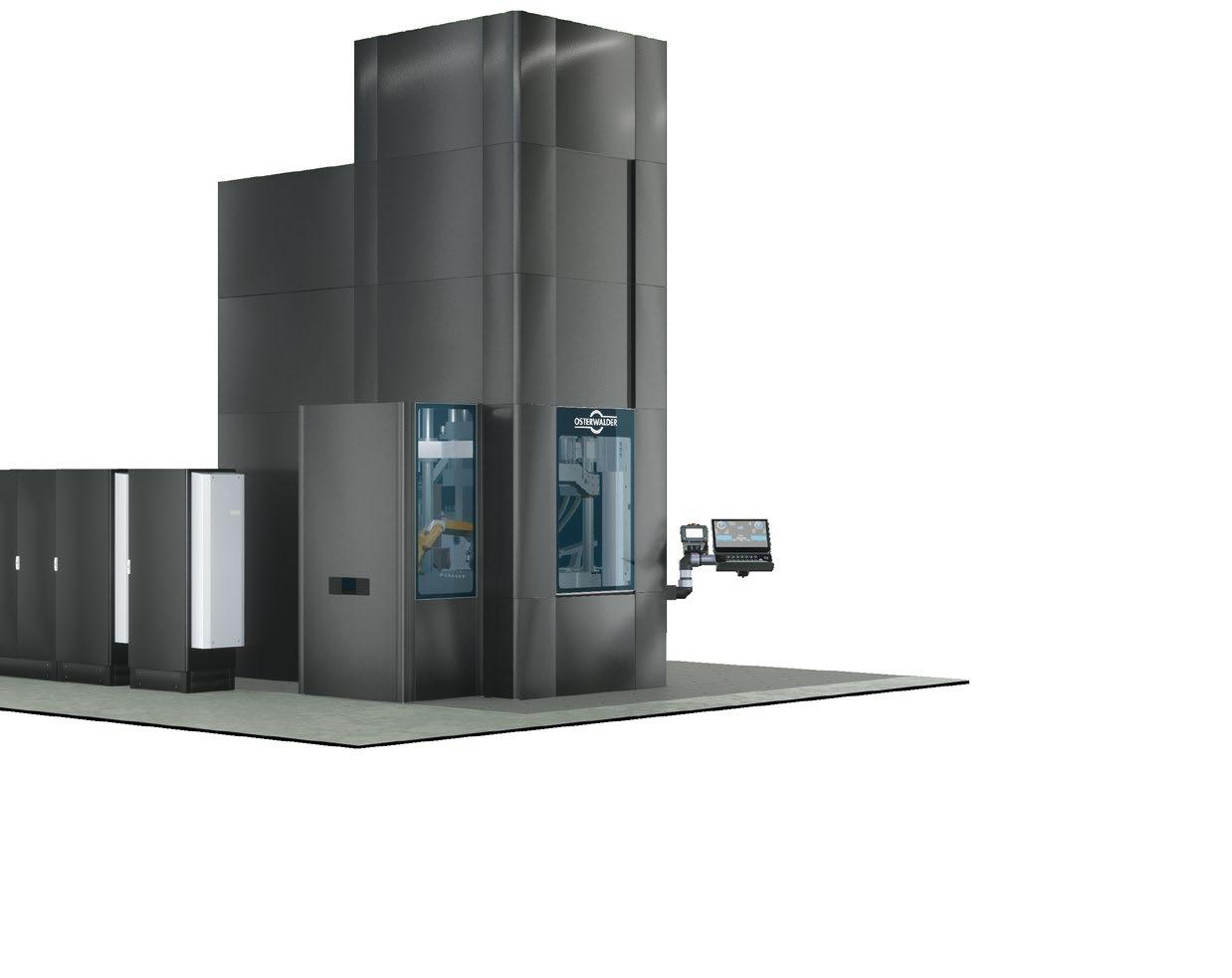
The HIP machine was delivered to a member of a large international hardmetal group and is operated at a production site in Italy. The customer is said to primarily use the machine for the sintering and HIPing of carbide rods, which are later processed into rotating tools for metalworking.
Since 1990, the company has supported manufacturing processes and technological developments in the semiconductor, hardmetal, electronics, and optical industries.
Increasingly, PVA TePla’s focus has included forward-looking fields such as energy, photovoltaics and environmental technology. The company’s largest machine is said to have been built based on a desire to enable more sustainable carbide production.
PVA TePla added that the final commissioning of the new HIP machine, and handover to the customer, was planned to take place towards the end of January 2023.
www.pvatepla.com
The Future of Powder Compacting
EPoS raises $2.2M to build first industrial-scale electro-sinterforging machine
EPoS Technologies, Villaz-SaintPierre, Switzerland, has raised CHF 2 million (US $2.2 million) in a pre-Series A funding round, led by Nivalis Group, for the continuing development of its novel electrosinter-forging process.

Aslo referred to as eForging, the electro-sinter-forging technology developed at EPoS is said to enable users create completely new materials, and to produce parts with unprecedented precision, functionalities, density, and strength.
The new investment from Nivalis Group marks the start of a new development phase for EPoS, which intends to use the funds to strengthen its team, build the first industrial-scale electrosinter-forging press and start the commercialisation of components
and materials. The target for the new machine is to achieve a productivity of one part every five seconds and to double the size of the components that can be manufactured.
Nivalis Group president, Christophe Fragnière stated, “We believe that, with their leading-edge technology and the highly-skilled team, EPoS has the potential to become an indispensable and invaluable partner to key players in various industries.”
The startup company reports it has already attracted interest from a few highly engaged clients who are actively investing in new eforged products.
“Thanks to the commitment of the Nivalis Group, its directors, EPoS historical investors and the key people at EPoS, we are finally close to seeing the first industrial grade
electro-sinter-forging machine to produce novel parts and showcase what electrification can do when applied to powder technologies,” added Alessandro Fais, EPoS CEO and founder. “We are on the brink of a breakthrough that will have a profound impact on the manufacturing world and how new materials and components are developed.”
www.eposintering.com
PARTICLE CHARACTERIZATION OF METAL POWDERS
Determine BET surface areas of metal powders quickly, accurately, and economically with MICROTRAC’s BELSORP MINI X Sorption Analyzer:
I Mass-related surface area as specific surface area (m²/g) is an important parameter in the evaluation of metal powders with regard to their processability.

I Simultaneous measurement of up to 4 samples with high precision.
I Rapid determination of BET surface areas with up to 12 analyses per hour - perfect for quality control of fine powders with high sample throughput.
www.microtrac.com
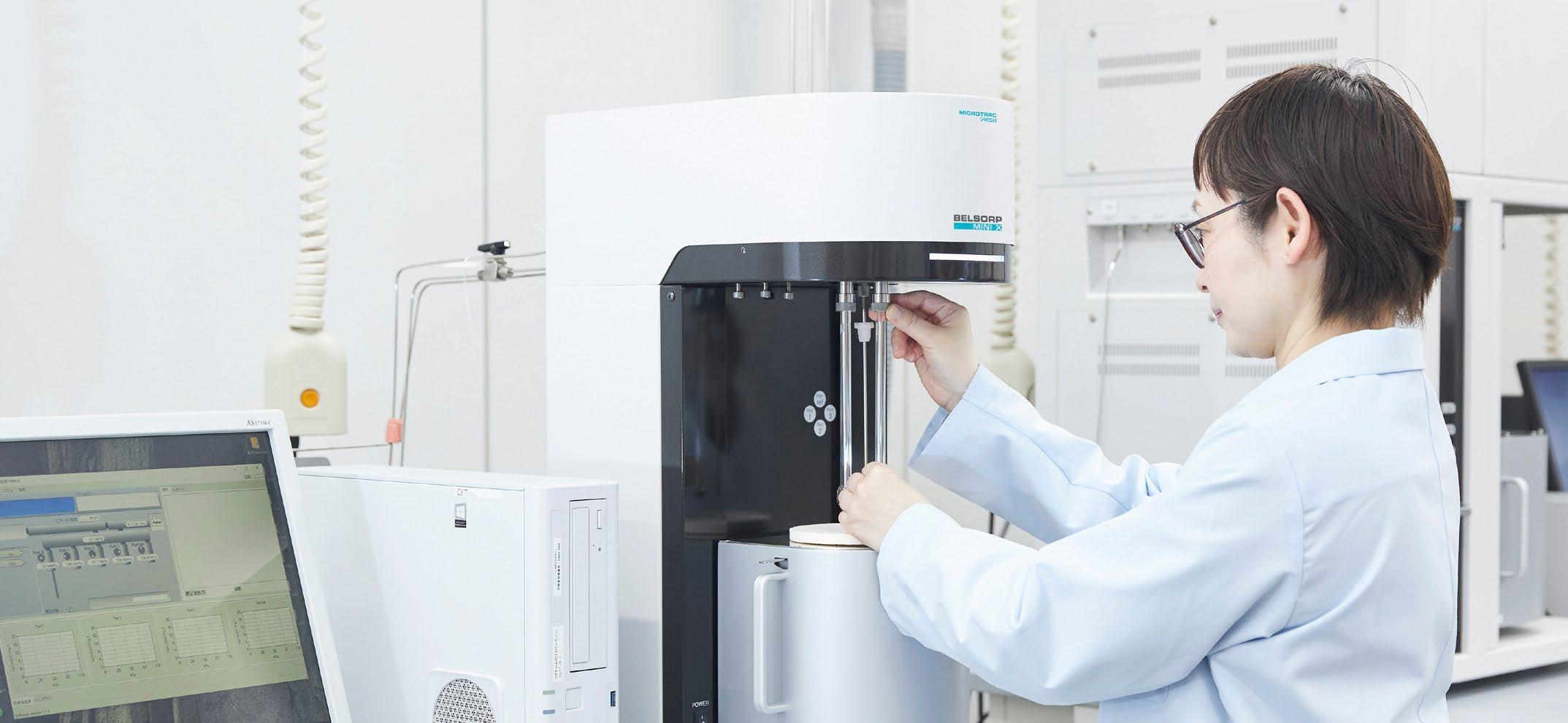
ACEA reports overall drop in EU car registrations in 2022, despite December boost
The European Automobile Manufacturers’ Association (ACEA) has reported that car registrations in the EU expanded by 12.8% in December, marking the fifth consecutive growth month in 2022. Overall in 2022, however, the EU passenger car market contracted by 4.6%, mainly as a result of component shortages early in the year.
Despite December’s overall positive result, only two of the region’s four major markets recorded growth: Germany (38.1%) and Italy (21%). Spain saw a substantial decline of 14.1%, while France remained roughly stable, falling just 0.1%. Although the market improved from August to December 2022, cumulative volumes are at 9.3 million

India becomes world’s third largest auto market
India has become the world’s third-largest automotive market for the first time. With vehicle sales totalling approximately 4.25 million units during 2022, the region has narrowly overtaken Japan and sits behind the USA (second) and China (first). China overtook the US to become the world’s largest automotive market in 2009, having surpassed Japan in 2006.
From January-November, the Society of Indian Automobile Manufacturers (SIAM) reported that new vehicles totalled 4.13 million. Adding December’s sales volume reported by Indian carmaker Maruti Suzuki brought the total to 4.25 million. According
to Nikkei Asia , India’s vehicle sales volume is expected to rise more, pending Q4 commercial sales figures and year-end results from other automakers.
India’s auto market has fluctuated in recent years; roughly 4.4 million vehicles were sold in 2018, but this volume dropped below 4 million units in 2019. When the COVID pandemic triggered lockdowns in 2020, vehicle sales dropped again to below 3 million units. While sales began to recover in 2021, the chip shortage meant numbers didn’t reach 4 million units. A recovery from this shortage is said to have enabled the recovery in 2022, though electric-only vehicles only play a small part in Indian vehicle sales.
units, the region’s lowest level since 1993, which saw 9.2 million units registered.
Among the top EU markets, only Germany posted growth (1.1%) for the full year 2022, bolstered by the strong result in December. The other three markets all declined year-onyear, with Italy noting the steepest decline (down 9.7%), followed by France (7.8%) and Spain (5.4%).
January 2023 sees growth
Starting the new year on a positive note, ACEA reported that the January 2023 EU passenger car market grew by 11.3% to 760,041 units. However, this was largely due to an unusually modest base of comparison in 2022, when the lowest January volume on record was reached.
At a country level, the region’s positive performance was reflected in three of the four key markets. The strongest gains were seen in Spain (up 51.4%) and Italy (up 19.0%), followed by France, with a more modest but still solid growth (8.8%). The exception to this trend was Germany, which recorded a 2.6% decline for the month.
www.acea.auto
Currently, India is home to approximately 1.4 billion people, and is anticipated to meet and surpass China’s population this year. In 2021, according to Euromonitor , only 8.5% of Indian households owned a passenger vehicle, however there is extensive room for sales growth. The government has also begun to offer subsidies for electric vehicles amid petroleum trade deficits.
In Japan, approximately 4.2 million vehicles were sold last year, down 5.6% from 2021, according to data from the Japan Automobile Dealers Association and the Japan Light Motor Vehicle and Motorcycle Association. Japan’s auto sales peaked in 1990 at 7.77 million units; the country’s declining population offers little prospect for a significant recovery in sales in the foreseeable future.
Global Tungsten & Powders
Security of supply
High quality and purity
Responsible sourcing
Tolling services
Recycling services
Think Tungsten. Think GTP.
Whatever you create out of tungsten, be sure to start with the best powders on the market.
Whether for additive manufacturing, hard metals industry, oil/gas, tungsten metal, or tungsten heavy alloy applications, Global Tungsten & Powders offers the perfect powder blends. Our laboratories are equipped with the latest technologies allowing material measurements down to the atomic level.


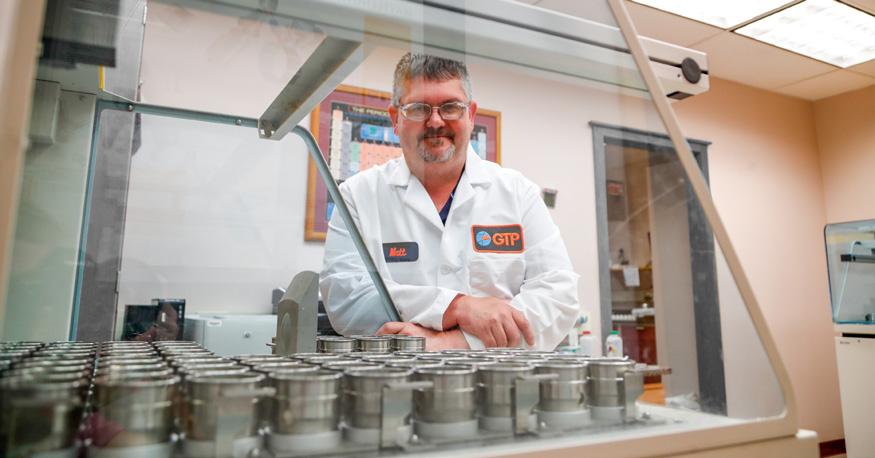
Additionally, GTP recycles any tungsten containing scrap you may have on hand. Benefit from our long standing expertise, especially in utilizing the zinc process for the recycling of tungsten carbide in industrial scale.
Talk to our experts to see how we can help.
www.globaltungsten.com
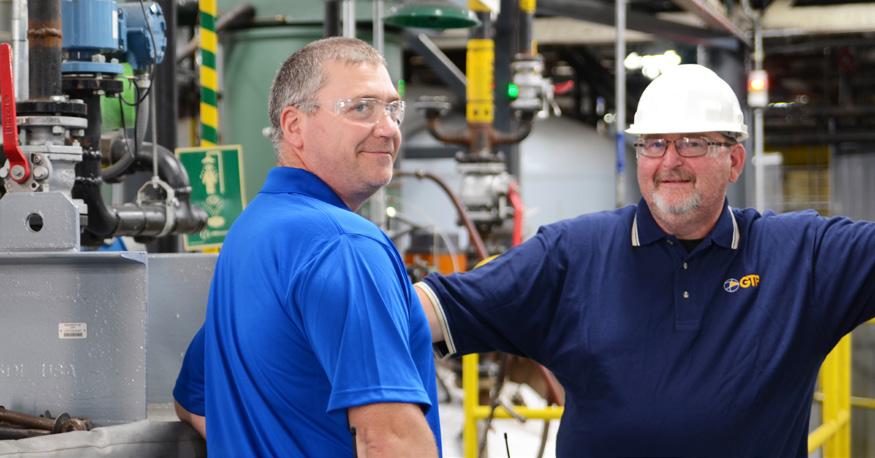
6K recognised on Global Cleantech 100 list
6K, North Andover, Massachusetts, USA, was featured on Cleantech Group’s 2023 Global Cleantech 100 list. Running since 2009, this list is intended to compile a complete list of the companies best positioned to help build a more digitised, de-carbonised and resource-efficient industrial future.
“6K being recognised on the Global Cleantech 100 list underscores our dedication to sustainability and the importance of clean manufacturing,” stated Bruce Bradshaw, chief marketing officer for 6K. “Our ability to manufacture AM powder with 92% lower emissions, as well as battery material production utilising 90% less water and zero wastewater proves just how sustainable the UniMelt
production technology truly is.”
One example that the company has stated showcases the confidence in its UniMelt technology as an environmentally-friendly manufacturing technology is evidenced by the recently awarded $50 million US Department of Energy grant that will partially fund the $107 million PlusCAM factory, a full-scale battery material manufacturing plant scheduled to open in 2025.

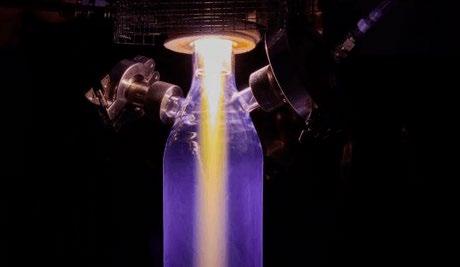
The company also recently released a life cycle assessment (LCA) conducted by Foresight Management on the sustainability benefits of the UniMelt technology for producing metal powders. 6K also announced a joint study with the Fraunhofer ILT that will be released during Q1 2023. The study conducted at the labs of Fraunhofer ILT analyses an additively manufactured industrial component that includes the environmental impact from powder, Additive Manufacturing and post-processing.
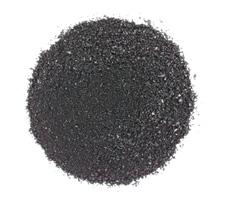
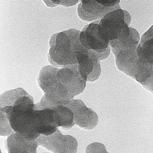
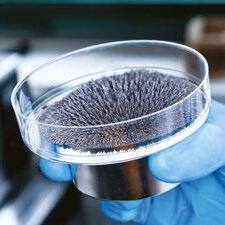
The number of nominations for the Cleantech 100 totalled 15,753 from over ninety-three countries. These companies were weighted and scored to create a shortlist of 330 companies that were reviewed by eighty-one members of an expert panel. The Global Cleantech 100 Expert Panel is made up of investors and corporate & industrial executives who are active in technology and innovation scouting.
www.6kinc.com
Roboworker offers filling shoes for powder presses
Roboworker, Weingarten, Germany, has developed a range of highperformance filling shoes for single and multiple cavities, compatible with the company’s own powder compacting cells as well as in the powder presses of other manufacturers.
The additively manufactured filling shoes are designed for optimum process stability and powder flow. They were produced inhouse at Roboworker’s Additive Manufacturing centre.
Roboworker offers hardware and software used to create flexible, modular high-tech machines for the entire manufacturing process of precision parts, including quality control. The Roboworker powder

The filling shoes are compatible with cells from Roboworker and other manufacturers (Courtesy Roboworker)

compaction cell (RPC) is a fullyelectric servo-driven axial powder compacting press that works on the ejection principle, with available nominal pressing forces from 120 kN up to 300 kN.
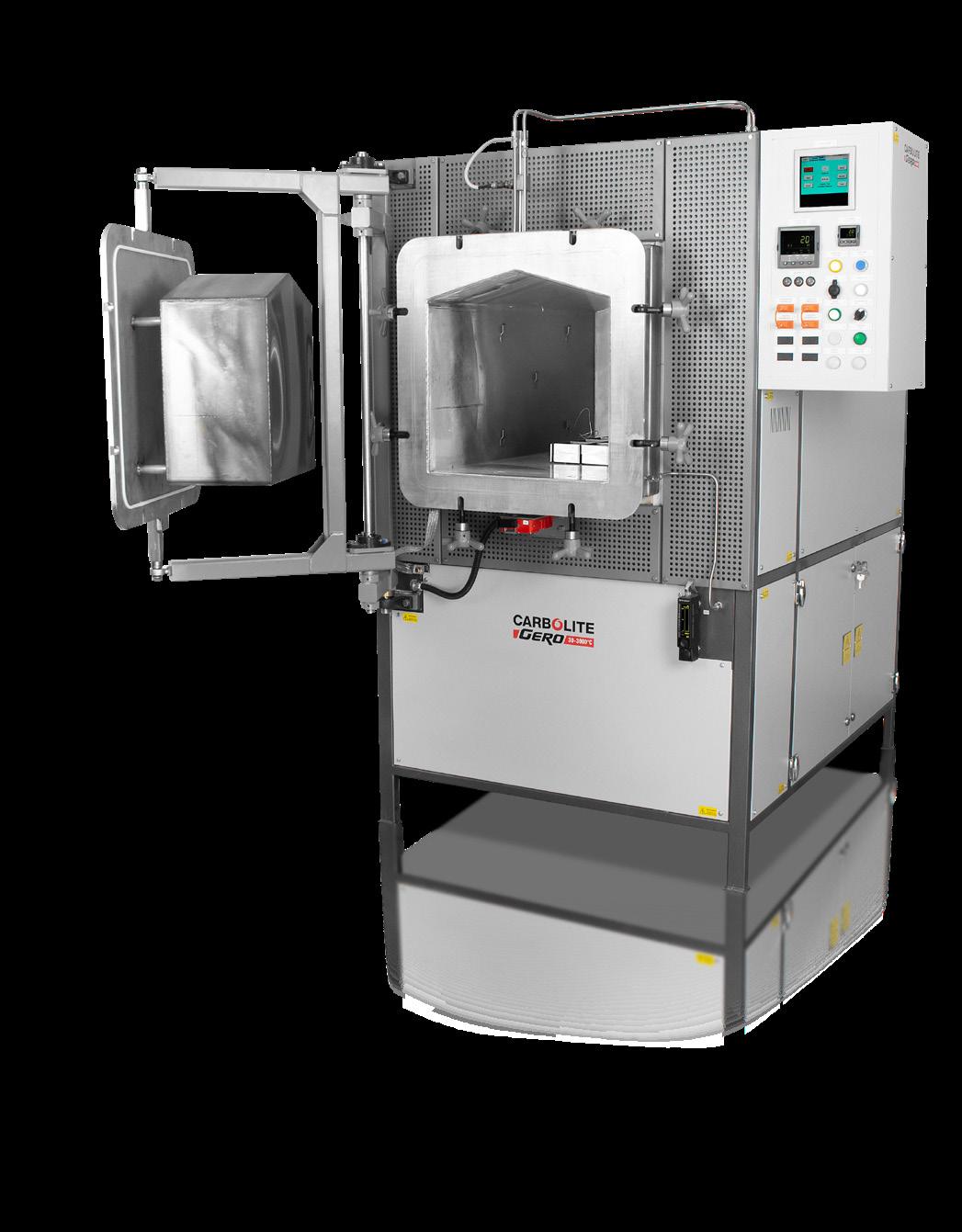
www.roboworker.com

Powder Metallurgy Summer School
The European Powder Metallurgy Association (EPMA) has announced that its PM Summer School for young engineers will take place July 17-21, 2023, at IFAM, in Dresden, Germany.
Beginning with an introduction to materials science and Powder Metallurgy, the Summer School programme looks at the various stages of PM, from powder manufacturing to shaping technologies and sintering. In addition to press and sinter, the course covers MIM, metal AM and HIP. There are sessions on hard materials, light metals and soft magnetic materials, followed by a number of case studies and laboratory work providing practical experience.
Ricoh expands Binder Jetting material line-up with 6000 series aluminium
Ricoh Company, Ltd, headquartered in Tokyo, Japan, is expanding its aluminium Binder Jetting (BJT) material range to include 6000 series aluminium alloy (AlSiMg). In conventional manufacturing, the 6000 series is a commonly used class of aluminium alloy, bringing high strength and corrosion-resistant properties to a wide range of applications.
The 6000 series aluminium alloys are, however, more susceptible to oxidation and less tolerant of impurities, making them some of the most difficult to sinter, explains Ricoh.
In 2020 the company released a 4000 series aluminium (AlSi) that, thanks to the adoption of a liquidphase sintering technology, made the Binder Jetting of this material possible. In the development of the 6000 series, Ricoh partnered with
the Fraunhofer Institute for Manufacturing Technology and Advanced Materials IFAM, Bremen, Germany, and again made use of the liquidphase sintering process.
When sintering the 6000 series, Ricoh precisely controls the gases in the furnace and uses a highly degradable binder with an optimised debinding process. These technological developments have now made it possible to use Binder Jetting to produce complex 6000 series parts, such as those seen in Fig. 1.
Properties of sintered 6000 series aluminium parts
In the Binder Jetting process, a droplet of binder is selectively deposited on a powder bed, layer by layer, to fabricate a green body. This green part then undergoes a debind and sinter process, densifying the
green body to obtain the sintered part. However, the Binder Jetting of aluminium has proved problematic because surface oxide hinders densification in the sintering stage.
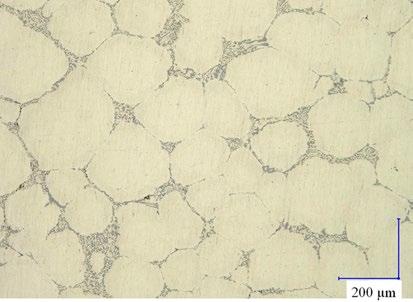
Following the development of Ricoh’s 6000 series aluminium, results have shown that the relative density of the sintered 6000 aluminium parts produced exceeds 97%.
X-ray computed tomography (Fig. 2) of the sintered sample shows that there are no large voids on either the surface or internally. The microstructure of the same 6000 series sample is shown in Fig. 3 under higher magnification, also indicating sufficient densification after sintering. The relative density of the observed sample was recorded as 97.9%.

Ricoh explains that properties important for aluminium applications, such as tensile strength and thermal conductivity, are equivalent to those of conventional methods. The tensile strength of the sample was reported to be approximately 250 MPa after T6 heat treatment, a common heat treatment for 6000 series aluminium. The thermal conductivity, measured by the laser flash method, was also recorded at 180 W/mK which is equivalent to 6000 series aluminium castings.

Further collaboration
Ricoh states that its 6000 series is ideal for heat exchanger and lightweight structural components, as well as other applications. The company plans to focus on collaborations with customers, along with further development of the new technology.
“We believe that dialogue and co-creation with our customers are extremely important, as is technology development,” stated Takafumi Sasaki, Manager of European AM department, Ricoh Futures BU, Ricoh Company. “We aim to accelerate collaboration with technical partners and customers by utilising this newly developed technology, through the activities at the Customer Experience Centre in Telford, the UK.”
www.ricoh.com
BLUE POWER EQUIPMENT & EXPERTISE FOR YOUR METAL POWDER PRODUCTION


DIFFERENT ATOMIZATION AND SEPARATION TECHNOLOGIES TO MEET YOUR NEEDS:

● GAS OR ULTRASONIC ATOMIZATION FOR SPHERICAL POWDERS WITHOUT ANY SATELLITES
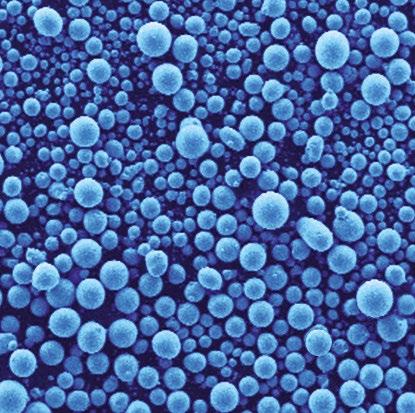
Ideal for LPBF, MIM and other Additive Manufacturing applications with the need for high quality powders with high purity, sphericity and wide range of reproducible particle size distribution.
● WATER ATOMIZATION FOR MORE IRREGULAR POWDERS Ideal for recycling/refining process, press & sinter process and others.
● MAXIMUM PURITY BY OXIDATION-FREE PROCESSING in the closed-chamber machine by means of de-gassing, vacuum and protective gas features
● FOR A WIDE RANGE OF METALS AND FOR SMALL TO MEDIUM AMOUNTS
AUG series HTC+ gas atomizers with temp. max. up to 2100° C Also versions for high-reactive metals as aluminium or magnesium available!
● AIR CLASSIFIER AC SERIES FOR PRECISE SEPARATION OF METAL POWDERS into fine and coarse powder fractions especially in the range < 25 µm, where conventional sieving operations fail.

● ALL UNITS DESIGNED FOR EASY HANDLING AND CLEANING, QUICK ALLOY CHANGE WITH MINIMUM CROSS CONTAMINATION
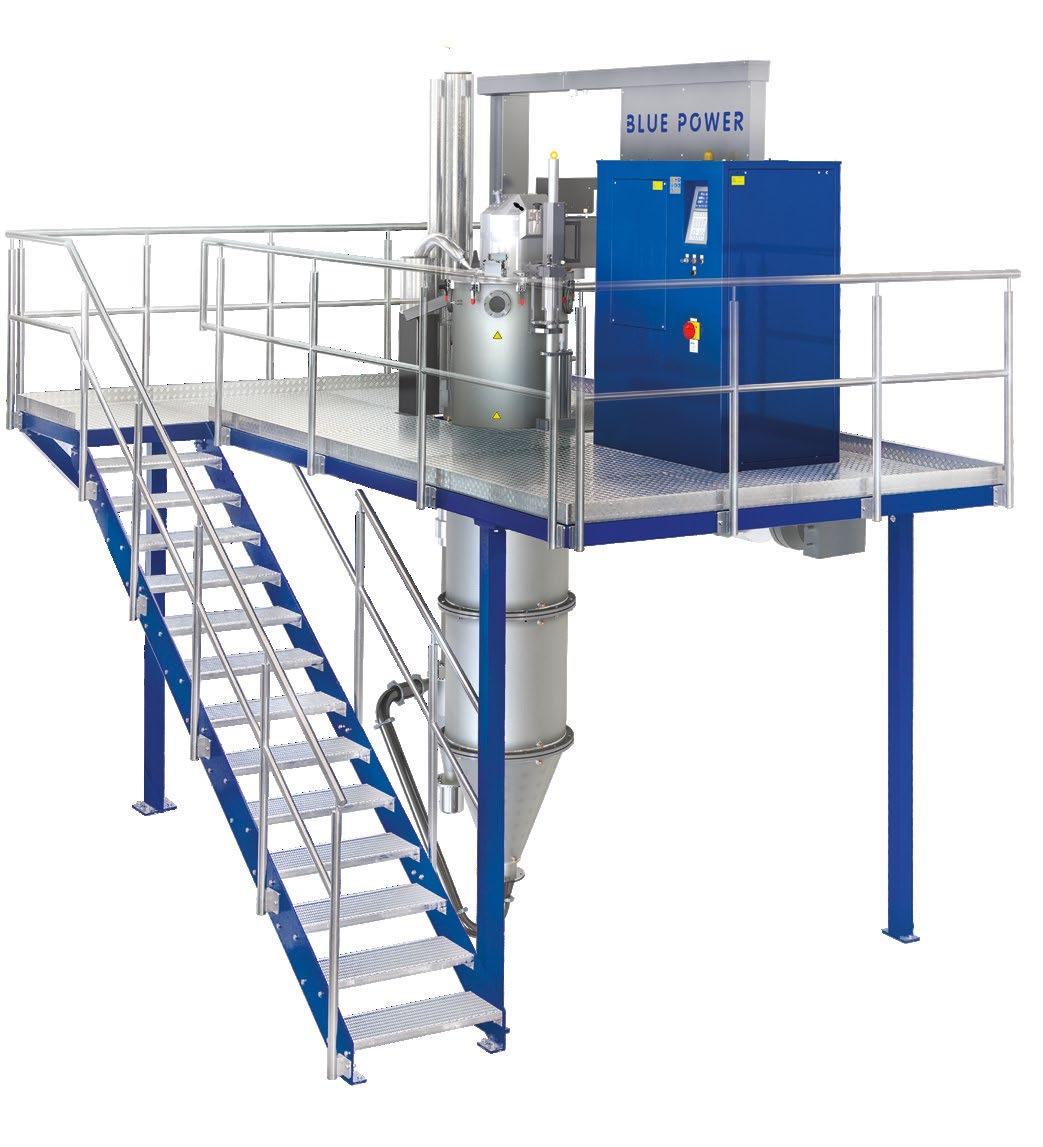
IperionX wins US Air Force recycling challenge to produce titanium powders
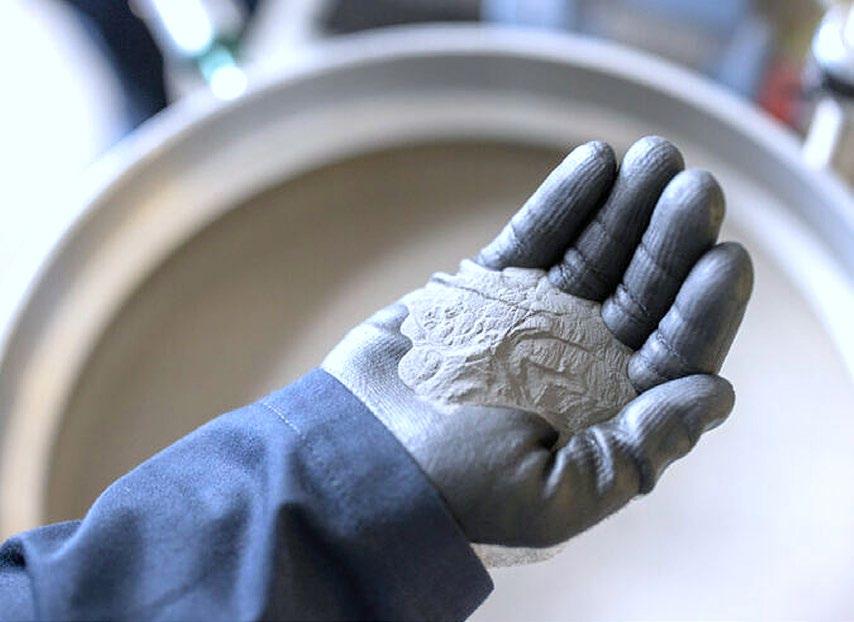
IperionX Ltd., Charlotte, North Carolina, has won the US Department of Defense’s National Security Innovation Network (NSIN) Air Force Research Laboratory (AFRL) Grand Challenge contract. As a result, IperionX will be eligible to produce titanium metal powders from scrap materials and rejuvenate used or out-of-specification Ti powder for the AFRL.
Winning this Grand Challenge against a field of titanium industry participants is said to be an important validation of IperionX’s patented technologies to produce circular, low-carbon and lower cost titanium metal from 100% recycled titanium scrap or out-of-specification titanium powder feedstocks.
The US Air Force and US Department of Defense are accelerating the use of Additive Manufacturing to reduce long lead cycle times and produce large volumes of complex parts for advanced weapons systems.
Typically, only 20-40% of titanium powder used in AM ends up in fabricated parts. Ti metal powders are
typically reused a limited number of times before the quality is compromised by elevated contaminant levels or inferior powder morphology. Out-of-specification
Ti powders increase the probability of defects and jeopardise the structural integrity of additively manufactured components.
Titanium produced by the current Kroll Process is high carbon, energy intensive and expensive. Companies across the defence, automotive, consumer electronics and luxury goods sectors want to source lowcarbon, low-cost titanium from traceable recycled sources. IperionX’s patented technologies offer a pathway to significantly lower cost, and lower carbon, Ti powders for components in these industries.
The patented technologies were developed by Dr Zak Fang, an American Professor of Metallurgical Engineering at the University of Utah, and enables IperionX to upcycle a wide variety of low-grade, high-oxygen Ti scrap which has historically been downcycled to lower value markets. IperionX is
able to achieve greater yields of nearly 100% from low-grade scrap without the need for blending the scrap with high-grade primary metal.
Winning the Grand Challenge also complements IperionX’s project with Materials Resources, LLC to qualify titanium alloy powders for the US Navy and test titanium flight critical metal replacement components for the US Department of Defense.
“Winning the Grand Challenge is an outstanding endorsement of IperionX’s patented titanium technologies,” stated Anastasios (Taso) Arima, IperionX CEO. “Our leading technologies can efficiently recycle titanium scrap metal and metal powders at lower cost than existing processes, and we look forward to working closely with NSIN, AFRL and other Department of Defense agencies to qualify and rapidly deploy the use of circular titanium metal across key defence platforms.”
The winner of the Grand Challenge is eligible for a contract award up to $500,000 across four phases, with IperionX successfully completing Phase 1, and will complete Phases 2 – 4 as part of routine production operations at its Titanium Pilot Facility in Utah. Phase 2 consists of the generation of a precursor Ti feedstock; 3, Ti powder production; and 4, build, rest and analyse overall cost savings
Dr Calvin Mikler, Materials Engineer, AFRL, concluded, “The AFRL team is excited to work with IperionX on the next phase of the titanium recyclability Grand Challenge. IperionX seemed to really understand the purpose of the Grand Challenge and pitched a unique strategy to deoxygenate and rejuvenate used titanium powders and scrap materials back into powder suitable for additive manufacturing of aerospace-quality parts. We can’t wait to see the results of all the hard work yet to come!”
www.iperionx.com
Navigation and Support
In a complex industry, we’ll guide you the entire way.
We’ve got one mission, to support as many metal part makers in the MIM and Metal AM industry as possible. Our team of processing experts utilize 20+ years of experience to share all our knowledge and help you overcome challenges, develop better processes and become successful part makers. We help develop real world, practical solutions based on many lessons learned along our journey. Being the ONLY debind and sinter service provider with full sized production equipment, we are honored that we have been able to support every industry currently utilizing MIM and Metal AM. DSH is the only source for the best process support, toll processing and educational resource for your MIM and Metal AM applications.
We offer:
Remote Process Engineering, Small/Large Toll Processing, R+D projects, Educational Support on Total Process Management.



NLB pump maker opens European facility
NLB Corporation, headquartered in Wixom, Michigan, USA, has opened a dedicated facility in Darlington, County Durham, UK, in a move that will enable the company to better respond to European customer demand and offer in-person customer training.
The nearly 2,000 m 2 location consists of workshop, office and yard space, and will house a range of pump units for sale or rent, an increased accessory inventory and spare parts, along with space to conduct demonstrations and training.
“This is a really exciting time for NLB in its international expansion plan,” stated David Beckington, VP of International Sales. “It reaffirms NLB’s commitment to supporting customers both new and old in the UK and across Europe.”
NLB offers water jetting pumps suited to atomisation systems. The pumps can integrate into the control centre using current systems, and are said to produce ideal particle sizes.
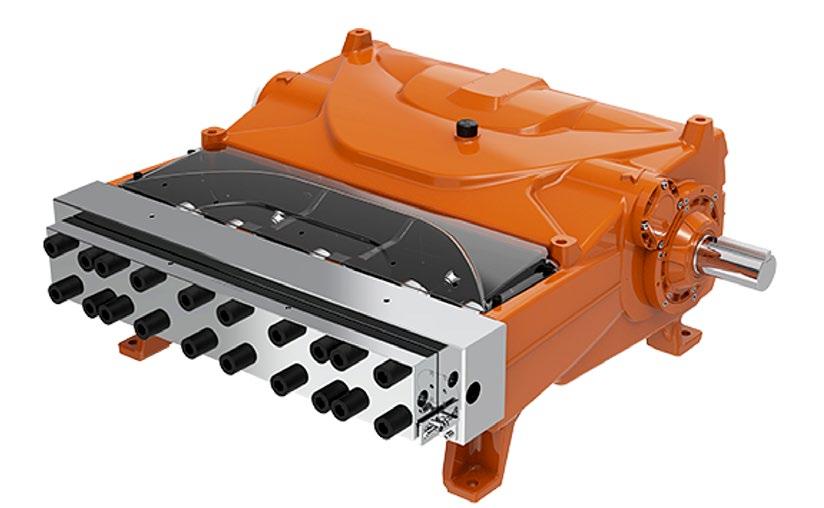
The service centre will also be the European hub for supporting NLB’s growing influence within the Aquaculture industry, where having on-hand inventory and specifically trained technicians is said to be vital in this time-critical market.
Since 1971, NLB has been a player in the growth and diversification of the water jet industry. The company offers both water jetting pumps & units, as well as brand-agnostic accessories. In 2021, the company opened an expanded, full-service location to house its headquarters in response to company growth.
www.nblcorp.com
MoU signed for rare earth mining in Malaysia
Menteri Besar Kedah Inc. (MBI Kedah), Malaysia, has signed a Memorandum of Understanding (MoU) with Jangka Bakat Minerals Sdn Bhd, Kelantan, Malaysia, and Xiamen Tungsten Co Ltd, China, to explore, share technical assistance and mine rare earth elements in the Malaysian state of Kedah.
Muhammad Sanusi, First Minister of Kedah, stated that rare earth elements are global strategic resources, and, while they are related to geopolitics, “as an upcoming REE producer, we will remain neutral and make decisions to benefit Kedah’s economy.”
Kedah is said to have high-quality REE deposits which have seen illegal mining in the past. In October 2022, the state government was able to recoup US $144,132 in fines following the closure of two illegal compounds.
Sanusi suggested that this was, in part, due to the lack of federal standard operating procedures on mining these critical minerals.
“Due to the high demand for REE and the high prices, people are unwilling to wait,” he stated.
To ensure this mining venture operated legally, Sanusi stated that the organisations will work closely with local authorities, the Department of the Environment and the Forestry Department to monitor the operation and ensure all regulations are followed.
www.mbikedah.com.my
www.cxtc.com
PMG Pennsylvania’s 20th anniversary
The Powder Metal Group (PMG), headquartered in Fussen, Germany, is celebrating the twentieth anniversary of PMG Pennsylvania, LLC, its US-based shock absorber specialist located in Philipsburg. The company serves as PMG’s North American location for the development and
manufacture of PM components for automotive shock absorbers. Housed in a 7,500 m 2 facility, the operation possesses a specialised manufacturing range of primary and secondary PMG shock absorber components and over 150 full-time employees.
The facility is said to serve as a perfect example of PMG’s product-focused manufacturing. In recent years, significant investment from PMG in building expansions, production equipment and vision system capabilities have enabled PMG Pennsylvania to respond to changing customer needs.
www.pmgsinter.com
Höganäs implements battery-electric truck for regular transport route


Sweden’s Höganäs AB is aiming to further reduce its environmental impact through the use of battery-electric trucks from Scania. As part of a national initiative, where leading Swedish companies have joined forces to accelerate the transition to electrified heavy goods transport, Höganäs is using the truck when shipping between the company and the Port of Helsingborg.
Höganäs started to use high-capacity transport (HCT) trucks, those that are permitted a total weight of 74 instead of 64 tonnes, in 2016. This enabled the company to halve the number of journeys between its factory and the port by loading two containers per vehicle instead of just one. The shift to battery-electric trucks will reduce its climate impact even further.
“We are taking the next step and are expanding our fleet with a third and new HCT vehicle that runs on electricity. Being able to contribute to the climate transition, by driving very heavy transport with electric power at such an early stage, feels important and exciting,” stated Johan Walther, Supply Chain Manager at Höganäs. “We estimate that we can reduce carbon dioxide emissions by up to 130 tonnes/year, which is a total reduction of 98% over the truck’s lifespan compared with a diesel truck.”
Being able to contribute to the climate transition through more sustainable solutions is in line with Höganäs’ larger climate ambitions. The company’s goal is to achieve net zero throughout the value chain by 2037 and in its own production by 2030.
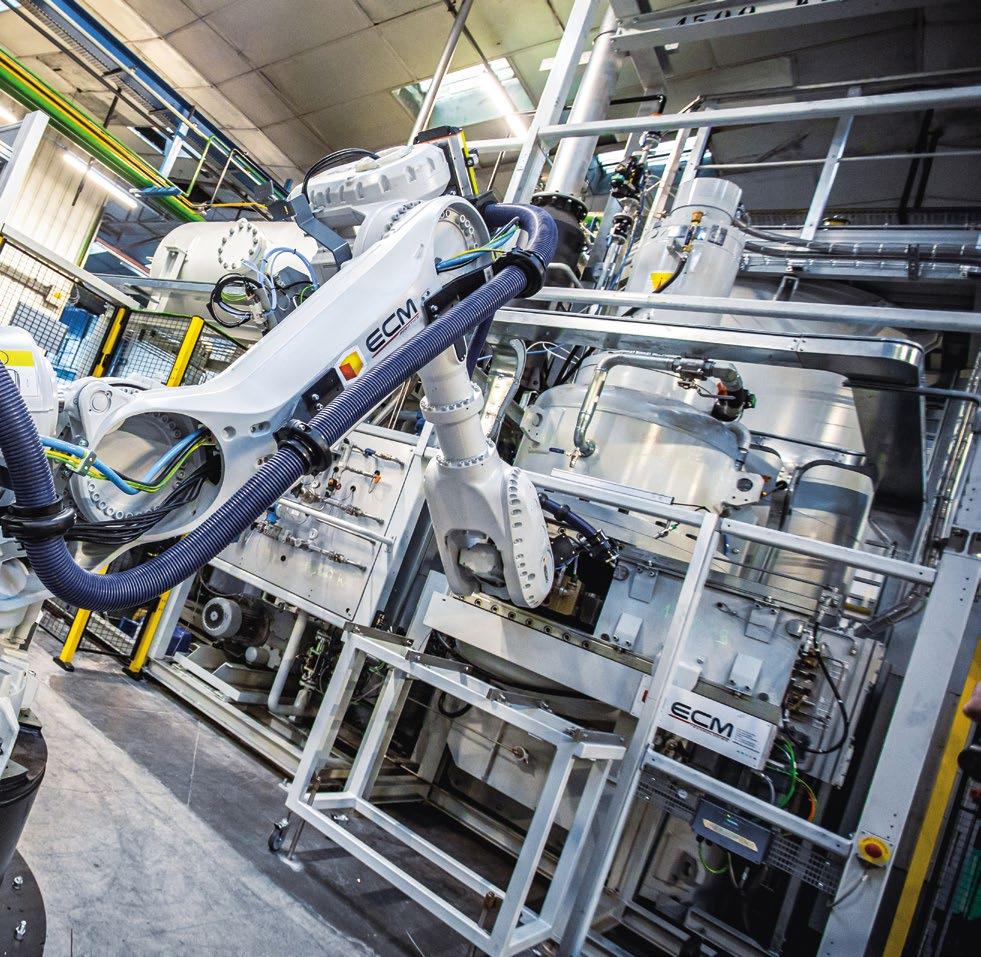
“With Höganäs now installing a completely new battery-electric truck, they reduce the climate impact of their transport operations,” added Evalena Falck, Scania Sales Director, Strategic Account Management. “The truck is also quieter, which is good for both the surrounding area and the driver. For heavy transport to make a full transition to fossil fuel-free, it is important that there are transport buyers who dare to take the lead and adapt.”
www.hoganas.com




LARGE SCALE SINTERING OF PM PARTS
PyroGenesis sees approval of NexGen facility by leading aerospace company
PyroGenesis Canada, Inc., Montreal, Québec, Canada, has announced that the findings and recommendations made by a leading global aerospace company, as part of its on-site audit of PyroGenesis’s NexGen metal powder production facility, have been successfully completed and accepted.
Now that the client has approved and accepted PyroGenesis’ NexGen
manufacturing process, the next and final step is to provide sample titanium metal powder from the newly approved process. The plasma atomised metal powder will be used for verification and confirmation of their chemical and mechanical properties. “The client is a very discerning aerospace company with some of the most stringent and demanding standards. As such, we
are very proud to have gained their confidence and to be moving forward to the final phase,” stated Massimo Dattilo, VP, PyroGenesis Additive.
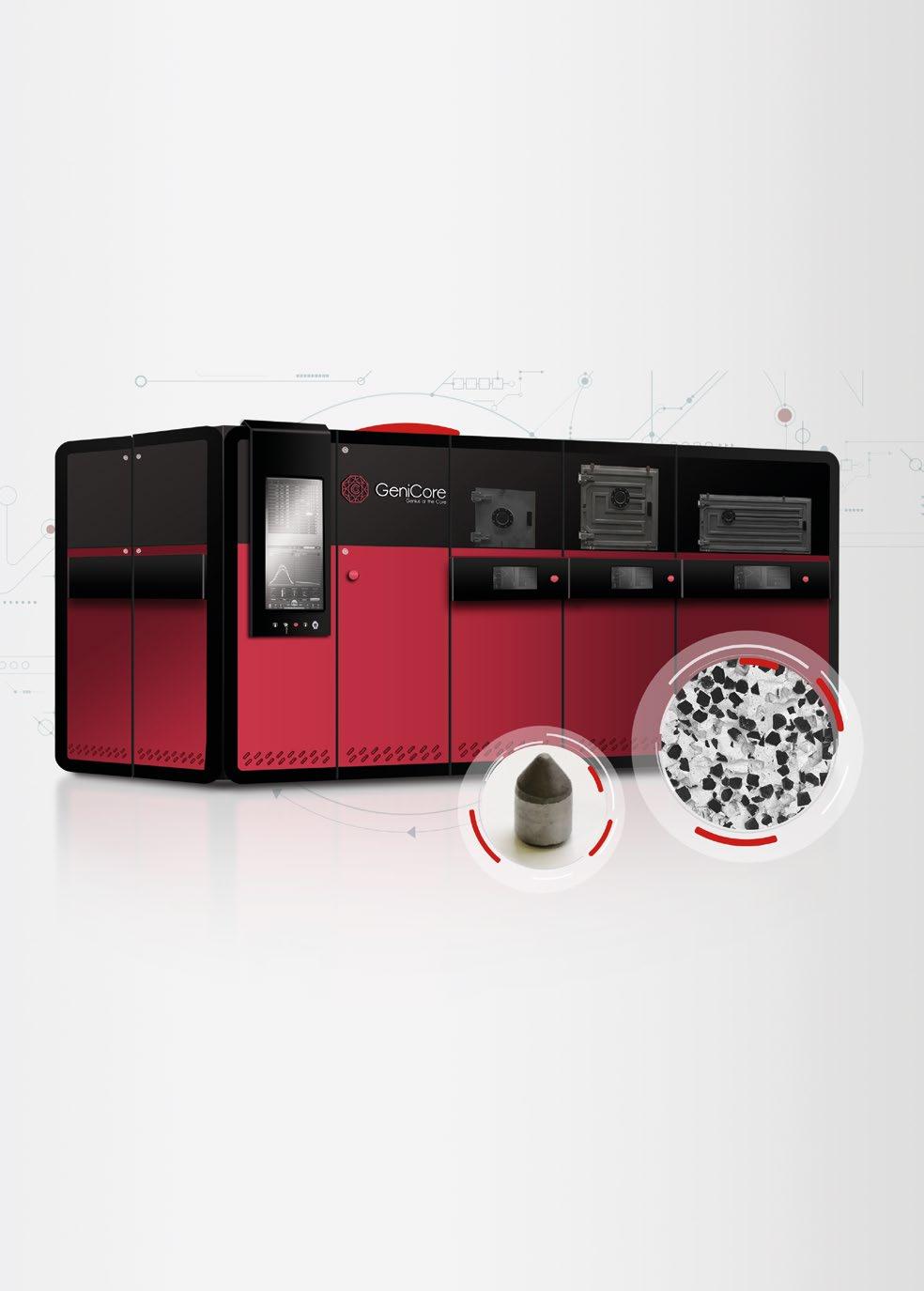
“We have methodically completed all steps in the client’s on-site quality audit, leaving only the verification of the chemical and mechanical properties of PyroGenesis’ plasma atomised metal powders as the last step.”
Having already passed this rigorous qualification process, management is reportedly of the opinion that future qualification audits from potential clients can now be completed in a significantly shorter time frame. PyroGenesis Additive is currently addressing an influx of opportunities from the past year and continues to expand its team in anticipation of meeting this demand.
“We believe the difficult part is now behind us, and we are looking forward to the prospect of becoming a fully-fledged approved supplier of titanium powder to one of the largest potential clients in North America. Once an approved supplier, PyroGenesis Additive could also supply their service centres,” Dattilo concluded.
www.pyrogenesis.com
European Cutting Tool Conference 2023 heads to Spain
The European Cutting Tools Association (ECTA) has announced that it will hold its European Cutting Tool Conference in San Sebastián, Spain, May 25-27, 2023, at the invitation of ECTA member Advanced Manufacturing Technologies (AFM).
The European Cutting Tool Conference provides a forum and networking event for manufacturers of cutting tools and clamping technology. Strategic challenges are discussed and global networking and cooperation in the industry is strengthened.
www.ecta-tools.org
Korea Powder Metallurgy & Materials Institute appoints Dr Ji-hoon Yoo as president
The Korea Powder Metallurgy & Materials Institute (KPMI) has appointed Dr Ji-hoon Yoo, director of the Powder Materials Division at the Korea Institute of Materials Science (KIMS), as its president for 2023. Established in 1993, the KPMI has more than 2,200 members and eighty-three member companies in the Powder Metallurgy field. The organisation has a solid academic foundation and strong links with the industry.
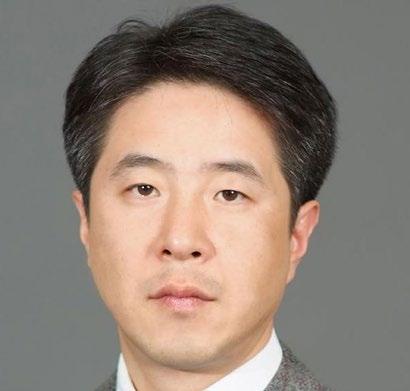
In his inaugural address, Dr Ji-hoon Yoo stated, “I will do my best to think and communicate with the new executive team and strive
for the development of the society so that the results of the society’s past efforts can be gradually realised.”
Dr Ji-hoon Yoo obtained his bachelor’s, master’s, and doctoral degrees in metal materials engineering from South Korea’s Hanyang University, and has been working at the KIMS since 2003. He is currently serving as the chairman of the N-Team of the Ministry of Science and ICT, the advisory committee member of the Strategic Material Technology Advisory Group of the Ministry of Trade, Industry and Energy, and the expert member of the technology level evaluation
ASM enters rare earth agreement in South Korea and Vietnam
Australian Strategic Materials Ltd (ASM) has signed an agreement with the Chungcheongbuk Province in South Korea and the Vietnam Rare Earth Company (VTRE) to co-operate to establish a long-term supply of rare earth oxides.
Under the terms of the agreement, VTRE and ASM subsidiary KSM Metals Co. Ltd (KSMM) will use reasonable endeavours to agree on the long-term supply of rare earth oxides from VTRE. VTRE will use reasonable endeavours to develop their mine to ensure they have the capacity to supply rare earth oxides to KSMM (with a value of approximately US $50 million in total) over five years, commencing in 2023, if commercial terms relating to supply can be agreed.
Further, the Chungcheongbuk Provincial Government agrees to provide administrative assistance to VTRE and KSM Metals to facilitate the supply of rare earth oxides from Vietnam to Korea. This long-term supply of rare
earth oxides from VTRE to KSMM is intended to ensure certainty of the feedstock required for ASM’s Korean Metals Plant, before the Dubbo Project commences operation.
ASM’s Dubbo Project is a proposed long-term polymetallic resource development containing rare earths, zirconium, niobium, and hafnium, all critical metals essential for advanced and clean technologies.

“We are delighted for this opportunity to work together to secure the supply of rare earth oxides before our Dubbo Project comes online,” stated Rowena Smith, CEO, ASM. “This will support long-term sales agreements and production ramp-up at our Korean Metals Plant.”
She concluded, “We also greatly value this continued show of support for ASM by the Chungcheongbuk Provincial Government in Korea and look forward to growing our relationship with VTRE in Vietnam.”
www.asm-au.com
www.vtre.vn
Dr Ji-hoon Yoo has been appointed president of Korea Powder Metallurgy & Materials Institute for 2023 (Courtesy KIMS)
(Additive Manufacturing equipment material technology) of the Ministry of Science and ICT.
eng.kpmi.or.kr
www.kims.re.kr
Metrohm named Australasian distributor for Carbolite Gero
Metrohm Australia & New Zealand, based in Gladesville, Australia, is now the exclusive distributor of Carbolite Gero products in Australasia. Metrohm and Carbolite Gero will work to provide ongoing support and and service for all existing Carbolite Gero customers in the region, Carbolite Gero is a manufacturer of high-temperature furnaces and ovens from 30°C to 3000°C, with a focus on vacuum and special atmosphere technology. Having over eighty years of experience, its products are suitable for a variety of manufacturing methods, including Additive Manufacturing, Metal Injection Moulding and Powder Metallurgy. Metrohm manufacturs highprecision instruments for chemical analysis. Established in 1999, Metrohm Australia & New Zealand has been supplying and servicing the Metrohm portfolio as well as other leading scientific brands.
www.carbolite-gero.com
www.metrohm.com
Europe’s largest deposit of rare earth metals discovered in Sweden
LKAB, an international mining and minerals group headquartered in Luleå, Sweden, has announced the discovery of deposits of rare earth metals – exceeding one million tonnes of rare earth oxides – in the Kiruna region of Sweden.
“This is good news, not only for LKAB, the region and the Swedish people, but also for Europe and the climate,” stated Jan Moström, president and Group CEO, LKAB. “This is the largest known deposit of rare earth elements in our part of the world, and it could become a significant building block for producing the critical raw materials that are absolutely crucial to enable the green transition. We face a supply problem. Without mines, there can be no electric vehicles.”
No rare earth elements are currently mined in Europe, with the continent highly dependent on Chinese imports of these minerals. According to the European Commission’s assessment, the demand for rare earth elements for electric cars and wind turbines, among others, is expected to increase more than fivefold by 2030.
“Electrification, the EU’s self-sufficiency and independence from Russia and China will begin in the mine. We need to strengthen industrial value chains in Europe and create real opportunities for the electrification of our societies. Politics must give the industry the conditions to switch to green and fossil-free production. Here, the Swedish mining industry have a lot to offer. The need for minerals
to carry out the transition is great,” added Ebba Busch, Swedish Minister for Energy, Business and Industry.
The first step to eventually mining the Per Geijer deposit is obtaining an exploitation concession to enable further investigation of the conditions for mining. The application for this is planned for later this year.
LKAB has already started to prepare a drift, several kilometres long, at a depth of approximately 700 metres in the existing Kiruna mine towards the new deposit in order to be able to investigate it at depth and in detail. The company anticipates that it will take several years to complete this investigation and reach the conditions for profitable and sustainable mining. Only then, it was added, will the company proceed with an environmental review application and apply for a permit.
LKAB has identified significant deposits of rare earth elements in Kiruna, Sweden (Courtesy LKAB)
Matexcel expands range of Co-based metal powders
Materials service provider Matexcel, Bohemia, New York, USA, has extended its range of cobaltbased metal powder products. The company now offers multi-functional Co alloys ranging from fine powders to nanostructured materials.
Cobalt-based alloys are commonly known as high wearresistant materials and often used
for dental restoration and orthopaedic implants. Typically Co alloys have an FCC crystal structure and contain alloying elements like Cr, Ni, Mo and N. Cobalt alloys typically have a higher carbon content than implantable stainless steels, which can lead to the formation of carbides distributed by the material and encourages an improvement in adhesive wear

“If we look at how other permit processes have worked within our industry, it will be at least ten to fifteen years before we can actually begin mining and deliver raw materials to the market,” added Moström. “Here, the European Commission’s focus on this issue, to secure access to critical materials, and the Critical Raw Materials Act the Commission is now working on, is decisive. We must change the permit processes to ensure increased mining of this type of raw material in Europe. Access is today a crucial risk factor for both the competitiveness of European industry and the climate transition.”
www.lkab.com
resistance. Co alloys have superior corrosion resistance compared to stainless steel, which is combined with its high wear resistance.
The Co alloy powders now available from Metaxcel include:
• MET-0023 (Co-based CoCrW)
• MET-0024 (Co-based CoCrMo)
• MET-0025 (Co-based CoCrMoW)
• MET-0026 (Co-based GH5188)
• MET-0027 (Co-based GH5605)
• MET-0028 (Co-based GH5941)
www.matexcel.com
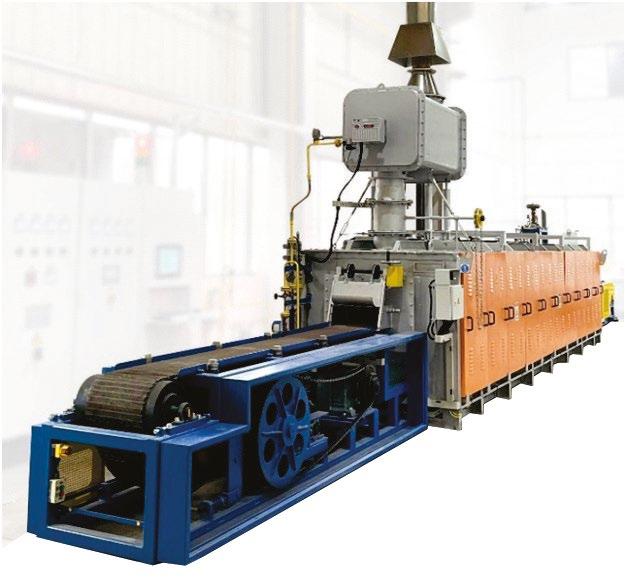

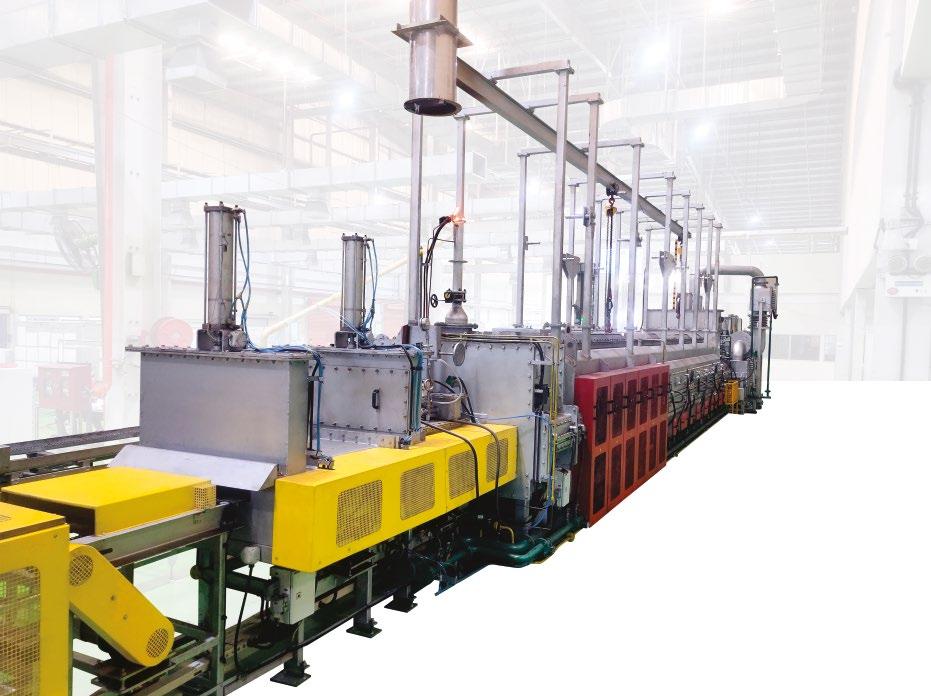

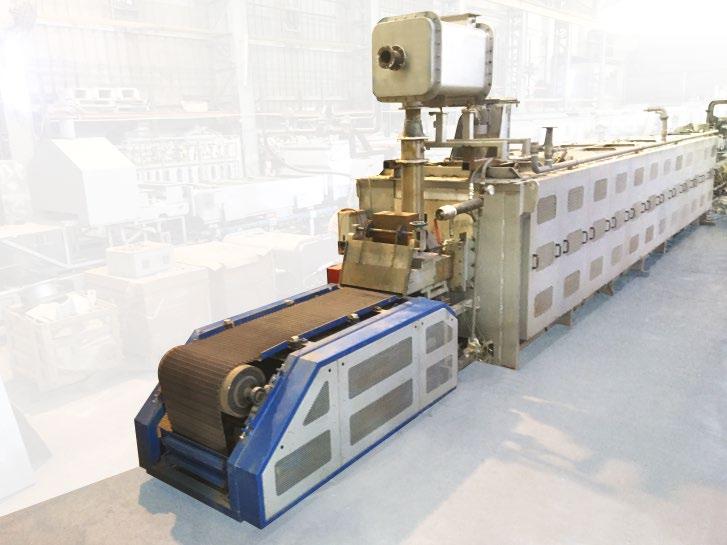
Plansee seeks high energy savings through optimisation of processes
In a joint research project with the AIT Austrian Institute of Technology, the Plansee Group, headquartered in Reutte, Austria, is working on reducing energy consumption in its production processes.

To achieve maximum performance, many products must undergo lengthy and energyintensive heat treatment such as an annealing process. One of the ways of annealing these items is to use electrically-heated hightemperature furnaces with zone temperature regulation, in which the products are arranged in layers.
The minimum annealing time
During an annealing process, the inside of the furnace heats up until the specified zone temperature is reached. This temperature is then maintained for a certain length of time to guarantee that the products are heated to the specified temperature and are annealed for a minimum time at this temperature. The products are then cooled down again.
In practice, precise adherence to this minimum annealing time is important, as the temperature progression in the products is heavily dependent on the load of the furnace and the temperature progression does not follow the zone temperature exactly due to thermal inertia of the materials. It is also extremely difficult to measure the temperature (up to 1800ºC) of the heat-treated objects directly: suitable load thermocouples are expensive, delicate, and difficult to install, while the software models for temperature estimation are very complex. For this reason, in practice there is a tendency to exercise caution and opt for a longer annealing process. If this is too short, the annealing material is not annealed homogenously for long enough, which has a negative effect on the material properties. If it is too long, time and energy are wasted.
To optimise the annealing process, Plansee has launched the ThermoTec project together
with the AIT Austrian Institute of Technology. “In this project, we have combined Plansee’s expertise in materials and processes with our knowledge of regulating difficult and complex processes,” stated Martin Niederer, AIT project manager.
High energy and time savings
Through complex measurements, analyses, and modelling, an algorithm has now been developed. Experimental validation of the algorithm in more than 230 annealing operations on a furnace over the course of a year revealed that the holding time of the process could be reduced by 20%, on average. The reduction in energy consumption and CO 2 emissions is equivalent to that of fifteen homes.
Accompanying material tests showed that the product quality remained unchanged at a high level. Optimisation also reduced the total duration of the process by almost 12%, which enables better utilisation of the furnace.
“The process ensures precise adherence to the minimum annealing time, which results in energy savings and thus heating costs, as well as improved throughput with consistently high quality,” stated Tobias Glück, head of the Competence Unit Complex Dynamical Systems.
Use of the new process in practice
The process is now being used in production operations at Plansee and is contributing toward reducing the energy demands of the production department.
Bernhard Mayr-Schmölzer, project manager at Plansee, concluded, “The new algorithm can be integrated into the existing furnace control and can therefore be transferred to other furnaces with ease. We will continue to roll this out over the coming months.”
www.ait.ac.at
www.plansee.com
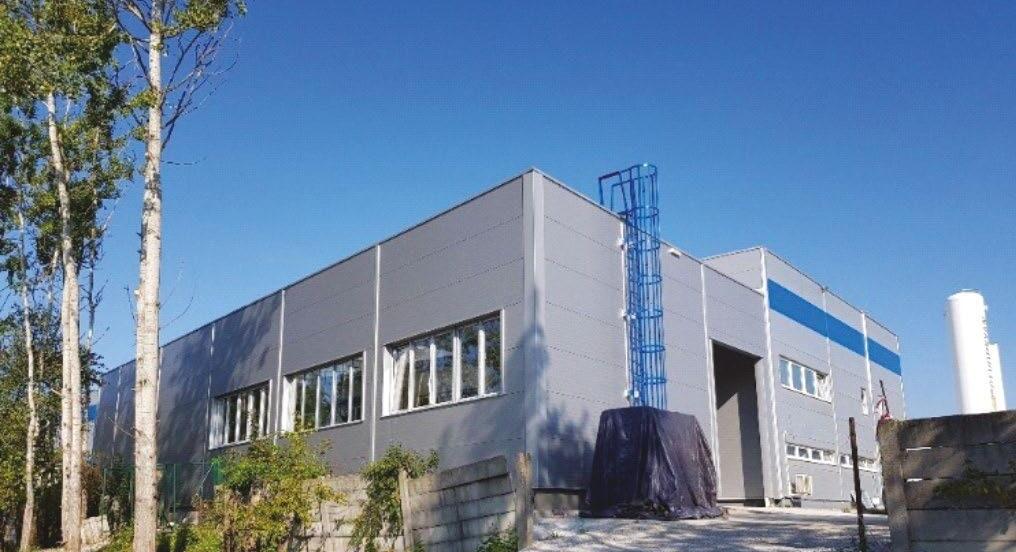
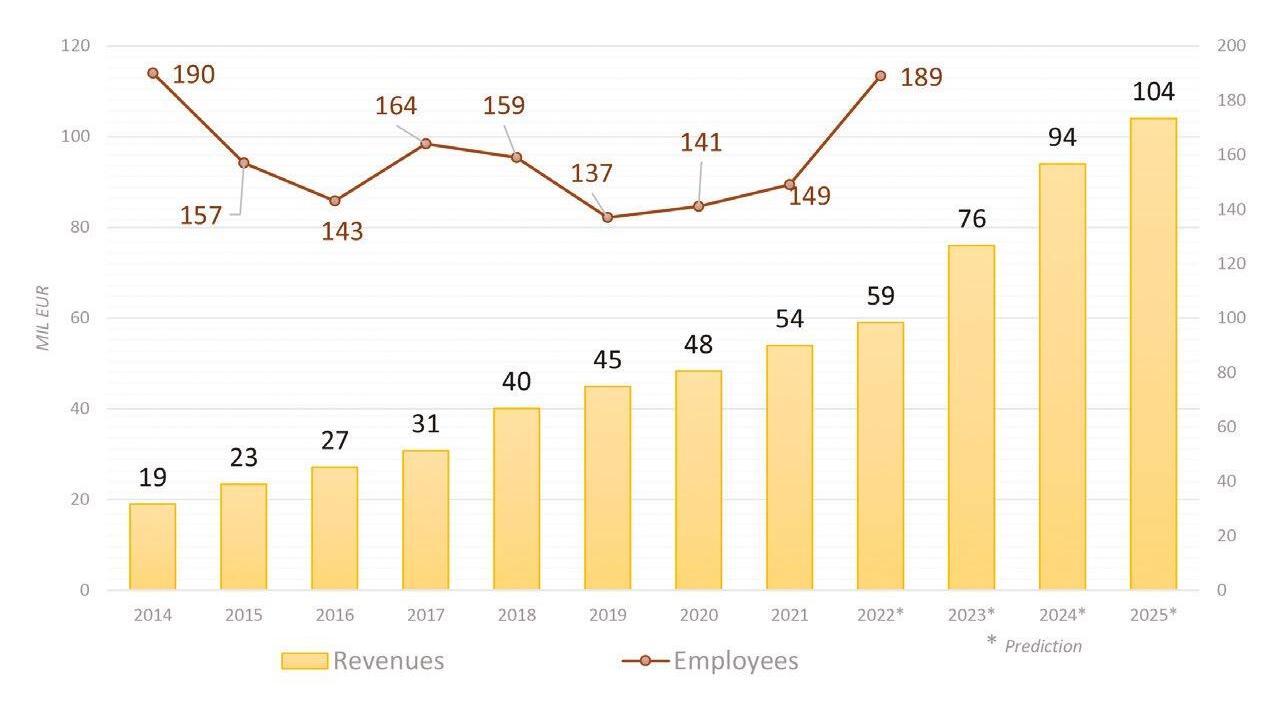
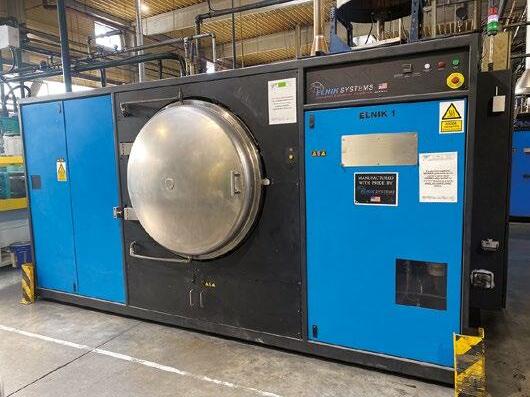
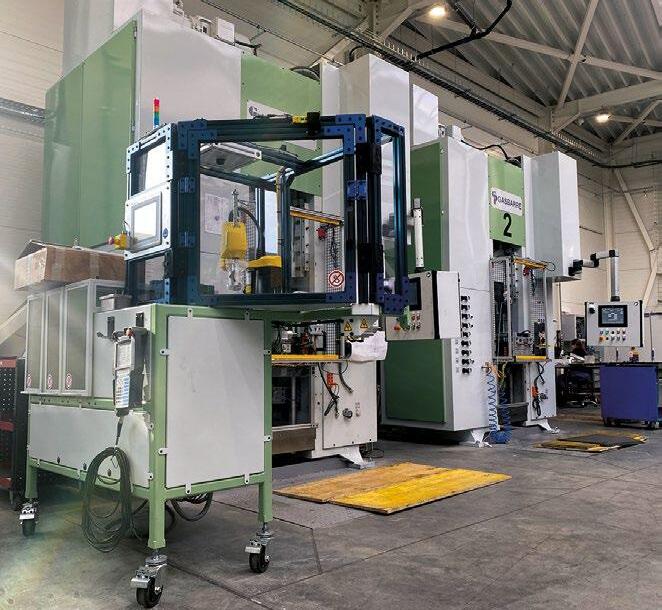

Praxis Technology relocates in expansion plans
Praxis Technology has announced plans to expand its business, moving its two facilities in Queensbury, New York, USA, to a larger site in Pruyn’s Island, Glens Falls, New York, reports Glens Falls Business Journal.

“We purchased the building and are relocating both of our facilities that are currently in the industrial park by the airport,” stated Joseph Grohowski, founder and president of Praxis Technology. “We’re doing it for a number of reasons. One is that we want to have all of our operations under one roof. Two is that we need room to grow. We are pretty much
out of room in our current two facilities. It’s a great opportunity for us to lay the foundation for future growth as well as to create a really nice environment for our employees. It’s very important to us that Praxis is a great place to work.”
According to Grohowski, Praxis will invest approximately $1 million to reoutfit the Pruyn’s Island facility. The process will begin as soon as possible and the company is expected to be relocated by the middle of 2023.
Praxis currently employs fifty people, and staff levels are expected

to increase. Grohowski said the company’s growth is being fuelled by its flagship Metal Injection Moulding technology for titanium.
“The technology allows us to form titanium in a very similar way to injection plastic,” added Grohowski. “It gives our customers lower manufacturing costs as well as increased design flexibility. We have seen rapid growth in the adoption and acceptance of the technology. We see this being a big part of our future. We are planning on commercialising some Additive Manufacturing technology for our markets, as well.”
Many of the implant-grade titanium parts that the company manufactures are used in hip, knee, and spinal surgeries; Praxis has manufactured over 250,000 implantable devices. In addition to being used in the medicine and aerospace, the company’s components are also used in the auto, marine, and sporting goods industries.
facilities in the larger Pruyn’s Island site (Courtesy The Business Journals)
Digital Metal announces H13 powder for its BJT machines
Digital Metal, a Markforged company, has announced the availability of H13 metal powder for all Digital Metal Binder Jetting (BJT) Additive Manufacturing machines. The powder will be marketed under the name DM H13 and is a hot-work tool steel that can maintain its strength and hardness when exposed to high temperatures.
It also exhibits good resistance to thermal fatigue and abrasion.
H13 is commonly utilised in tools such as extrusion dies and injection moulds. Adding this metal to the company’s portfolio is intended to expand the number of missioncritical applications that can be solved on location and on demand.
“We’re excited to continue growing in the community,” Grohowski concluded. “The Glens Falls area has been a great place for us to be because of the strong medical device manufacturing base. We’re looking forward to making our company even stronger.”
www.praxisti.com
Highly complex H13 parts can be additively manufactured with properties tailored to application-specific requirements through post-sintering heat treatments.
While final properties vary depending on heat treatment conditions, the ultimate tensile strength of the as-sintered metal is 1350 MPa, with a yield strength of 800 MPa. The as-sintered material achieves a 97% relative density at 40 HRC.
www.digitalmetal.tech
MPIF announces Distinguished Service awards
The Metal Powder Industries Federation (MPIF)’s Awards Committee has announced the recipients of the 2023 MPIF Distinguished Service to Powder Metallurgy Award, recognising individuals who have actively served the North American PM industry for the last twenty-five years and, in the minds of their peers, deserve special recognition.
Over seventy nominated individuals were on the ballot, which was reviewed by the past decade of Distinguished Service Award recipients and the MPIF board of governors and boards of directors of MPIF trade associations.
The 2023 recipients are:
• Christopher T Adam, PMT, VALIMET Inc.
• Carl Blais, Laval University
Shelton R Clisby, Hoeganaes Corporation
• Thomas K Houck, Nichols Portland Inc.

• Bo Hu, North American Höganäs Co.
• Edmond Ilia, retired, formally of AAM Powertrain
• Todd A Leonhardt, Rhenium Alloys, Inc.
Eric J Reinert, Bronson & Bratton, Inc.
• Mark Saline, Gasbarre Products, Inc.
• Rajiv Tandon, Luxfer Magtech Inc.
Juan RL Trasorras, Global Tungsten & Powders Corporation
• Barton White, Kymera International
The awards ceremony is scheduled to take place during PowderMet2023, June 18–21, Las Vegas, Nevada, USA.
www.mpif.org
World PM2024 Congress & Exhibition dates confirmed
Japan Powder Metallurgy Association (JPMA) and Japan Society of Powder & Powder Metallurgy (JSPM) have announced that World PM2024 International Powder Metallurgy Congress & Exhibition will take place October 13-17, 2024, in Yokohama, Japan.
World PM2024 will include presentations on the latest metal powder technologies, from press and sinter PM to metal Additive Manufacturing.
An exhibition will introduce the latest products and technologies from the industry supply chain. In addition, various social events and special programmes will be prepared.
www.worldpm2024.com
EPMA PM Thesis Competition 2023
opens
The European Powder Metallurgy Association (EPMA) has launched its 2023 Powder Metallurgy Thesis Competition. The popular competition is open to all graduates of a European University whose theses have been officially accepted, or are approved by the applicant’s teaching establishment, during the previous three years.
The aim of the competition is to develop interest in, and promote, Powder Metallurgy amongst young scientists at European academic institutions and encourage research at under and post-graduate levels.
Theses, which must be classified under the topic of Powder Metallurgy, will be judged by an international panel of PM experts, drawn from both academia and industry.

Competition winners will be awarded €500 and €1,000 for Masters and Doctorate levels respectively, sponsored by HILTI, and complimentary registration to the Euro PM2023 Congress & Exhibition.
www.epma.com

Study reports on the addition of aluminium to sintered CuCrFeNiTi and
its potential for automotive components
A team of researchers led by Dr Enrique Rocha-Rangel at the Universidad Politécnica de Victoria, Mexico, and Dr Ivanovich Estrada-Guel of the Centro de Investigación en Materiales Avanzados, Mexico, have reported the results of work looking at the addition of aluminium to sintered CuCrFeNiTi, and its potential as an alloy for the production of automotive components.
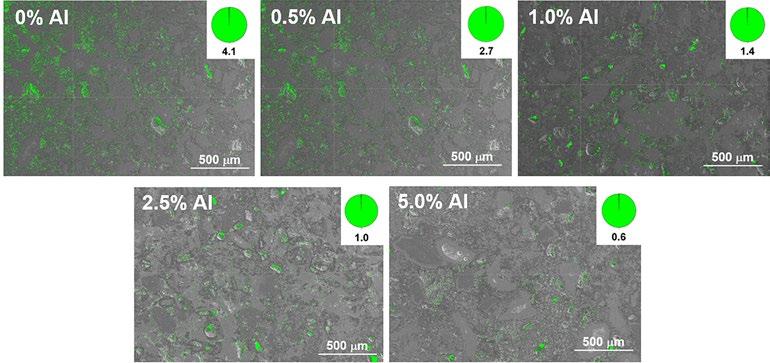
Published in Metals , a peerreviewed journal from MDPI, the work centred around CrCuFeNiTiAl x high-entropy alloys processed through Powder Metallurgy. Highentropy alloys (HEAs) are advanced materials with at least five elements present in equimolar or near-equimolar amounts, and have attracted significant attention from the scientific community due to their potential applications.
The authors explain that in the automotive sector, vehicle moving parts wear out over time so they must be replaced before failure. Often, these are vital components for the engine’s proper functioning, and examples include internal combus -
SEM-SE micrographs of CrCuFeNiTiAl x alloys with different porosity levels as a function of added aluminium (Courtesy Metals)
tion engine valves and valve seats, aluminium cylinder liners and castiron piston rings or rocker arms. These components are often made of alloys that provide an adequate mechanical strength-to-weight ratio; however, the weight is significant since excessive mass limits the engine’s ability to reach high revolutions.
Many high-entropy alloys have been developed with exceptional mechanical response such as increased strength, good ductility, excellent fracture toughness, good creep, wear resistance, chemical and thermal stability in comparison to traditional alloys. HEAs mainly have been processed through traditional melting methods that have the disadvantage of microstructural heterogeneity and heavy element segregation, it is stated. On the other hand, when using PM the tendency toward random distribution of atoms (chemical disorder) is favoured and leads to extending the solid solubility
limit and improving their mechanical properties. Therefore, there are great expectations for high-entropy alloys that can be used in the automotive sector.
Until now, the CuCrFeNiTiAl x system has not been studied in detail; the effect of adding aluminium to the system has yet to be reviewed. However, it could represent interesting properties due to the additional phase changes that could be generated in addition to the tendency of the alloy to form a mixture of FCC + BCC phases. The objective of the work is focused on the characterisation of the CrCuFeNiTi system with Al x (x = 0, 0.5, 1, 2.5, 5 mol.%) produced by PM to evaluate the effect of Al on the phase and microstructural evolution of the alloy, and determine its potential application in vehicle parts.
The authors concluded that the HEA alloy that achieved the highest hardness was the one with the highest Al content. These alloys harden significantly with the addition of Al due to the increase of the chromium oxide-type phase, and the strong atomic bonding between Al and other elements, due to the larger atomic radius of Al. This phenomenon is also related to the reduction in porosity as a function of aluminium content.
The full paper is, ‘Study of Al Addition on Sintered CuCrFeNiTi as a Potential Alloy for Automotive Components,’ is available to read on the MDPI website. www.mdpi.com/journal/metals

results (average and standard deviation) and lattice constant of the CrCuFeNiTiAl x alloy, as a function of Al content (Courtesy Metals)
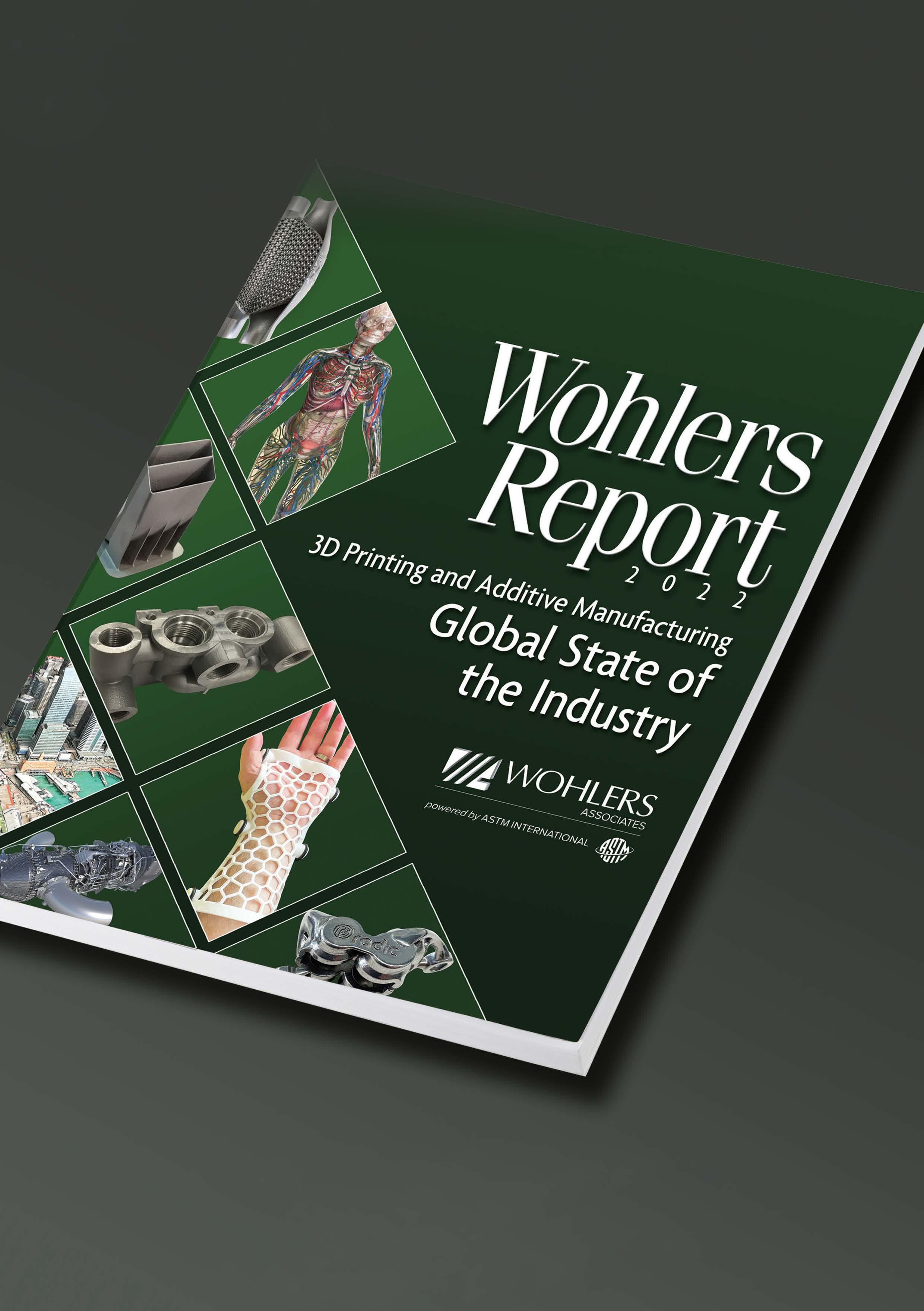



Toyota Turkey to be European base for plug-in hybrid vehicles and battery manufacturing
Toyota has confirmed that its Toyota Motor Manufacturing Turkey (TMMT) division, based in Sakarya, Turkey, will produce the second generation of its Toyota C-HR, marking Toyota’s first European plant to start producing plug-in hybrid vehicles, and the first to be equipped with a battery production line.
“We are proud to announce that TMMT will produce the secondgeneration Toyota C-HR, including the first plug-in hybrid vehicle in Europe,” stated Marvin Cooke, Toyota Motor Europe, Executive VP – Manufacturing. “The outstanding performance and dedication which our TMMT employees deliver will make this new model a great success, just like its predecessor. It also marks another important milestone with the start of our first battery assembly line in Europe, which is an important step in our European electrification plan.”
Alongside the vehicle production line, TMMT will build a new plug-in
battery assembly line in its facility, with a capacity of 75,000 units per year. Plug-in hybrid battery assembly is expected to start in December 2023, creating around sixty skilled jobs.
The creation of a battery assembly line in TMMT is said to be a strategic milestone for Toyota’s electrification transformation and will also support other Toyota Europe plants in the future with manpower and experience. Total investment for this project will be around €317 million, bringing the overall cumulative investment in TMMT to around €2.3 billion. In scope of the new model investment, TMMT aims to improve and enhance its production line, whilst laying down the framework to meet the future requirements of production diversity and flexibility.
Toyota hopes to achieve full carbon neutrality in Europe by 2040, and is targeting carbon neutrality in all its manufacturing facilities by
PowderMet2023 conference programme published
The Metal Powder Industries Federation (MPIF) has released the technical programmes for the co-located PowderMet2023: International Conference on Powder Metallurgy & Particulate Materials and AMPM2023: Additive Manufacturing with Powder
Metallurgy events, scheduled to take place in Las Vegas, Nevada, USA, from June 18-21.
PowderMet2023 is a hub for technology transfer for professionals from every part of the industry, including buyers and specifiers of metal powders, tooling and compacting presses, sintering furnaces, furnace belts, powder handling and blending equipment, quality-control and automation equipment, particle-size and powder-characterisation equipment, consulting and research services, and more.
PowderMet Technical Session tracks include:
2030. TMMT is moving towards this goal by introducing technologies which minimise energy consumption whilst switching to renewable energy within the Sakarya plant. These measures include the introduction of new paint shop technologies, which minimise CO 2 emissions, and the use of solar energy which aims to make the plant self-sufficient in its energy use.
“In this project, which reveals TMMT’s high-quality vehicle production experience and advanced engineering ability, we will implement our responsibilities with great dedication,” Cooke added. “This represents an exciting step forward for TMMT’s future as it continues to produce popular, attractive, and high quality models. This project once again confirms that our production facility in Sakarya is a globally important place for Toyota. I am proud to share this important milestone on behalf of our employees and valuable suppliers. As one team, we will continue to contribute to Sakarya and Turkish economy by working together with all our energy.”
www.toyota-europe.com
Furnaces
• Lubricants
• Composite Materials
• Atomisation
• Testing PM Parts and Materials
• Powder Metal CNC Machining
• Characteristics of Compacts
• Alloy Development
• Powder Injection Moulding
• Material Characterisation
• PM Product Applications
• Novel Processing Technologies
PowderMet2023 and AMPM2023 will take place at Caesars Palace in Las Vegas, Nevada, USA (Courtesy MPIF)

• Refractory Carbide Materials
• Advancements in Sintering
In addition to PowderMet’s technical programming, the conferences feature a trade show devoted to Powder Metallurgy, Metal Injection Moulding and metal Additive Manufacturing. The marketplace will host over 100 booths and will present leading companies working with AM and PM equipment, powders, products and services.
www.powdermet2023.org
ANAJ Czech licenses VBN’s Vibenite for in-house production
Tools manufacturer ANAJ Czech a.s., based in Frýdlant nad Ostravicí, Czech Republic, has signed a licence agreement with Sweden’s VBN Components to begin in-house Additive Manufacturing with Vibenite®, following successful tests of components made from the highperformance material.
As Vibenite’s exceptional hardness and wear resistance can only be achieved with Additive Manufacturing, ANAJ also acquired an AM machine to develop and optimise tool production. VBN will also provide training in Design for AM, both remotely and on site at ANAJ.
“ANAJ Czech as sees great potential in additive technology,” stated Vojtěch Pečinka, Sales Manager at ANAJ Czech. “Our conviction is evidenced by the establishment of
a cooperation with VBN Components AB and the purchase of technology for our production. We hope that we will be able to use the materials and know-how of VBN to produce complex tools with high added value for the customer.”

“The joint development of the additive technology with VBN is directed in the first phase towards the printing of semi-finished tools for gear manufacturing (i.e., gear hobs and power skiving). Subsequently, in the second phase, we will focus on the development of tools for machining of non-ferrous alloys (Al, Ti and Mg),” Pečinka continued. “We still have a long and challenging road ahead of us to successfully implement additive technology, but we are confident that additively manufactured tools will outperform current cutting tools.”

Magnus Bergmanm CEO of VBN Components, concluded, “We look forward to working with ANAJ, a progressive tool manufacturer with a strong interest in new technology. It will be truly exciting to develop new additively manufactured tools in Vibenite.”
www.vbncomponents.com
www.anaj.cz
Our electric and diesel pumps have defined reliability for 50 years, at pressures as high as 2,760 bar (40,000 psi). You don’t need a whole new system — it’s easy to integrate an NLB pump into your existing control center. Customer support is just as reliable, with eight U.S. branches offering parts and service. Call today to learn

UPGRADE TO A MORE RELIABLE PUMP WITHOUT REPLACING YOUR CURRENT SYSTEM.ANAJ Czech will manufacture tools using VBN’s Vibenite (Courtesy VBN Components)
AM Extrusion wins Fachmetall PM Qualification Award 2022
AM Extrusion GmbH, Radebeul, Germany, was presented with the Fachmetall PM Qualification Award at this year’s Hagen Symposium on Powder Metallurgy. Presented on November 25, 2022, the award was accompanied by a certificate and a sculpture.
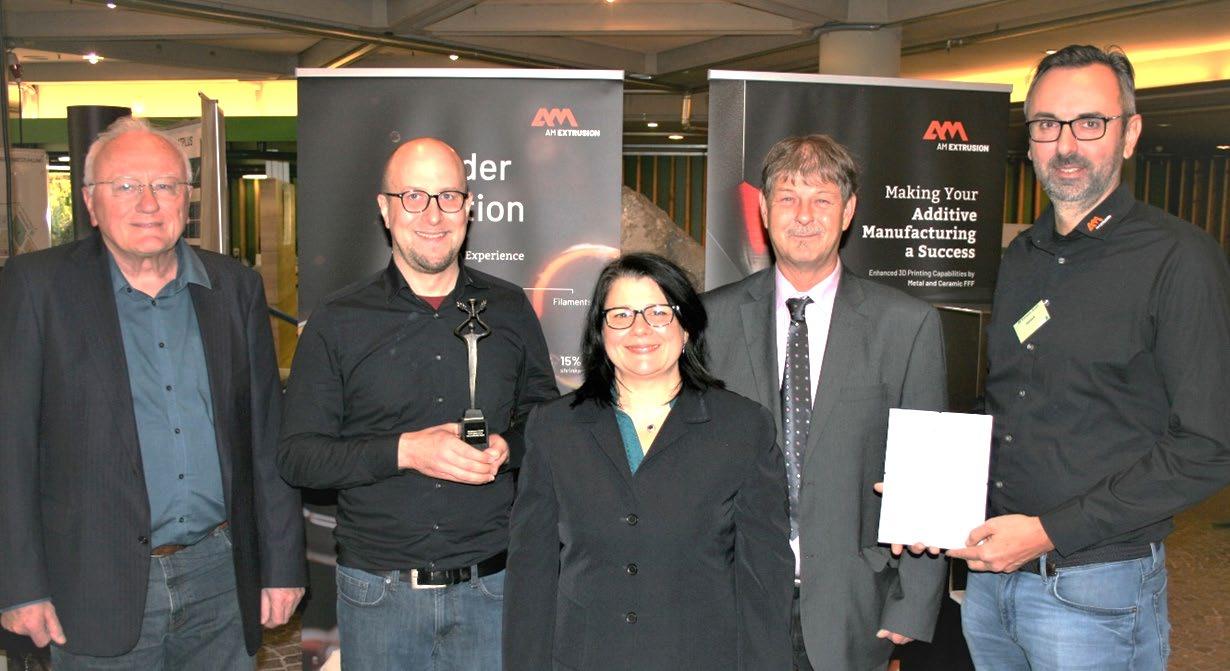
Established in 2019, AM Extrusion focuses on producing filaments that are highly-filled with metallic or ceramic powders for Additive Manufacturing. AM Extrusion claims that they can process virtually any available metal or ceramic powders into sintered materials. The company’s
VBN’s Vibenite 150 PM steel improves doctor blade manufacturing
VBN Components, Uppsala, Sweden, has collaborated with PrimeBlade Sweden, to produce a number of punches and dies built from VBN’s Vibenite® 150 Powder Metallurgy steel.

The tools are used for diecutting doctor blades, also known as duct blades or squeegees, used to remove excess paint from anilox rolls in the printing process in the packaging industry. The blades reportedly perform around 50% better than those made from traditional PM cutting steel.
“The doctor blade steel is made from 95% recycled material and can be recycled again after usage in a circular system,” stated Jimmy Nyström, Marketing Manager at PrimeBlade. “The doctor blades are
of the absolute highest quality and meet all the demands of precise tolerances. Naturally, the diecutting needs to be at the same level, which is perfectly met by Vibenite.”
Vibenite 150 is a multi-purpose wear-resistant PM steel with a high level of toughness and fatigue resistance. It has a fine-grained Fe matrix and a hardness of approximately 58–64 HRC (600–780 HV). It is well suited to functional prototypes, parts difficult to machine, tool holders, cold work applications that place demands on both wear resistance and toughness, plastic materials processing tools and wear parts.
www.vbncomponents.se
www.primeblade.se
filaments – used for Fused Filament Fabrication (FFF) – have a filling degree of 62-65 vol-% that enables them to result in high-precision components.
Dr Aljoscha Roch, Technical Manager of AM Extrusion, studied physics at the Technical University Dresden. He has been working on modifying particle surfaces for more effective incorporation into organic binder systems for AM and Powder Injection Moulding processes. He acquired his in-depth knowledge of sintering processes by studying the processing of metallic and ceramic nanoparticles.
Fachmetall GmbH is a metallurgical laboratory specialising in investigations of Powder Metallurgy and wrought materials. With its annual presentations of the international Fachmetall PM Qualification Award and QM Context Award, Fachmetall hopes to draw the attention of the public to companies with outstanding PM and quality management activities and knowledge.
www.fachmetall.de
www.am-extrusion.com

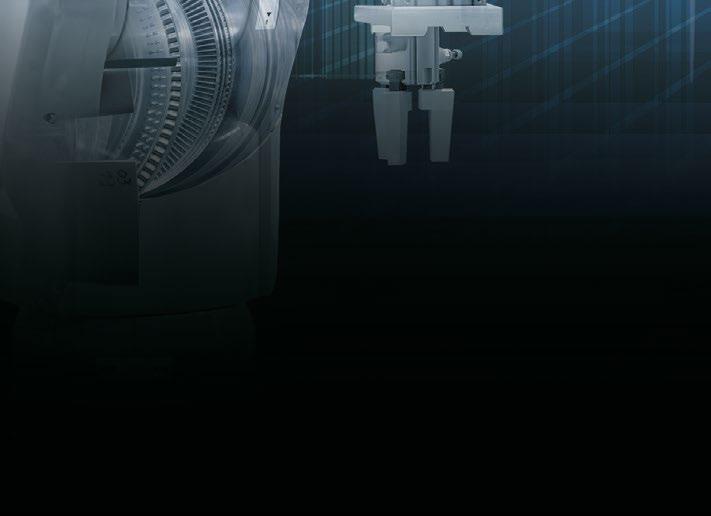



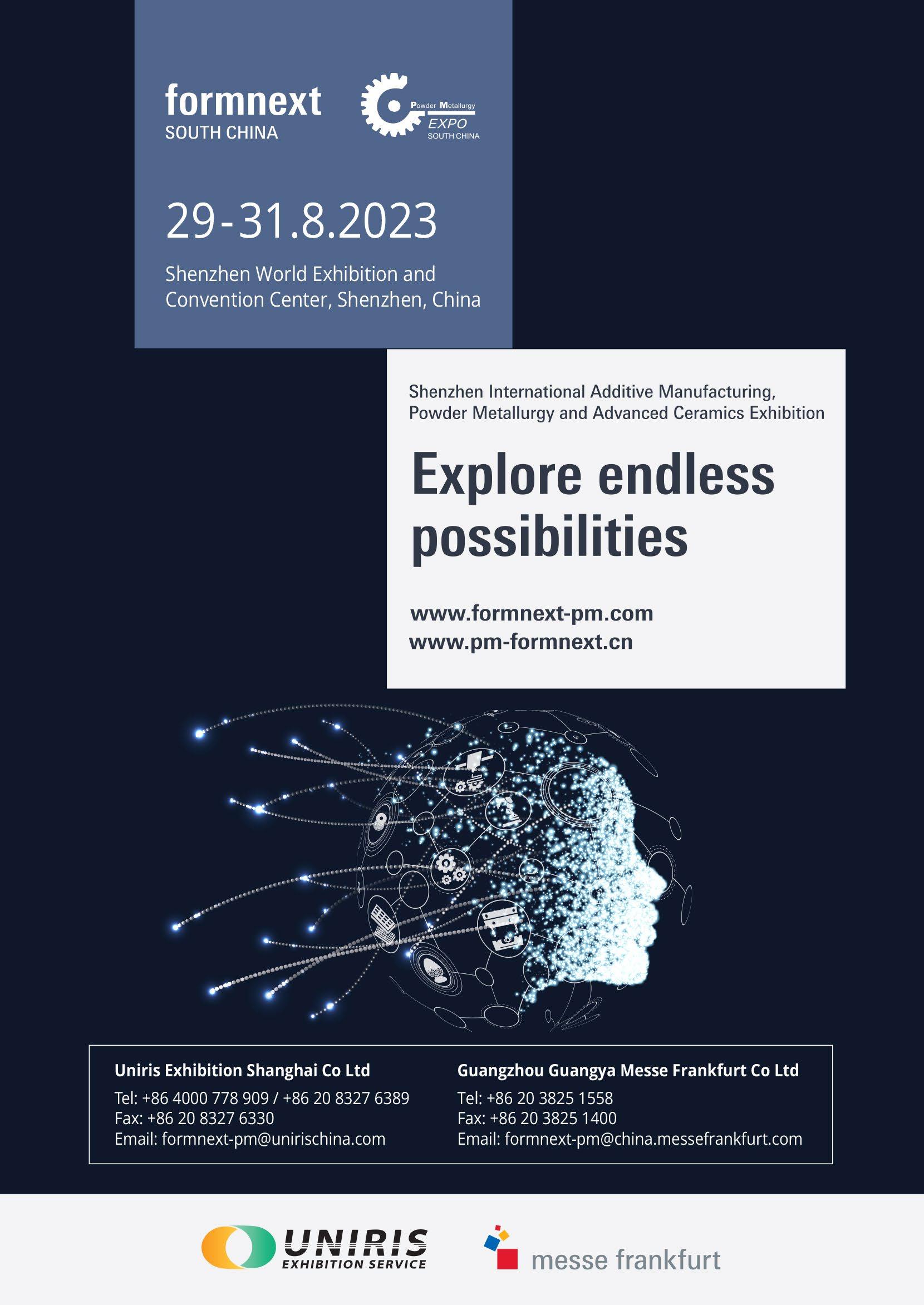
GKN Powder Metallurgy: A strategic vision for the future of permanent magnets for EVs
The transition to clean energy, acceleration in EV uptake, and demand from other renewable technologies means the market for permanent magnets is growing rapidly. GKN Powder Metallurgy recently announced it will begin manufacturing permanent magnets specifically for the EV markets in Europe and North America and is investing significantly to establish the capacity to produce up to 4,000 tonnes by 2025. Here, GKN PM shares its vision for the electric motor market and its plans to create local-to-local supply chains for permanent magnets, with insight from Thorsten Wieres, Global Program Director Magnets, and Eckart Schneider, Director of Business Development.
The total global market for permanent magnets is growing fast, according to Global Market Insights, with a CAGR of 7.4% from 2022 to 2030 [1], and the permanent magnet for traction motor market segment is growing even faster. GKN PM expects the market value of this segment to exceed £5 billion by 2030. But challenges lie ahead for the global automotive industry unless alternative sources for the rare earth minerals used to produce these magnets are developed, and sufficient manufacturing capacity is created to support this rising demand.
As Wieres explained, “We understand, from extensive market research and our discussions with Tier 1 EV manufacturers and OEMs, that permanent magnets are, and will continue to be, the main solution for electric motor designs for the foreseeable future.”

“Our prediction for the EV market is backed up by research conducted by AVL, one of the world’s leading automotive engineering companies,” he continued.

“Through its close ties to many automotive partners and its own intelligence, AVL has looked at the whole EV picture – and the design
and technology trends that are shaping the future of electric motors – to understand market needs. It predicts that more than 75% of BEV
e-motor designs will contain permanent magnets for at least the next decade.”
Powder Metallurgy permanent magnets in e-motors
PM is the preferred method for manufacturing around 80% of permanent hard magnets. Their properties are the opposite of those found in soft magnetic materials; ‘hard’ or permanent magnets retain their magnetism once charged.
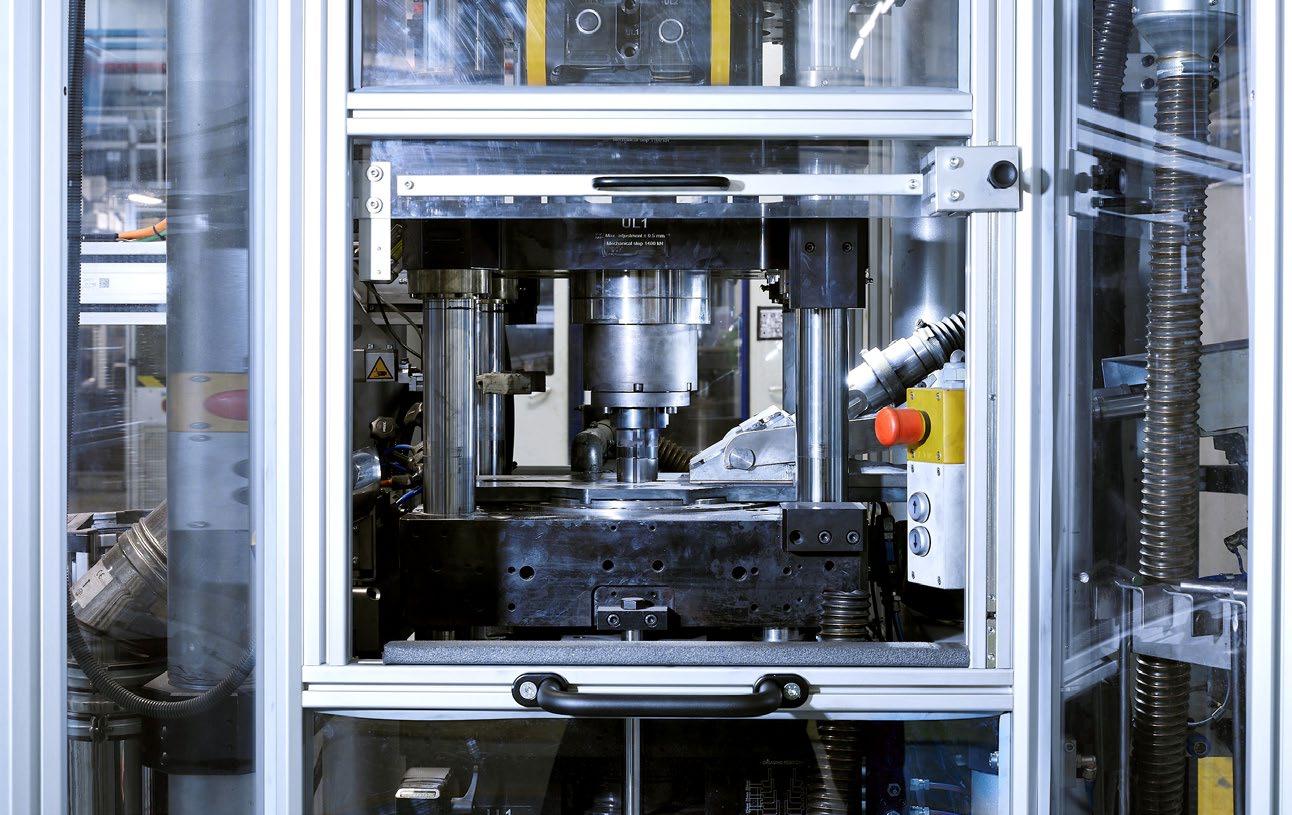
Because of this, they’re widely regarded as the most effective method to power electric vehicles. Depending on the design, traction motors for electric vehicles will contain between 2–3 kg of permanent magnets. The magnetic field these magnets emit opposes that produced by a coil. This repulsive effect causes the coil to rotate at high speed, and when attached to the axle of a vehicle, creates motion.
For automakers, the performance of electrified vehicles relies on
generating a magnetic field with a sufficiently strong repulsive effect. The strongest permanent magnets are made with rare earth materials, with neodymium magnets – or FeNdB magnets – being the most powerful available commercially.
In permanent magnet production by PM, an as-cast ingot must be broken into a powder by exposure to hydrogen, which is absorbed at the surface. The hydrogen gas flows and penetrates through the spaces between the atoms and causes the material to expand; differential expansion generates stress in the ingot and the alloy breaks down into a fine powder. This is known as Hydrogen Decrepitation (HD). The HD powder is then broken up further by jet milling, which reduces particle size to around 3 µm. At this stage the alloy powder is highly flammable and must be handled under an inert gas.
When the powder has been broken down to a fine size, each
“For automakers, the performance of electrified vehicles relies on generating a magnetic field with a sufficiently strong repulsive effect. The strongest permanent magnets are made with rare earth materials...”
grain of powder is a single crystal, which can be aligned in a magnetic field. This alignment is held in place by pressing the powder into a green compact, about 60% dense. The compact is then sintered in a vacuum at approx. 1060°C for one hour, before quenching and heat treatment are applied to achieve the optimum magnetic properties. The magnet must then be machined to the final dimensions required for the intended application.
Due to the highly reactive nature of the Nd-rich phase, FeNdB magnets tend to corrode very rapidly, particularly in moist environments. Therefore, the next stage in processing is to provide a protective barrier on the surface of the magnet via a coating process, usually with nickel but sometimes with aluminium, zinc or epoxy resin. GKN PM mostly sees demand for coatings which provided passivation only, protecting magnets during storage and transport.

Supply chain and capacity challenges

Currently, there are very few permanent magnets suppliers in Europe or the US. Because the highest concentration of the rare earths used in permanent magnets is in China, the global market has been dominated by suppliers from this single region for years, but price volatility and geopolitical uncertainties mean manufacturers are concerned about the risk posed by such an overreliance on one country for their supply.
Supply capacity is another big concern for the industry. A 2022 IEA report forecasts that the global electric car stock will expand to almost 350 million vehicles by 2030 [2]. This is driving demand in the EV manufacturing supply chain for permanent magnets and, while one region currently dominates the production and supply of permanent magnets, it does not have the capacity to fulfil rising global demand. Sufficient measures must be put in place now to prevent the scenario seen with the semiconductor chip shortage of recent
“... while one region currently dominates the production and supply of permanent magnets, it does not have the capacity to fulfil rising global demand.”
years – which, at its height, forced many automotive manufacturers to halt production – repeating itself with permanent magnets.
“The only way to prevent a shortfall in the supply of permanent magnets in the future is by introducing alternative sources in other locations, so we are less dependent on supplies from a single region. If we do not do this, the automotive manufacturing industry could find itself in a tricky situation,” explained Wieres.
No viable alternative
Supply issues are forcing OEMs and Tier 1 suppliers to seek alternative sources of permanent magnets to power the motors in electric vehicles, while others turn to their R&D departments to try to develop e-motor technologies without permanent magnets. But this will take time.
Schneider explained: “Some OEMs have launched permanent magnetfree motor designs, like externally excited e-motors. However, these
present certain technical compromises, so motor concepts that utilise permanent magnets will continue being the mainstream solution for the industry. This is because electric motors that use alternative methods are less efficient and require heavier batteries, which leads to performance, packaging, and maintenance limitations.”
These challenges have created a sense of uncertainty among manufacturers over whether they will have sufficient capacity and security of supply to serve the market in future.
“We understand the industry is nervous, which is why we are committed to developing and bringing to market a secure, sustainable and local-to-local supply of permanent magnets,” added Schneider.

How do we solve the permanent magnet supply problem?
GKN Powder Metallurgy, it could be argued, is uniquely positioned as a world-leading manufacturer of metal
“We understand the industry is nervous, which is why we are committed to developing and bringing to market a secure, sustainable and local-to-local supply of permanent magnets” —
Eckart Schneider, Director of Business Development
powders and parts to help solve these challenges.
“Our ambition to create the planned capacity to produce permanent magnets in the US and Europe is already well underway,” said Wieres. GKN PM has been a trusted partner to many Tier 1 companies and OEMs for decades, manufacturing a vast range of metal powders and vehicle components for the global automotive industry.
Wieres continued, “We produce millions of complex parts every day and have identified certain similarities across different manufacturing processes. This means we can leverage our heritage, capabilities, global footprint, and expertise to produce permanent magnets and supply them on a local-to-local basis.”
“In simple terms, what we are adding is a new component to an already wide-ranging product portfolio to bring a sustainable, secure, and reliable supply of permanent magnets to the European and US markets.”
A local-to-local supply of permanent magnets
Identifying alternative sources of supply is central to GKN PM’s localto-local supply chain strategy.

As Schneider explained, “There is already a lot of work underway within the industry to identify locations where rare earth materials can be mined and processed in other regions, and we are actively looking to partner up with these new material sources for our local-to-local strategy. We are also exploring ways and partnerships to minimise the rare earth demand and overall magnet costs by means of using recycled materials.”
Reducing environmental impact
As a business, moving into the permanent magnets market is part of GKN PM’s business-wide commitment to sustainability. The business has ambitious environmental targets in place, including achieving net-zero
greenhouse gas emissions in all its operations worldwide by 2050. Introducing a local-to-local supply chain for permanent magnets is a key part of GKN PM’s strategy to contribute to a more responsible and sustainable future.
An obvious advantage of local-tolocal supply is the associated carbon footprint reduction. Like many manufacturing sectors, the automotive industry is tasked with hitting ambitious CO 2 reduction targets. Local-to-local supply is one way manufacturers can accelerate their journey to becoming climate neutral and help them to meet government targets. Another part of our sustainability strategy is exploring the use of recycled materials to minimise environmental impact.
Wieres said: “In all our discussions with customers, the pressure of becoming more sustainable is of paramount importance, and many are looking to accelerate their efforts.”
Regional regulation is another factor driving demand for local-tolocal supply. One example of this can be found in the ‘Buy America’ direc -

tive issued by the United States’ Federal Transit Administration (FTA). The directive specifies a minimum of 70% locally sourced content for the production of rolling stock for public transport and support vehicles. Legislation like this is motivating some OEMs and Tier 1 suppliers to relocate production.
“We may see the focus shift in the coming years to increased localto-local manufacturing as a result of there being more strategically located sources of supply,” Wieres noted.
Driving the EV market forward through innovation
The EV market is constantly innovating and finding new ways to improve efficiency. This is especially true when it comes to the design of propulsion systems and permanent magnets for electric motors.
GKN PM is utilising its powder metal processing capabilities and advanced R&D facilities to work with the automotive industry in reducing the volume of the crit-
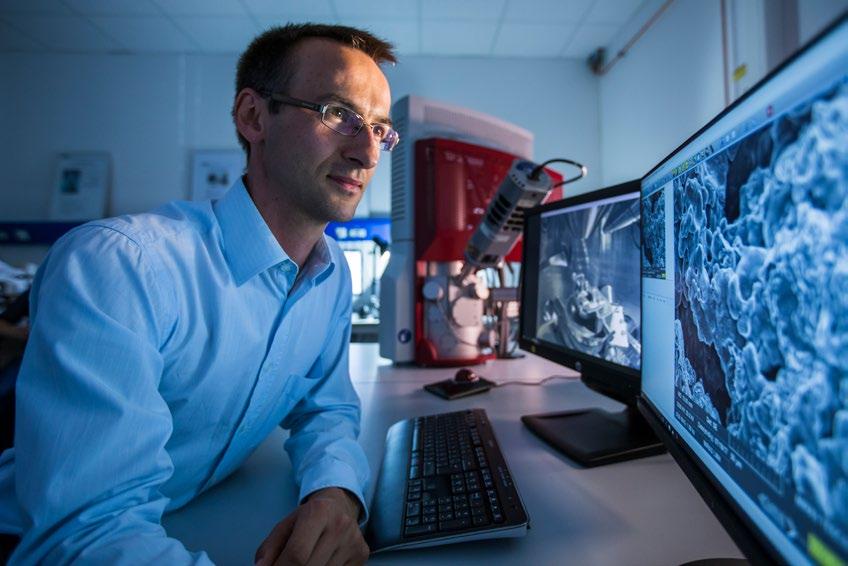
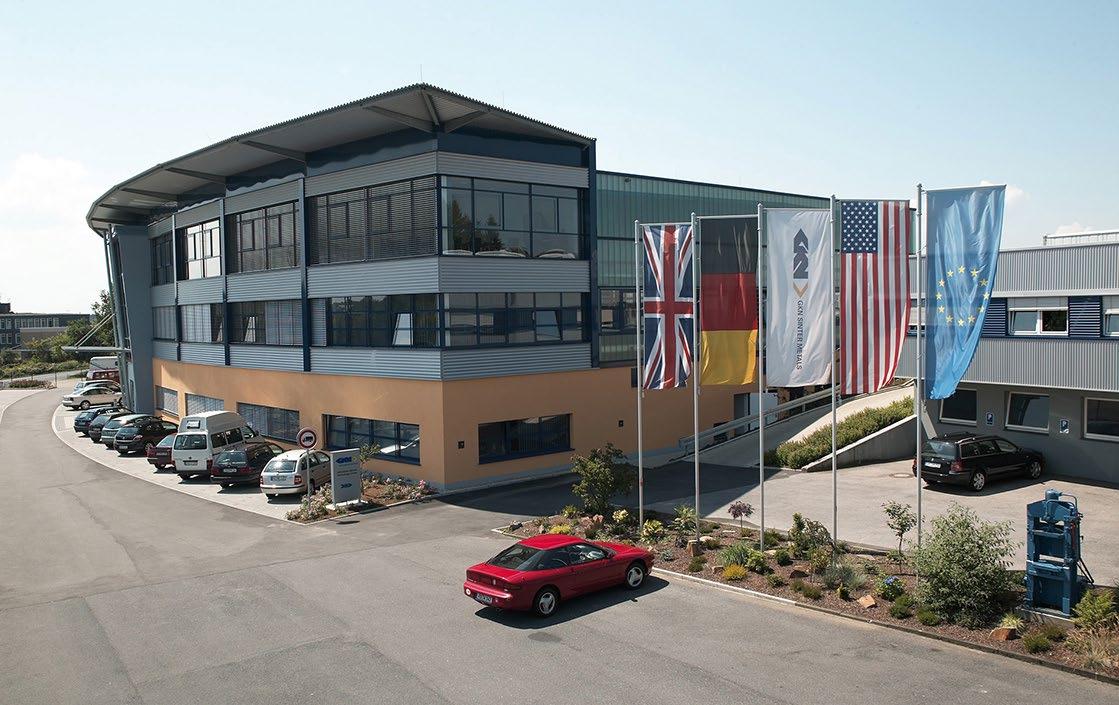
ical rare earth materials needed, while simultaneously improving the performance and efficiency of electric permanent magnet driven electric motors.
Schneider explained: “With our expertise, we can work with customers to devise optimum permanent magnet formulations, looking at different combinations of magnet volume, shapes, designs, alloy compositions and using rare earth content as efficiently as we can while achieving maximum efficiency of the product. Because we understand the technology and the differing requirements, we can produce components according to what the market says it needs.”
“We are also exploring the use of other novel materials within the application to reduce the rare earth content of the magnets,” he noted.
Pilot production lines
With a dedicated magnets project team, which brings together multidisciplinary experts, GKN PM is currently testing a pilot production line for permanent magnets at its innovation centre for metal powders in Cinnaminson, New Jersey, USA. A second production line will become operational in 2023 at its innovation centre for Powder Metallurgy manufacturing in Radevormwald, Germany. Wieres explained, “Once we have optimised the production process at these facilities, we will begin rolling it out in other locations, giving automotive manufacturers a more reliable, more local, and more sustainable supply of permanent magnets.”
GKN PM’s investment into the necessary facilities and equipment is underway, and it is on track to finalise the proof of concept and deliver the first sample magnets to its customers very soon.
“Things are progressing well, with interested customers receiving samples soon. We will then make the production lines operational so we will be able to fulfil OEM requirements. This will be a very significant milestone for us as we embark
on the next phase of our planned programme towards developing full production capacity,” Wieres stated.
In conclusion
For years, a single region has dominated the production and supply of permanent magnets, but this is a significant risk to EV manufacturers. In such a rapidly growing market, GKN PM believes the present supply chain is not fit for purpose.
Schneider concluded: “We are working to identify and source rare earth materials and build manufacturing capacity outside of the singular regional focus that exists at the moment. Without these steps we are in danger of seeing EV production come to a standstill.”
“Our extensive experience in supplying the automotive industry, existing OEM partnerships, established manufacturing processes, and global production footprint, means we are well placed to provide our customers in Europe and the US with a local-to-local source for permanent magnets soon, a solution that will bring much-needed stability, security, and sustainability to the market.”

Contact
Christiaan P Klaus, Marketing Manager Europe, GKN Powder Metallurgy christiaan.klaus@gknpm.com www.gknpm.com
References
[1] https://www. globenewswire.com/en/newsrelease/2022/08/09/2494506/0/en/ Permanent-Magnet-Market-to-crossUSD-51-Billion-by-2030-says-GlobalMarket-Insights-Inc.html
[2] https://www.iea.org/reports/ by-2030-evs-represent-morethan-60-of-vehicles-sold-globally-and-require-an-adequate-surge-inchargers-installed-in-buildings
POWDER METALLURGY REVIEW

FROM OUR ARCHIVE
JSJW NEW MATERIALS: BRINGING HIGH-QUALITY, HIGHVOLUME SPHERICAL METAL POWDER PRODUCTION TO THE CHINESE MARKET

Based at the Powder Metallurgy Industrial Park of Taizhou City, Jiangsu Province, JiangSu JinWu (JSJW) New Materials Co., Ltd. has leveraged thirty years of research at Beijing University of Science and Technology to produce industrial volumes of highquality spherical titanium, nickel superalloy and aluminium powders, as well as high-entropy powders, for applications including MIM, AM and PM. Dr Chiou Yau Hung (Dr Q) visited the company on behalf of PM Review and here offers an overview of how the management at JSJW has used its research expertise to advance the production and processing of challenging PM materials.
FROM AUTUMN/FALL 2021 ISSUE OF PM REVIEW

CAESARS PALACE

Additive Manufacturing with Powder Metallurgy
technical program


Attendees will have access to hundreds of technical presentations from worldwide experts on the latest research and development.
TRADE EXHIBIT
The largest annual American exhibit showcasing leading suppliers of powder metallurgy and metal additive manufacturing powders, equipment, and products.
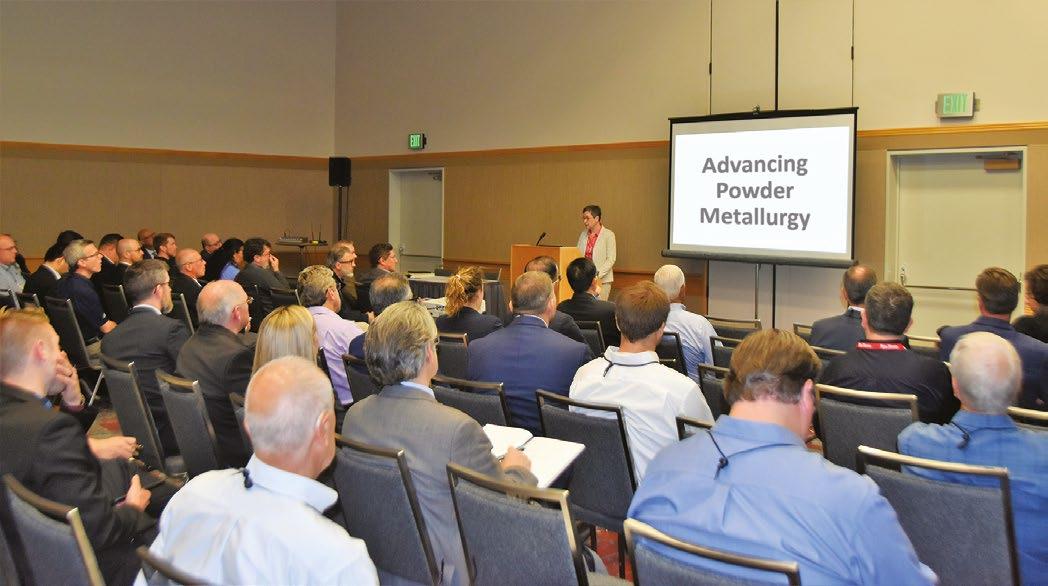

Building trust in the Powder Metallurgy industry: The role of standardisation and an update on recent work by ISO/TC 119

Adhering to industry standards is crucial for fostering customer confidence and maintaining the integrity of the Powder Metallurgy field. Standards establish a framework for the language used by the industry, characterisation techniques, and material specifications. They play a vital role in both technological development and business transactions, where a clear understanding of terms, material properties, and measurement methods is necessary. In this article, Mats Larsson, chairman of the technical committee ISO/TC 119 – Powder Metallurgy, explains the importance of standardisation in PM and offers insights into the organisation’s most recent work.
The foremost aim of international standardisation is to facilitate the exchange of goods and services through the elimination of technical barriers to trade. A ‘standard’ is a tool to facilitate a transaction enabling two parties to understand exactly what is being carried out. Utilising standardisation, common solutions to recurring problems in an industry or within a subject area are developed. Standards are used to define uniform and transparent procedures, increase quality, prevent misunderstandings, and avoid having to reinvent the wheel.
Using standards is voluntary, but can serve as a mandatory reference in legislation and public procurement.
How are industries standardised?
Standards are created by standard development organisations (SDOs) at international, regional or national levels. Examples of SDOs at an inter -

national level are ISO, IEC and ASTM International.
The International Organisation for Standardization (ISO) is an independent, non-governmental organisation with a membership of 167 national standards bodies. It has published more than 22,500 international stand -
ards and related documents, covering almost every industry. Through its members, it brings together experts to share knowledge and develop voluntary, consensus-based, market-relevant international standards that support innovation and provide solutions to global challenges.
1 2 3 4 5 6 Publication of International Standards
DELIVERABLES
First CD (Committee Draft) or ISO/PAS (Publicly Available Specification)
DIS or ISO/TS (Technical Specification)
ISO/TR (Technical Report) for non-normative documents
Enquiry
Final text for processing as FDIS (Final Draft International Standard)
scope of a subcommittee must be within the scope of the parent technical committee. Technical committees, project committees and subcommittees can establish working groups to focus on specific tasks such as developing the first draft of a standard or deliverable.
ISO standard development
The standard development process includes multiple stages before a new or revised standard is published. How this process is defined in the ISO framework is summarised in Fig. 2.

Final text of International Standard ISO International Standard International workshop agreement
Development of new standards, or revision of an existing standard, is usually started by registering a New Work Item Proposal (NP). NPs relating to an existing committee will be carefully reviewed by the Committee Manager before launching. This is needed to ensure that there are no overlaps or possible conflicts with the scope of other existing committees and that the time frame is realistic.
A project plan with clear milestones and roles and responsibilities is developed at the start of the enterprise to ensure the project is developed within the agreed time frame.
Usually, a working group (WG) is set up by the parent committee to prepare the Working Draft (WD). This working group is made up of experts and a Convenor (who is usually the project leader).
ISO standards are developed by groups of experts from all over the world – these are part of larger groups called technical committees. These experts negotiate all aspects of the standard, including its scope, key definitions, and content. In total, there are more than 250 technical committees within the ISO.
Participation in an ISO committee is through national standardisation bodies (NSB). P-members are required to play an active role in
the work of a committee, as well as vote on all official committee ballots. They are also expected to base their positions on the consensus of national stakeholders, preferably through national mirror committees. O-members follow the development of a standard, and possibly contribute to the work, without committing themselves to active participation.
A technical committee may set up one or more subcommittees. The
When the experts in the WG are ready with a draft, it is then forwarded to the working group’s parent committee which will decide which stage to go to next (Committee or Enquiry stage).
The Committee stage is optional. During this stage, the draft from the working group is shared with the members of the parent committee. When the Committee stage is used, a Committee Draft (CD) is circulated
to the members of the committee for comment on the proposal. Successive CDs can be circulated until a consensus is reached on the technical content.
The next stage is the enquiry stage where a Draft International Standard (DIS) is submitted and circulated to all ISO members, who have twelve weeks to vote and comment on it. The DIS is approved if two-thirds of the P-members of the committee are in favour and not more than one-quarter of the total number of votes cast are negative. If the DIS is approved, the project goes straight to publication. However, the committee leadership can decide to include the approval stage if needed.
If the draft has been significantly revised following comments at the DIS stage or has technical changes (even if the DIS has been approved), committees must carry out an Approval stage.
If this stage is used, the Final Draft International Standard (FDIS) is submitted and circulated to all ISO members for a twomonth vote to decide whether the standard is suitable for publica -

tion. The standard is approved if two-thirds of the P-members of the committee are in favour and not more than one-quarter of the total number of votes cast are negative. After the FDIS, only editorial corrections are made to the final text.
The final stage in the standard development process is the publication stage where the Committee manager submits the final document to the ISO Central secretariat for publication as an international standard.
An option in standard development activities where the advancement is not sufficient to create a standard is to publish technical specifications and technical reports.
ISO/TC 119 Powder Metallurgy Committee
In the field of Powder Metallurgy, the committee ISO/TC 119 has been active since 1967, with the first standard – ISO 2738 ‘Permeable sintered metal materials – Determination of density
and open porosity’ – published in 1973. The first meeting was held in Moscow, where the scope of the committee was defined, and it was decided how the work should be divided into subcommittees.
The scope of ISO/TC 119 is ‘Standardization of powder metallurgical materials concerning terms and definitions, sampling, testing methods and materials specifications.’ Testing methods include methods for the characterisation of metal powders as well as methods for the characterisation of sintered materials.
In ISO/TC 119, there are eleven participating members and twenty observing members. Nations represented in this membership are shown in Fig. 3.
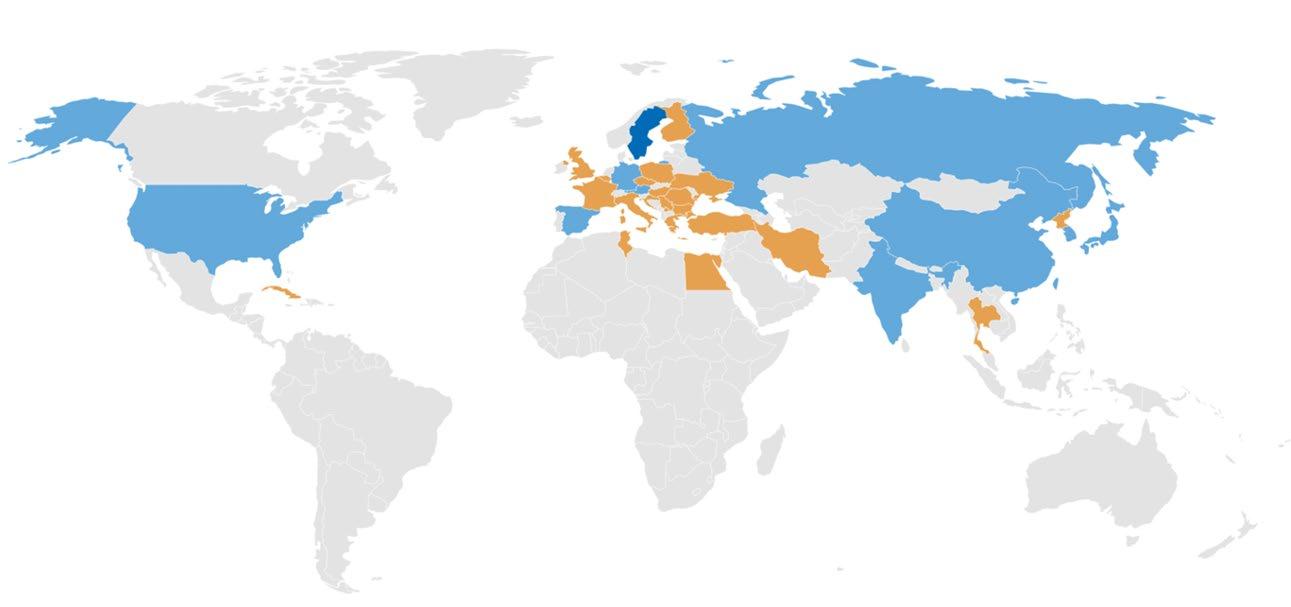
The work in ISO/TC 119 Powder Metallurgy is organised into four sub-committees:
• SC2 - Sampling and testing methods for powders (including powders for hardmetals)
• SC3 - Sampling and testing methods for sintered metal materials (excluding hardmetals)
ISO/DIS 3252
Powder Metallurgy — Vocabulary
ISO/TC 119/SC2 Sampling and testing methods for powders (including powders for hardmetals)
ISO/DIS 4491-2
ISO/DIS 3995
Metallic powders — Determination of oxygen content by reduction methods — Part 2: Loss of mass on hydrogen reduction (hydrogen loss)
Metallic powders — Determination of green strength by transverse rupture of rectangular compacts
ISO/TC 119/SC3 Sampling and testing methods for sintered metal materials (excluding hardmetals)
ISO/DIS 2740
ISO/DIS 5842
ISO/AWI TR 23858
Sintered metal materials, excluding hardmetals — Tensile test pieces
Powder Metallurgy — Hot Isostatic Pressing — Argon detection using gas chromatography and mass spectrometry techniques
Preparation of metallographic specimens used for porosity determination
ISO/TC 119/SC4 Sampling and testing methods for hardmetals
ISO 28080:2021 Hardmetals - Abrasion tests for hardmetals
ISO/DTR 23867 Ultrasonic testing of hardmetals
ISO/TC 119/SC5 Specifications for powder metallurgical materials (excluding hardmetals)
ISO/DIS 5755 Sintered metal materials — Specifications
Table 1 Ongoing PM standardisation activities in ISO/TC 119
• SC4 - Sampling and testing methods for hardmetals
• SC5 - Specifications for powder metallurgical materials (excluding hardmetals)
There are seventy-two published standards related to ISO/TC 119 and its sub-committees, and thirteen standards are under development. Two of the standards contain material specifications: ISO 5755 and ISO 22068, covering sintered metal materials and
sintered metal injection moulded materials, respectively.
One of the main activities of standardisation committees is to keep relevant standards up to date. As technology and the industry evolve, there will be a need to update existing standards as well as develop new standards. In the ISO, there is a procedure where all standards are reviewed every fifth year to ensure that the content is relevant and up to date. In this review,
the experts consider the standards and, through their NSB, vote to confirm, revise/amend, or withdraw the standard. In cases of voting to revise/amend, the expert provides comments on what to revise and, based on this input, standards are commonly opened for revision to implement the proposed improvements.
When gaps in existing standards are identified, the committee will initiate the development of new standards to meet the needs of the Powder Metallurgy industry. Proof of the committee’s ambition to keep the standards up to date is that 24% of the ISO/TC119 standards have been published or revised during the last five years.
An ongoing effort to further develop test method standards for PM aims to add precision statements to the standards. These are developed by conducting inter-laboratory studies and, based on a statistical analysis of the results, the repeatability and reproducability of the method is calculated. The need to consider the precision of methods arises because tests performed on presumably identical materials do not, in general, yield identical results. In the practical interpretation of measurement data, this variability must be considered.
For example, when comparing test results of two batches of material, these will not indicate a fundamental quality difference if the difference can be attributed to the inherent variation in the measurement method. Knowing the repeatability and reproducibility of test methods is, therefore, important to interpret the results of measurements. On this background, ISO/ TC 119/SC 2 has initiated a programme aiming to develop precision statements for the characterisation methods.
A list of on ongoing activities in ISO/TC 119 is shown in Table 1.
“There are seventy-two published standards related to ISO/TC 119 and its sub-committees, and thirteen standards are under development.”
Table 2 Precision statement calculated for the standard ISO/DIS 4491-2 Metallic powders - Determination of oxygen content by reduction methods - Part 2: Loss of mass on hydrogen reduction
Ongoing activities in ISO/TC 119
ISO/FDIS 3252 Powder Metallurgy — Vocabulary

In this standard, the terminology used in Powder Metallurgy is defined. New terminology is required as technology develops and the fifth edition of this standard with new terminology added was published in 2019. Even though the latest issue of this standard is recent, another revision is ongoing to include new illustrations of press tools and tool adaptors and the associated terms.
ISO/DIS 4491-2 Metallic powders
— Determination of oxygen content by reduction methods — Part 2: Loss of mass on hydrogen reduction (hydrogen loss)
A precision statement is being added to this standard. To develop this precision statement, an interlaboratory study – including ten laboratories in the USA, Europe and Asia – has been conducted and, based on the outcome, the repeatability and reproducibility of the method have been calculated. The precision statement calculated is shown in Table 2. The revised standard with the precision statement added is now in the voting process before being finally approved.
Meanwhile, the programme to develop a precision statement is ongoing, and an inter-laboratory
study is ongoing for ISO 3953 ‘Determination of tap density,’ which is the next standard to have a precision statement added.
ISO/DIS 3995 Metallic powders
— Determination of green strength by transverse rupture of rectangular compacts
This is a smaller revision based on input from the fiveyear review of the standard. The updates of these standards include:
• Allowing automated compacting sequence
• Mandatory reporting of lubrication technique and lubrication details
• Proposed lubricants to be used in the metal powders are changed from stearic acid to synthetic wax
ISO/DIS 2740 Sintered metal materials, excluding hardmetals — Tensile test pieces
A work item has been created for this standard which defines the tensile test pieces used for sintered Powder Metallurgy materials. Besides several editorial corrections and adjustments, a new alternative specimen geometry is considered. This alternative geometry aims to decrease the stress gradients and minimise the risk of rupture in the gripping area of the specimen.
ISO 5842:2022 Powder Metallurgy — Hot Isostatic Pressing — Argon detection using gas chromatography and mass spectrometry techniques
This is a new standard, published in 2022, which specifies a method of detecting the presence of argon by gas chromatography and mass spectrometry techniques in metal powder-produced components, consolidated by Hot Isostatic Pressing. This standard specifies the calibration and functionality test for the equipment covered. It also specifies methods for sampling, sample preparation and sample test procedure of Powder Metallurgy HIP components to detect the presence of argon. A HIP part produced by Carpenter Powder Products is shown in Fig. 4, overleaf.
ISO/AWI TR 23858 Preparation of metallographic specimens used for porosity determination
The density of a Powder Metallurgy material is a key property that is most often determined by Archimedes’ principle (weighing a sample in air and water). However, that method is not always possible to use – for instance, when measuring local density in a smaller section of a part. In such cases, local density can be estimated from solid material density and Powder
Metallurgy material porosity measured by metallographic methods.
Since quantifying porosity in a sintered part by metallographic methods is challenging, and the precision of the results is not sufficiently high, the method is not yet mature enough to be standardised at this stage. There is, however, valuable information on how to conduct density determination by metallographic methods generated in the work item. This is published as a technical report which identifies and describes aspects that are
important for the metallographic assessment of the porosity of Powder Metallurgy materials.
ISO 2738 Sintered metal materials, excluding hardmetals — Permeable sintered metal materials — Determination of density, oil content and open porosity
This standard covers the method for density determination by Archimedes’ principle. A preliminary work item has been created to
assess the influence of irregular sample shapes and small sample sizes on the results of density determination. A study of density determination of small gears has been conducted where the smallest only weighed 1.5 g. Different impregnation methods used for closing the porosity before immersing the sample in water have also been compared; a precision study on the density determination was also conducted. The next step is to consider how these findings can be incorporated to improve the standard.
ISO 28080:2021 Hardmetals — Abrasion tests for hardmetals
This is a new standard that was issued in 2021, specifying a generic test method to determine the abrasion wear characteristics of hardmetals (Fig. 5). The test is appropriate for use in situations where test laboratories need to simulate abrasive damage. The procedure includes information which enables the test to be used in a variety of different conditions:
• With counter-face wheels of different stiffness (e.g., steel and rubber)
• Wet and dry
• Different abrasive sizes
• Different chemical environments
ISO 5755:2022 Sintered metal materials — Specifications
This standard covers a wide range of sintered metal materials, including materials for structural parts and bearings. Materials for structural parts include the following material classes:

• Fe-C steels
• Fe-Cu-C steels
• Fe-P-C steels
• Fe-Ni-C steels
• Fe-Ni-Cu-Mo-C diffusionalloyed steels
• Fe-Ni-Cr-Mo pre-alloyed steels
• Fe-Ni-Cu-Mo-C hybrid-alloy steels
• Cu-infiltrated steel
• Stainless steels
• Cu-based alloys
Material for bearings includes the following material classes:

• Bronze
• Bronze-graphite
• Fe
• Fe-Cu
• Fe-bronze
• Fe-graphite
The fourth edition of this standard was published in 2022 and has been technically revised with revisions to Annex B and the addition of Annex C.
Annex B has been updated to include information on the metallographic structures of sintered materials. The metallographic structures of sintered steels differ from the metallographic structures of wrought steels. There is, of course, the obvious difference that sintered steels have porosity, but sintered steels can also exhibit gradient alloying and heterogenous structures not found in
conventional steels. This annex, containing representative metallographic structures of sintered steels, is a reference that can be used, for example, in communication with users of sintered components that are not used to this type of material and to illustrate the types of microstructure that can be expected in sintered steels.
Annex C was added to include tables of equivalences of the materials of the standard with the materials of other commonly used material standards for sintered steels. This includes references

between the following standards: ISO 5755, DIN 30910, MPIF standard 35, ASTM B 783-13 and JIS Z 2550.
There are several areas to be identified to improve the material standards governed by ISO TC 119/SC 5, both to cover relevant materials that are used today as well as more recently introduced types of material. This is to complement ISO 5755 Sintered metal materials and ISO 22068 Sintered-metal injection-moulded materials with new material. Case-hardened sintered steels are a class of materials
“There are several areas to be identified to improve the material standards governed by ISO TC 119/SC 5, both to cover relevant materials that are used today as well as more recently introduced types of material.”
that is actively being considered for inclusion in the ISO 5755. Another category of materials of interest to standardise are Soft Magnetic Composite (SMC) materials, which are not covered by any ISO standard today. A fundamental difference from sintered steels is that SMC materials are not sintered, and these materials are used for their electromagnetic properties rather than their mechanical properties. For these reasons, SMC materials are not covered by the scope of the existing material standards. Therefore, further work is planned to develop a separate material standard for SMC materials.
Getting involved in Powder Metallurgy standardisation
Standards are only as good as we make them. Standardisation work is driven by experts in industry and academia. It would be a great disadvantage for the Powder Metallurgy industry, in competition with other manufacturing technologies and materials, if relevant standards for the industry were not continuously developed and maintained. Being involved in standardisation work and developing standards not only benefits the industry as a whole, but offers great opportunity to influence the content of standards. On a
personal level, it is also rewarding work, collaborating with Powder Metallurgy colleagues for the benefit of the industry.
New members in ISO/TC 119 Powder Metallurgy are very welcome, both experts from participating members as well as new experts representing NSBs who are not yet members. Experts who are interested in contributing to standardisation work can participate through their national standardisation body.
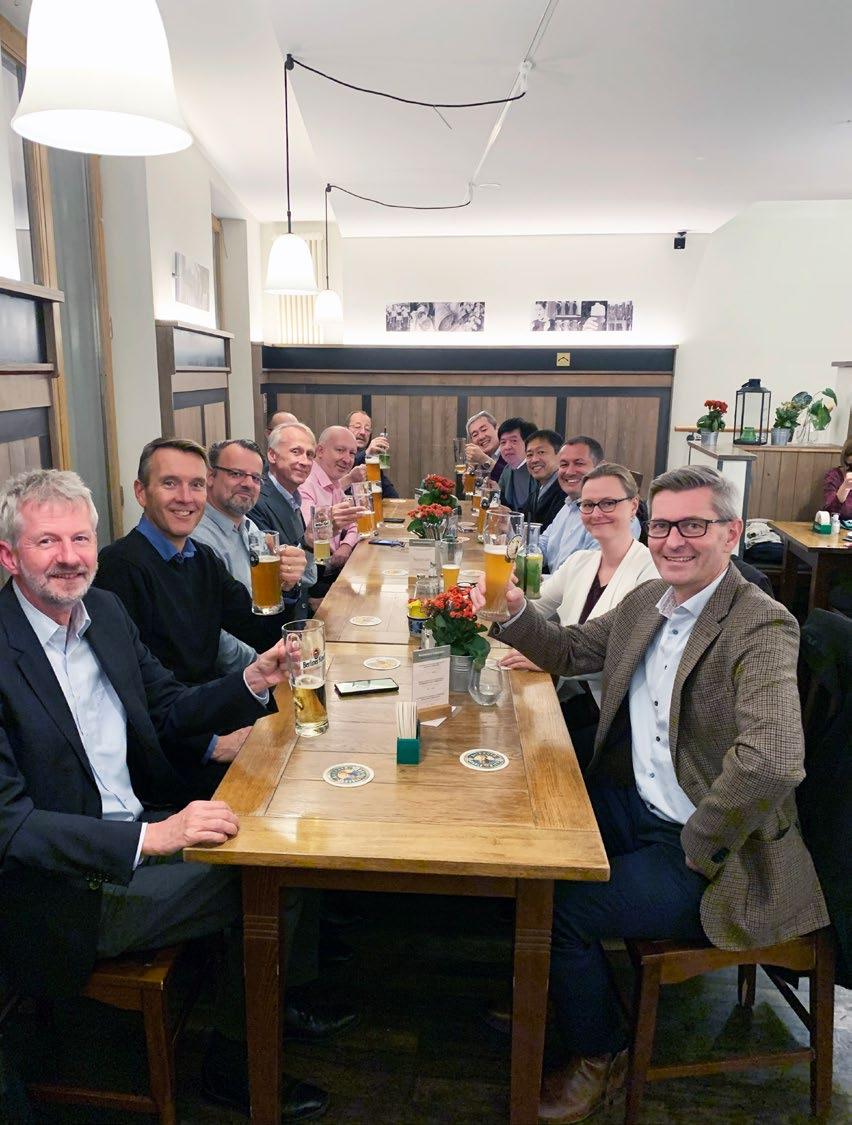
If you want to get involved in Powder Metallurgy standardisation work and are not sure how to contact your national standardisation body, you are welcome to contact ISO/ TC 119’s secretariat for guidance.
Contact Otto Björnberg Committee manager otto.bjornberg@sis.se Mats Larsson Committee chairman mats.larsson@hoganas.comINTERNATONAL CONFERENCE ON POWDER METTALURGY & PARTICULATE MATERIALS (PM 23) & EXHIBITION
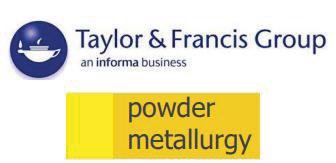

Why attend PM 23?
Powder Metallurgy (PM) is a technique in which particulate materials are blended, compacted and sintered to the desired end-use product Few of the advantages the PM offers over other metal forming technologies such as forging and metal casting are advantages in material utilization, shape complexity, near-net-shape dimensional control, etc Over the past few years, PM has been widely recognized as a preferred process for producing high-quality parts for diversified applications The development of lifestyle & health devices, VVT, hybrid vehicles, electric vehicles, fuel cells, catalytic converters, composite electrical contacts, advanced sensors, light weight components and thermoelectric devices have been made possible by the use of several technologies that comprise the science & practice of PM This conference addresses these and related developments by way of presentations made by experts in each field. The conference attendees will have access to more than 100 technical presentations from worldwide experts presenting the latest technology developments in this fast-growing field Also, they will have a golden opportunity to get their research published in renowned international journals The concurrent 48th Annual Technical Meet of PMAI provides a platform for industrialists, researchers and students from scientific establishments & academia to present their work
Important Dates:
28th Feb, 2023
Submit
Publication Partners:
PMAI TRANSACTIONS OF POWDER METALLURGY ASSOCIATION OF INDIA


Topics:
❖ Industrial PM (press & sinter) technology forauto, electrical and machine parts
❖ Powder Injection Molding (MIM &CIM)
❖ Additive Manufacturing(AM)
❖ Hard Metals & Diamond Tools
❖ Development of materials & alloys for emerging applications
❖ Technical Ceramics &Composites
❖ Vehicle weight reduction
❖ Porous materials
❖ PM in Electric Vehicles(EVs)
❖ PM in bio-medical apps &devices
❖ Powder production & characterization
❖ Compaction & other forming processes
❖ Binder & feedstock development
❖ Hot Isostatic Pressing(HIP)
Venue:
HOTEL LALIT MUMBAI Sahar Airport, Navpada Marol Andheri East, Mumbai Maharashtra India 400059
❖ Laser sintering, cladding and coating
❖ Testing & data mining
❖ Sintering & post sintering processes
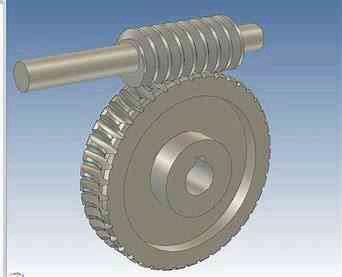
❖ Spark plasma & hot press sintering
❖ Dimensional control
❖ Heat treatment & surface engineering
❖ Aluminum sintering
❖ Refractory metals
❖ Magnetic materials
❖ Materials for aerospace, defense & nuclearapps
❖ Materials for energy generation & storage
❖ Functionally gradient materials
❖ Ceramics & composites
Conference Secretariat
Mr. Swapnil Sable (+91 9096943327)
Mr. K.S.Samant (+91 9820951180)
convener@pmai.in
WHERE IDEAS TAKE SHAPE.
We know that additive manufacturing offers undreamed of potential. In addition to the printer, however you also need the upstream and downstream processes plus the experts, who have mastered the technology. You’ll only find all this at the AM highlight Formnext in November.
For knowledge transfer, industry news and connecting with the AM community all year round visit formnext.com Be

High-volume powder production for Additive Manufacturing: SMS group’s continuous metal powder production process

SMS group GmbH’s newly developed continuous powder production process enables up to 4,000 tons of high-quality atomised metal powder to be produced every year for use in Additive Manufacturing and other technologies. This comes just in time to meet the challenges of a growing industrial AM market, which has seen demand for metal powder expand significantly in recent years. SMS group’s Yannik Wilkens explores the continuous powder production concept and the step change it represents in the high-volume production of atomised powders for AM.
The demand for metal powder has grown significantly in recent years, particularly due to the ongoing industrialisation of Additive Manufacturing. In order to meet the high quality requirements in this field, powders are atomised under inert gas. With some alloys, melting is additionally performed under vacuum, in a vacuum induction melting gas atomisation (VIGA) process.
Gas atomised metal powders are produced as standard in a batch process. The typical batch process starts with melting of the charge material under vacuum or inert gas. The entire liquid melt is then atomised through a nozzle under inert gas. However, longer heating and cooling phases between batches make this mode of operation relatively inefficient.
How the continuous powder production plant works

In addition to its conventional gas atomisation plants, which offer batch-type operation, SMS group has
developed a highly innovative solution for powder production – the continuous powder production process (Fig. 1). This development was brought about in close collaboration with a major company based in the United States.

This continuous powder production plant enables the costeffective, large-scale production of up to 4,000 tons of powder per
year, an output many times higher than is possible via the traditional gas atomisation process. The integrated plant was developed to meet the rapidly growing demand for metal powders and the rising cost expectations in the market (prices for spherical, highquality metal powders are now significantly lower than they once were).
The availability of cost-efficient, high-quality powders will be one of the main drivers to push metal AM forward into a sustainable industrial technology. The increased capacity offered by SMS group’s continuous powder production process creates enormous economies of scale. Set-up
times as well as melting and cooling times are reduced. In addition, the continuous process reduces the number of personnel required, as well as electricity consumption in relation to output. Overall, this leads to significant reductions in CAPEX and OPEX for every ton of powder produced (Fig. 2).
In the new continuous powder production plant (Fig. 3), melting and atomisation are performed independently. Two large vacuum induction melting (VIM) furnaces continuously hold the liquid melt, which is atomised successively through the nozzle using inert gas at high pressures of up to 65 bar. One VIM furnace melts the charge material while the other pours the liquid melt.
To achieve the highest level of purity of the powder during production, the melting and refining of metals and alloys takes place in a vacuum or an inert gas atmosphere. Generally, the highest degree of quality is attained, as with the VIGA process. Due to the special plant design, sphericity is also improved. The atomising process – based on the close-coupled principle – guaran -

tees specified grain size distribution of metal powders.
The nozzle is traditionally the weak point in the atomisation process. To avoid having to interrupt the process following a nozzle unit failure with the resulting downtime, the new process allows the unit to be changed quickly and easily during operation.
In addition to the VIM route, where pure scrap is used as feedstock, the new process can also work with an existing liquid material supply, like in a meltshop. The metallurgical route with basic scrap, however, results in lower input material costs. In this scenario, the material is melted in an electronic arc furnace and treated by a vacuum oxygen decarburisation unit.
After atomisation, the powdergas mixture passes through pipes to the cyclone, where it is separated. In order to minimise the cleaning effort involved and to ensure an efficient production process, redundant pipes and cyclone units are used for different materials.
The new process is backed up by an intelligent powder handling and
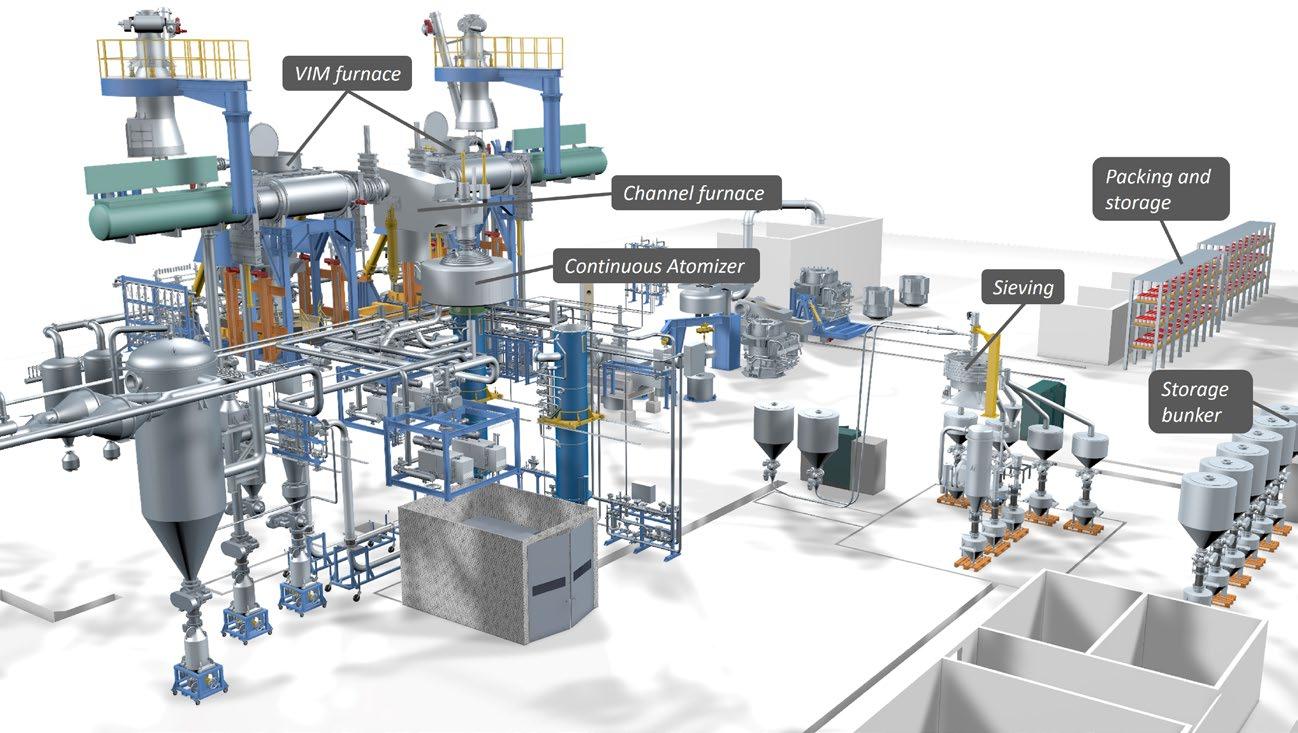
storage system, in which powder is temporarily stored and cooled in an alloy-grade storage silo between the atomiser and screen. A new type of screening and classifying unit automatically classifies the powder. From there, the powder is transferred to the grain size fraction silos before being packed. Packing takes place in an automatic robot-controlled packing machine, specially designed to handle the large quantities of powder. A scrap warehouse and a packaging area complete the integrated factory solution.
SMS’s Additive Manufacturing competence centre
As a supplier of various atomisation technologies as well as a user of Additive Manufacturing, SMS group operates an AM competence centre at its Mönchengladbach site in Germany. The centre consists of an industrial-scale VIGA system, a Laser Beam Powder Bed Fusion (PBFLB) machine, and a powder analysis laboratory. Due to the centre’s wide range of activities, experience can be gained from every single manufacturing step along the process chain, allowing powder production and AM processes to be continuously optimised.
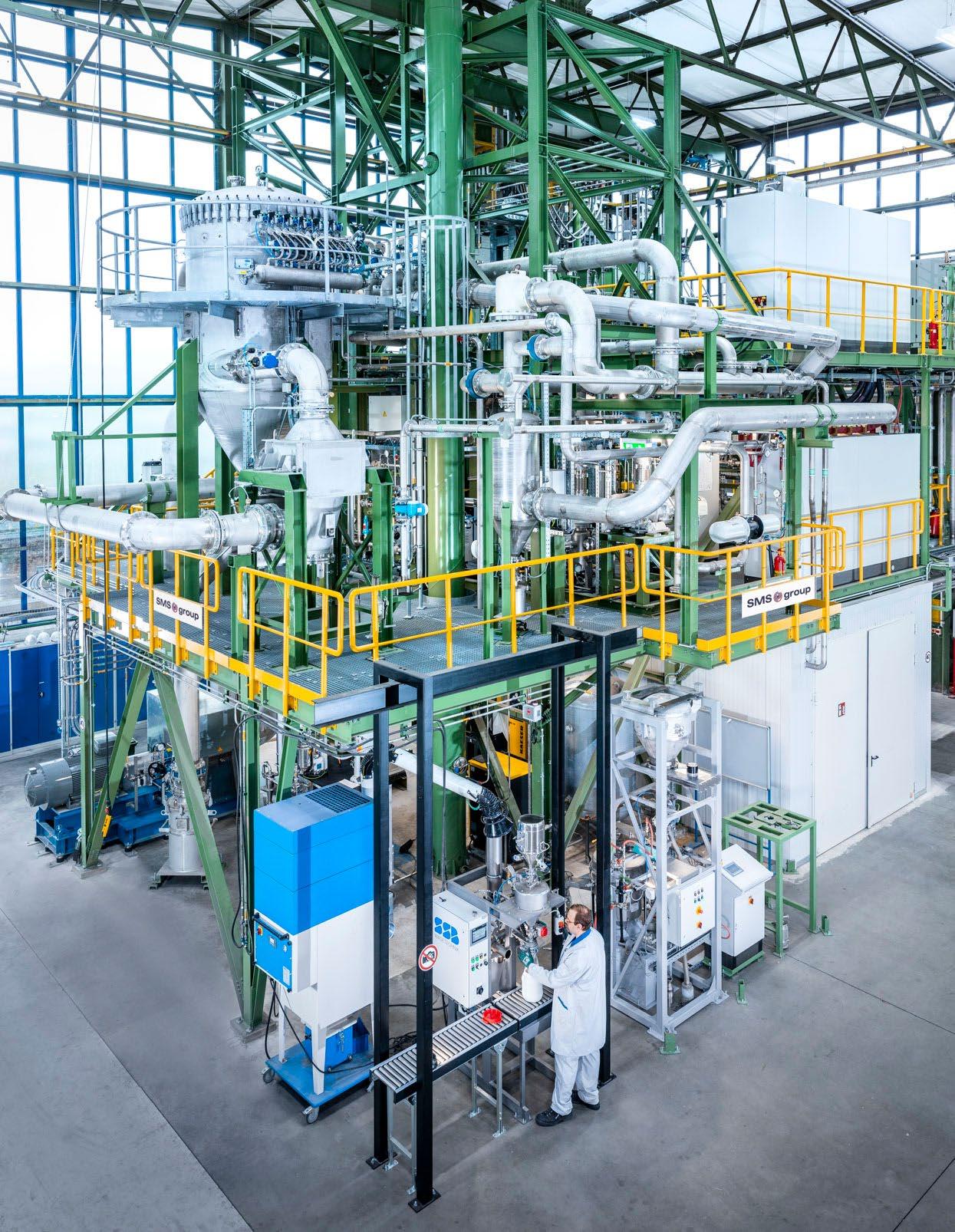
The centrepiece of the metal powder production facility is a VIGA plant (Fig. 4). This represents the conventional powder production process, with batch-type operation. In the VIGA plant, raw material is melted in an induction furnace in a vacuum or an inert gas atmosphere; high-quality scrap or recycled powder is used as the input material. The crucible size varies up to a capacity of 500 kg. By tilting the induction furnace, the superheated melt is poured into the pre-heated tundish. The outlet of the tundish forms a ceramic nozzle with a diameter of approx. 3-6 mm.
Below the nozzle system, the melt stream is disintegrated by a coaxial supersonic argon gas jet; the argon gas can be preheated up to 450°C. The droplets solidify to form tiny
particles that are processed in the cyclone and bag filters.
To prevent solidified droplets from recirculating upward (i.e., back into the atomisation zone and, thus, forming satellite particle defects), an anti-satellite system is installed.
An external argon gas stream is injected sideways into the atomisation zone, creating a vertical gas flow from top to bottom that suppresses the upward flow of fine particles. The raw powder is collected in bins located below the cyclones, sieved, and screened by air classification.

“... experience can be gained from every single manufacturing step along the process chain, allowing powder production and AM processes to be continuously optimised.”
The VIGA plant can process a wide range of different materials such as Fe-, Ni-, Co- or Cu-base alloys. Thanks to its special design and a specially developed atomisation nozzle system, high powder yields in the fine fractions and high process stability are ensured.

Ensuring powder quality
By understanding the different factors that influence powder atomisation, and the effect of powder properties on the Additive Manufacturing process, SMS group is able to produce powder with improved quality and increased output.
The requirements for metal powders in the PBF-LB process are manifold. Besides the chemistry, the key characteristic is the particle-size distribution (PSD). In general, PSD targets are adjusted by sieving and air classification of the raw powder. The typical PSD in the PBF-LB process is 15–45 µm. In general, small particles result in lower flowability, while the maximum particle size determines – to a certain extent – the minimum layer thickness [1]. The powder must flow adequately so that it can be conveyed inside the metal AM machine and applied in thin, homogeneous layers. Powders with poor flowability lead to issues during powder application and to inhomogeneity in the powder layer.
The key aim in the production of powder used for PBF-LB applications is to achieve a particle shape that is as spherical as possible. Particle defects such as satellites must be minimised. SMS group’s VIGA plant incorporates two technologies to minimise the level of particle defects: a specially designed atomisation chamber and an antisatellite system. However, for process-related reasons, adhering sub-particles can be reduced but not entirely avoided. As the sphericity of the powder increases, the flow behaviour and relative powder density are improved, which offers certain process advantages [2].

Usually, the powder is examined in detail to assess the achieved properties. Shown in Fig. 6 are the results of a powder investigation for a batch of 316L steel powder. The powder shows very good morphology with very little closed porosity, free of contamination. The particles have a high sphericity and very few satellites. The flowability is typically 12 s/50 g, with a humidity of under 50 ppm and a bulk density of approx. 4.4 g/cm 3. This powder meets all of the strict requirements for PBF-LB AM.
New atomiser for Outokumpu
SMS group’s first continuous powder production plant is currently under construction for Outokumpu’s stainless steel plant in Krefeld, Germany. It is designed for an annual production of up to 330 tons of metal powder from different alloys, and is the first ever facility to be supplied by SMS group via a subscription contract. This business model means that SMS group remains the owner of the powder atomisation plant, while Outokumpu, as operator of the plant, will pay SMS group the prorata costs for the quantity of powder produced.
Conclusion
In the future, the newly developed continuous powder production plant will allow a more cost-efficient production of AM powders on a large scale of 4,000 tons and contribute to AM becoming increasingly competitive for series production.

With the significantly higher production capacity enabled, the increasing demand for AM powders can be met. This innovative process has been made possible by the SMS group on the basis of its vast experience in the construction of conventional batch gas atomisation plants. SMS group’s experience, gained through its own AM competence centre with its own industrial VIGA plant, benefits the new process. The quality of powders produced by the continuous process combines low oxygen contents, an excellent morphology and very good flow behaviour.
Author Yannik Wilkens Product Manager Additive Manufacturing & Powder Metallurgy 3D-Test Centre

SMS group GmbH
Tel: +49 21613501484
yannik.wilkens@sms-group.com
www.sms-group.com
References
[1] M van Elsen, PhD Thesis, Department of Mechanical Engineering, KU Leuven (B), 2007
[2] J H Tan, W L E Wong, K W Dalgarno, in Additive Manufacturing 2017, 18, 228


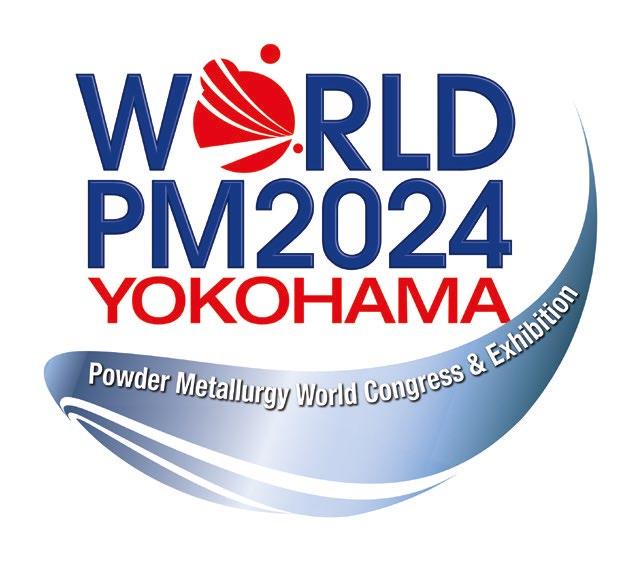
Development of enhanced-performance PM brake pads for high-speed trains by Beijing Tianyishangjia New Material
The new generation of high-speed trains presents a challenge for braking systems manufacturers. The increased speed at which these trains must be able to brake safely has significant implications for the required friction and wear properties of brake pad materials. Leveraging the precise property control made possible by Powder Metallurgy, Beijing Tianyishangjia New Material Corp., Ltd. (TYSJ) has designed and fabricated a series of brake pads suitable for these applications and is a key supplier of these components for ten of China’s high-speed trains. In this article, Dr Hongzhou (Andy) Zhang reports on the R&D behind TYSJ’s high-speed brake pads.
the Science and Technology Innovation Board of the Shanghai Stock Exchange in July 2019. As a leading supplier of Powder Metallurgy brake pads for high-speed electric multiple units (EMUs) in China, TYSJ has obtained the CRCC (China Railway Test & Certification Center Limited) railway product certification, International Union of Railways product certification and International Railway Industry Standard (IRIS) certification for ten products for thirty-two EMUs. The EMU brake pads developed by TYSJ have been applied by eighteen railway bureaus

Whilst maintaining its focus on its primary business of friction and braking materials, TYSJ has also expanded its business in the fields of carbon matrix composites, resin-base carbon fibre composites and precision manufacturing of large aviation structures and has become a leading

enterprise in China’s rail transit friction materials industry. TYSJ’s headquarters are shown in Fig. 1.
Brake pads for high-speed trains
Brake pads are one of the key components in the braking systems of high-speed trains and serve as the last safety guarantee for train

operation. In recent years, China’s high-speed railway network has developed rapidly. In 2022, the country’s high-speed railway tracks exceeded 40,000 km, accounting for more than 60% of the global total. With continuous increases in operating speed and load, the frictional heat and thermal shock borne by brake pads have also increased, meaning that braking materials must perform in severe service conditions

– for example, when a high-speed train with an axle weight of 17 t applies its emergency brakes at 350 km/h, the energy consumption of a single brake disc will be up to 590 J/mm 2, about 2.4 X that of a medium-sized aircraft.
In these conditions, the average temperature of a brake pad can exceed 500°C, and the flash point temperature can reach about 1000°C. The huge pressure, shear force and thermal shock induced by such severe braking conditions are a challenge that must be considered during brake pad design and manufacture. Copper-base friction materials offer a stable and moderate friction coefficient, high wear resistance, excellent comprehensive mechanical properties, high thermal conductivity, good adhesion resistance, good thermal conductivity and cyclic thermal shock resistance. As a result, they are presently the preferred materials for brake pads installed on high-speed trains.
Through intense cooperation with Prof Xuanhui Qu’s research group at the University of Science and Technology Beijing, TYSJ
has mastered a method for the synergistic regulation of friction and braking performance in brake pads. The company has designed a new series of brake pads, suitable for different working conditions, by ascertaining the fade mechanism of the friction coefficient and high-temperature failure behaviour of brake pads. To enable it to bring these parts to EMUs across China, a highly efficient automatic production line and a full-scale dynamometer have been built at TYSJ’s facilities for brake pad production.
Fade mechanism of friction coefficient and high-temperature failure behaviour in Cu-base brake pads
Under high speed and high pressure braking conditions, some problems encountered during a brake pad’s service life are easy to identify, such as the thermal decline of friction coefficient, large fluctuation of friction coefficient, and abnormal, increased wear. The braking behaviour of a friction pair

depends on the properties of the friction film, which are determined by the comprehensive effect of the friction material, the dual material, and the braking conditions. Through continuous emergency braking tests, TYSJ obtained a four-stage evolution law for the friction film and its influence on braking performance (Fig. 2), as follows [1,2]:
At high pressure and braking speed, the friction surface rapidly oxidises to form an iron-rich oxide film, which continuously hardens during repeated braking and produces fatigue cracks (Fig. 2a). Copper softens and flows under high temperatures and high stress and migrates to the friction surface along the microcrack to form a copper-rich phase (Fig. 2b). Its solid lubrication can reduce the friction coefficient. The copper-rich phase and an iron-rich phase are generated alternately to form a layered structure in the initial stage.
With the increased braking times and aggravated softening of copper, the strength of the friction surface decreases, forming an eddy current motion mode

(Fig. 2c), which accelerates the crushing and uniform mixing of the copper-rich phase and the ironrich phase. The friction film rapidly transfers onto the friction surface, resulting in the thermal decline of the friction coefficient.

The tribological failure behaviour of the brake pad, under the combined action of high-temperature oxidation of graphite and matrix softening, was investigated through a constant temperature friction test (Fig. 3). At 400°C, the synergistic action of each component in the brake pad maintained the stability of the friction coefficient. When the temperature was higher than 600°C, the graphite on the friction surface gradually lost its lubricity due to oxidation [3].

In addition, the softening flow of the copper matrix was enhanced, leading to violent transfer of the unstable friction film with low strength from the brake pad surface to the brake disc surface [4]. Both the oxidised graphite and softened copper resulted in a decline of the friction coefficient, increased fluctuation of the friction coefficient, an abnormal increase to wear and even the complete failure of the friction material.
Therefore, the key factors necessary to maintain the dynamic stabilisation of the friction film were found to be as follows:
1. The matrix provides enough strength
2. There are some hard phases in the friction film that strengthen it
3. The external friction components are able to pin the friction film and prevent its rapid migration on the friction surface

4. The thickness of the friction film is moderate
Synergistic regulation of friction and braking performance, and the design of new brake pad materials
Based on the above research, the joint team proposed a new material design idea. The key focus was to promote the generation of a friction film with high strength, toughness, and low transfer rate onto the friction surface by synergistic regulation of the components in the brake pad. Multiple parameters, such as Cr/FeCr, granular graphite/flake graphite/MoS 2, Al 2O 3 fibre/carbon fibre and Cu/Fe, were adjusted to
“TYSJ proposed a new material design idea [...] to promote the generation of a friction film with high strength, toughness, and low transfer rate onto the friction surface by synergistic regulation of the components in the brake pad.”
design a series of new copper-base brake pads suitable for different working conditions [1, 3–14]. The density, porosity, hardness, shear strength and compressive strength
are 5.04 g/cm 3, 17%, 21 HB, 17 MPa and 150 MPa, respectively.

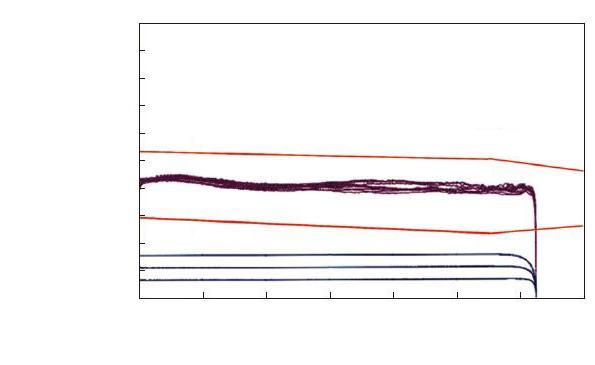
Fig. 4 shows the microstructure of the prepared copper-base brake pad. Components such as gran -



ular graphite, flake graphite, Fe, Cr and CrFe are uniformly distributed in the copper matrix. Ni alloying strengthens the copper matrix and promotes the stability of the friction surface at high braking speeds, thus leading to a stable friction coefficient [5]. Coarse particles – such as CrFe – bear the load and protect the friction film. Cr is used as the oxide source, which continuously provides the strengthening phase for the friction film by forming porous Cr [6]. Granular graphite, flake graphite and MoS 2 are used to control the friction coefficient [1].

Flake graphite, with its good lubricity and large lubricating area, reduces and stabilises the friction coefficient, but it is destroyed easily under severe braking conditions, due to its low strength. Granular graphite has a high strength and acts as a friction component at high speed to increase the friction coefficient. The combination of both flake and granular graphite ensures stability of the friction coefficient at both high and low braking speeds [7]. The value of friction coefficient can be regulated by varying the MoS 2 content.
Given that iron is easier to oxidise than copper and the iron oxide formed by friction sintering has a higher strength, we controlled the coverage ratio and peeling strength of the friction film by regulating the ratio of Cu/Fe, thus achieving a balance between the formation and destruction rates of the friction film [8]. Al 2O 3 fibre is used as a primary plateau to block the movement of abrasive debris, resulting in an increase of the area fraction and size of the secondary plateau [9].
The strength of iron particles and their supporting effect on the friction film are improved by the diffusion of carbon from carbon fibre to iron, and the resulting cementite particles are used as the dispersion phase to strengthen the friction film. The ploughing effect of coarse iron particles on the brake disc surface is
used to control the thickness of the friction film by reducing the transfer rate of the material on the friction surface, thus improving stability of the friction coefficient [10].
The braking performance of the brake pad was also assessed on a full-scale dynamometer (Link 3600, US). The instantaneous friction coefficient ( µ ) under dry conditions and different braking speeds is shown in Fig. 5. The red solid lines are the upper and lower limits of µ i fluctuation specified in TJ/CL307-2019. At 50–250 km/h, µ is stable and distributes within a specified range that remains close to the middle area, as shown in Figs. 5(a) and (b).
It can be seen in Fig. 5(c) that the fluctuation of µ i slightly increases at a braking speed of 300 km/h, compared with a low speed. When braking at 350 km/h, there is an obvious fluctuation of µ i at 300 km/h (Fig. 5(d)), which is caused by the increase in braking pressure. For braking speeds of more than 350 km/h, the braking test adopts a variable braking force – that is, when the instantaneous speed is greater than 300 km/h, the force is equal to F B1, whereas for speeds from 300 km/h to 0 km/h, the force is equal to F B2 ( F B2 > F B1). A higher braking force ( F B2) leads to a decrease of µ i. As the instantaneous speed drops below 120 km/h, µ i is slightly concave (as shown by the first arrow in Fig. 5(e)), which is
caused by the increased temperature and aggravated damage to the friction surface.
Fig. 6 shows the mean friction coefficient ( µ m) under various working conditions. The red dotted lines are the upper and lower limits of µ m as specified in B.3 of TJ/CL3072019. Under dry conditions, µ m is distributed in the range of 0.35–0.45 under each braking condition, as shown in Fig. 6(a). At lower braking speeds (50 km/h and 80 km/h), the value of µ m exceeds 0.4, owing to the large friction resistance caused by initial asperities. Within the braking speed range of 120–250 km/h, the arithmetic mean value of µ m at each braking speed is about 0.4, which indicates that the brake pad has high friction stability under those braking conditions.
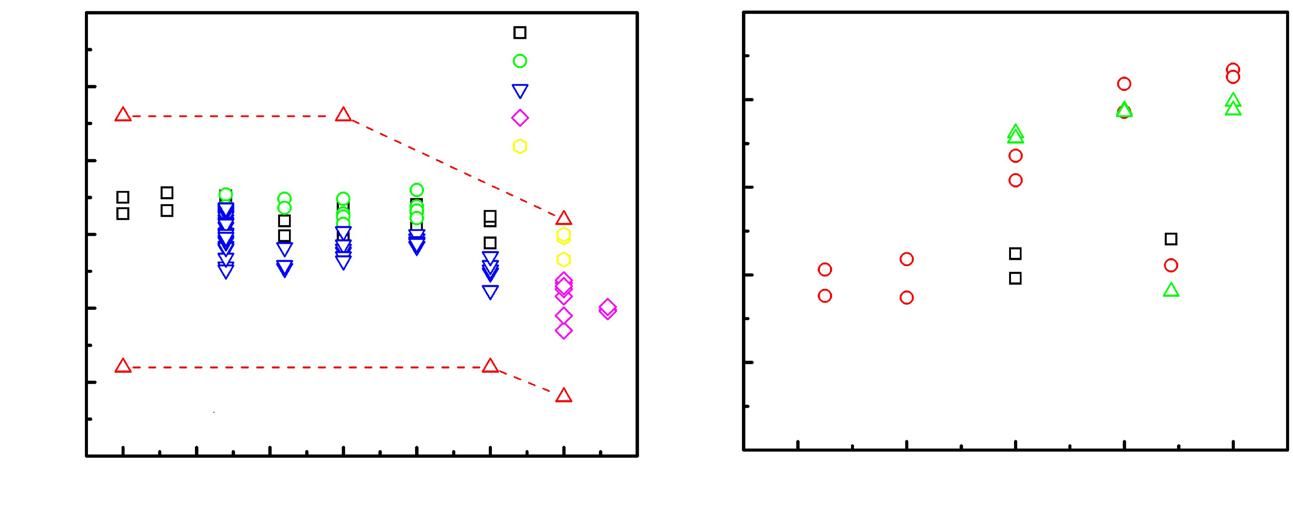
In the braking speed range of 250–350 km/h, the high braking speed and braking pressure lead to a decrease in µ m, which is consistent with the downward trend of the upper and lower limits. When the braking speed is 380 km/h, the brake pad still maintains a high arithmetic µ m of about 0.35. This increase in the value of µ m results in a reduced braking pressure, improving the service life of the brake clamp. It also reduces thermal fatigue of the brake disc and shortening braking distance. At a given braking speed, µ m decreases with an increase in

the braking pressure, owing to the smoother friction surface under higher pressure.
Fig. 6(b) shows that, under wet conditions, µ m is higher than 0.25 at all braking speeds. For the lower range of braking speeds, an increase in braking speed can drive the water film to completely cover the friction surface fully, so that µ m remains basically unchanged as the braking speed is increased (50–120 km/h). As the braking speed exceeds 120 km/h, the increased centrifugal force leads to a decrease in water volume on the contact interface, in turn causing µ m to increase due to a lack of water lubrication. In addition, with an increase of braking speed, µ m under high braking pressure gradually drops below the low braking pressure limit, approaching the relationship between pressure and µ m under dry conditions. This also shows that the effect of water on the friction contact interface decreases at higher braking speed.
Fig. 7 shows the backscatter electron (BSE) microstructure of a cross section of the friction surface. There is a friction film on the friction surface that protrudes significantly towards the substrate, as shown in Fig. 7(a). Beneath the friction film, there are many hard particles, including CrFe, Fe and SiO 2, marked by red arrows, which maintain the original morphology or break under high pressure. These hard particles play the role of bearing and protecting the friction film. Moreover, they act as primary plateaus to hinder the movement of abrasive debris and increase the area fraction and size of the secondary plateaus.

The existence of hard particles beneath the friction film can also reduce the thickness of the friction film, which indicates that hard particles can be used to control the thickness of the friction film (Fig. 7(b)). In addition, the ploughing effect of coarse hard
particles is used to control the thickness of the friction film on the brake disc.
The stability of the friction coefficient can be improved by reducing the substance transfer rate between the contact interfaces. Many pores can be seen inside the Cr particles, marked by green arrows. Cr is used as an oxide source, which continuously provides the strengthening phase for the friction film by forming porous Cr. The effects of granular graphite and flake graphite on the braking properties are different. As can be seen from Fig. 7(c), the flake graphite near the friction surface has become seriously damaged and has peeled off.
At lower speeds, flake graphite acts as a lubricating component to stabilise and reduce the friction coefficient. The granular graphite has high strength, and although the granular graphite near the friction surface also has deformation characteristics under the braking
pressure, it is still well pinned to the friction surface without surface cracks or peeling, as shown in Fig. 7(d). In addition, wear debris can collect at the edge of granular graphite (as shown by the arrows in Fig. 7), indicating that it provides the function of a friction component at high speed and plays a role in increasing friction resistance. Therefore, the combination of flake graphite and granular graphite ensures stability of the friction coefficient at high and low speeds, hence improving the wear resistance of the brake pad.
TEM analysis was further carried out to reveal the structural characteristics of the friction film, as shown in Fig. 8. The friction film contained many nano-sized particles (Fig. 8(a)) with a particle size of around 20–90 nm. In the high-resolution TEM image in Fig. 8(b), CuO (~20 nm) and Fe 2O 3 oxide particles (30–50 nm) were observed. Nano-oxide is the most effective strengthening phase
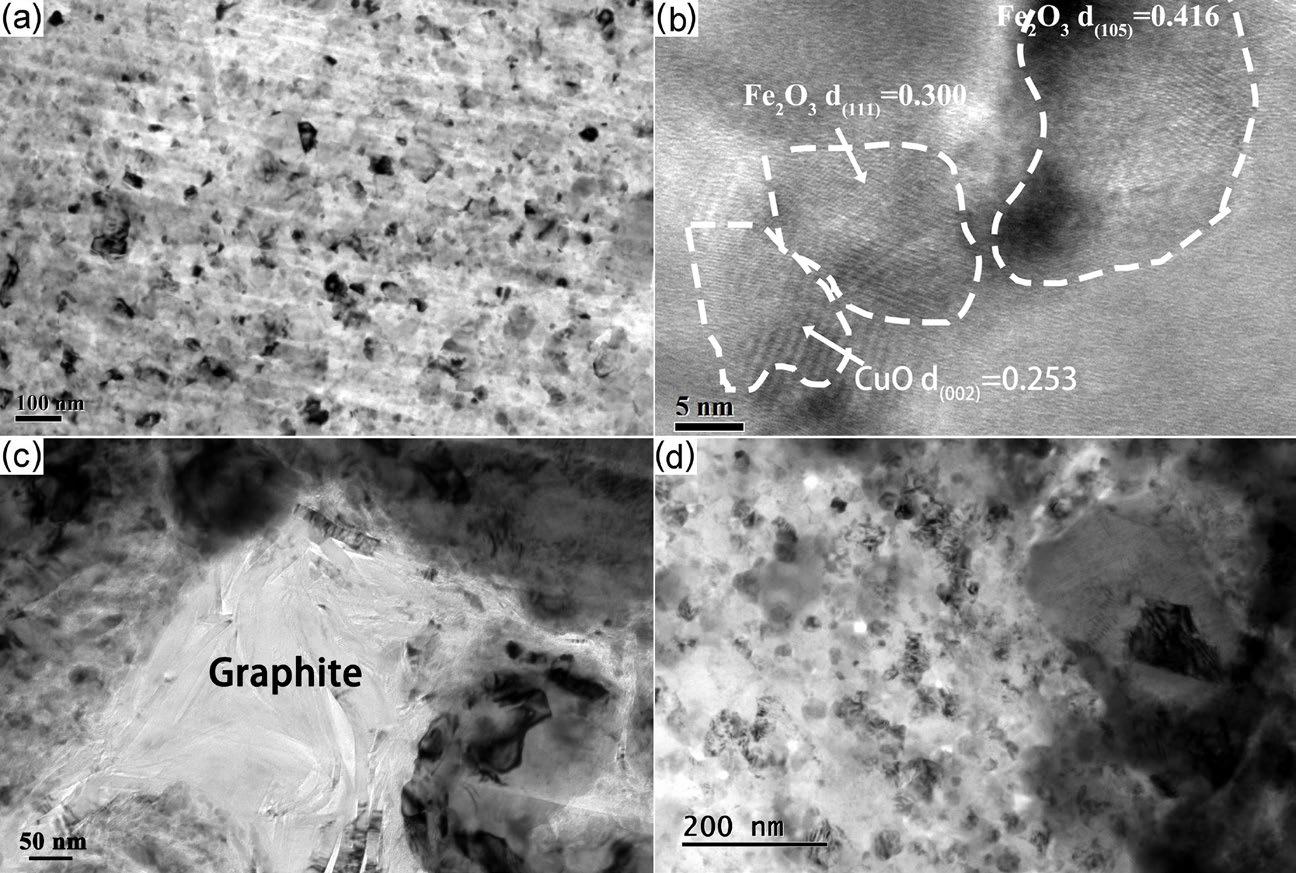
to improve the strength of the fric -
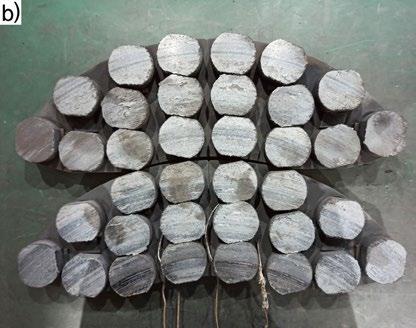


Fig. 8(c) shows that graphite is one of the important components of the friction film. It comes from the broken graphite component and still has a lubricating effect in the friction film. In addition to oxide particles smaller than 100 nm, there are also hard particles with particle sizes of hundreds of nanometres, which coexist with smaller oxide particles
in the friction film, as shown in Fig. 8(d).
Fig. 9 shows the morphology of the worn surface of the brake pad after testing it on a full-scale dynamometer. The surface of the friction block is covered by a grey friction film. There are shallow scratches on the surface of the friction block. No defects such as burn marks, bulges, deformation, friction material melting, metal inlay, edge
dropping or corner dropping are observed on the friction surface.
Fig. 10 shows the morphology of the worn surface of the brake disc before and after the test. Before the braking test, the surface of the brake pad is smooth, as shown in Fig. 10(a).
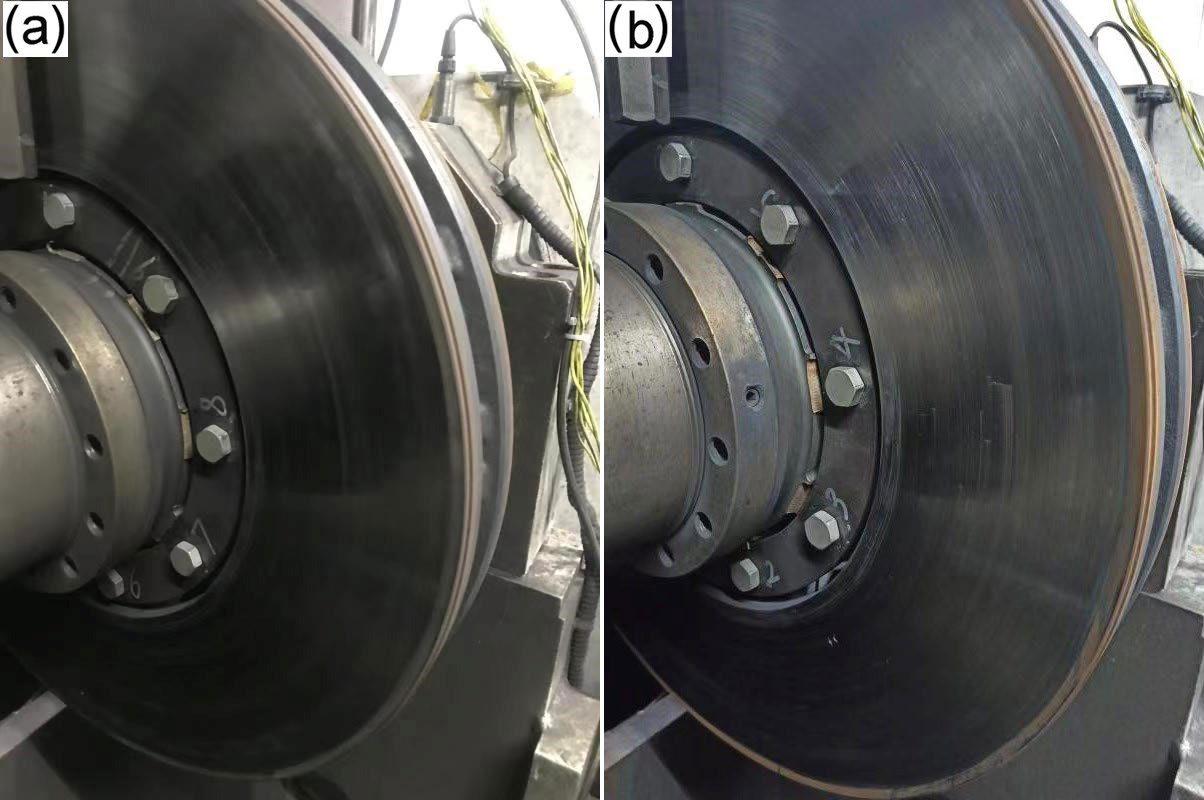
After the braking test (Fig. 10(b)), the surface of the brake disc remains smooth and clean without abnormal damage, indicating that the brake pad can effectively
protect and prolong the lifespan of the brake disc.
Applications for high-speed Cu-base brake pads
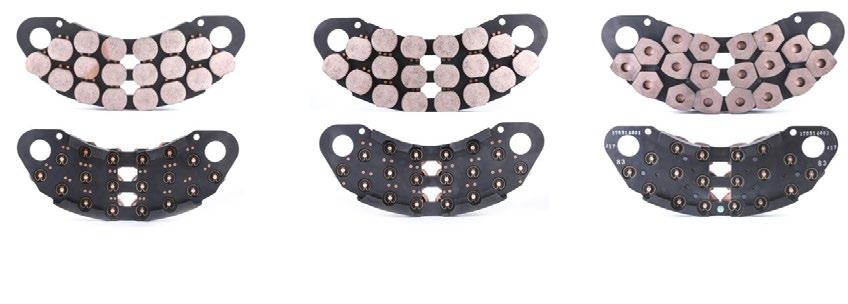
TYSJ has designed and fabricated a series of copper-base brake pads suitable for high-speed trains with different operation speeds and obtained the railway product certification of the CRCC for brake pads

of ‘350 km/h China Standard EMUs.’ Through an optimised chip removal design and the incorporation of a heat dissipation channel to discharge the mixture of ice, snow and abrasive debris smoothly, the developed large-gap brake pad successfully solves the problem of metal inlay and abnormal wear, so that China’s high-speed trains no longer need to slow down in winter conditions.
The developed brake pads ensure safe and reliable operation in cold environments of - 40°C, allowing the first operation of Fuxing bullet trains in the easternmost lowtemperature region of China without deceleration in winter conditions. They were also used for the intelligent Fuxing bullet trains running on the Beijing–Zhangjiakou high-speed railway tailored especially for the Beijing Winter Olympics. They were also applied in China’s newly developed heavy-load high-speed train, providing key material guarantees for independent development of the world’s first 350 km/h high-speed freight EMU. In addition, the project has developed brake pads suitable for the new generation CR450 China standard EMUs, with an operating speed of 400 km/h.
Construction of a fullscale dynamometer and the automatic production line
In constructing its full-scale dynamometer and automatic production line, TYSJ introduced the Link 3600 full-scale dynamometer (480 km/h) from the United States and the Renk full-scale dynamometer (620 km/h) from Germany, as shown in Figs. 12 and 13. CMA and CNAS certification have also been completed.
TYSJ has now designed a special automatic batching, pressing and sintering system for Powder Metallurgy brake pads; developed a series of special automation equipment; created an online inspection and monitoring system to assure the size and appearance of brake pads based
on machine vision; and developed a software and hardware system for dynamic grasping and sorting using industrial robots. In combining these tools, the company has established
a fully automatic production line for copper-base Powder Metallurgy brake pads (Fig. 14). This allows for high-quality stability control across the whole


process, including sintering and testing, and thus avoids inconsistencies in product performance and quality that can be caused by human error.

Future expectations
Brake pad design should comprehensively consider the mechanical properties, friction and wear properties, heat resistance and impact resistance of the desired materials, and match performance with the
brake disc. These properties have mutual constraints and are difficult to coordinate and control. With the increase of operation speed and load of trains, braking materials will need to fulfil new and higher requirements, such as noise reduction during braking, lightweight design
and environmental adaptability, in addition to demands placed on friction and wear performance. Powder Metallurgy technology can be used to achieve precise control of material properties through multi-component composites, and reliable test data can be generated using a full-scale dynamometer. By establishing a performance database of braking materials and products used at different speed levels and under different working conditions, we can promote the upgrading of brake pad products and ongoing use of PM technology to produce them. The relevant

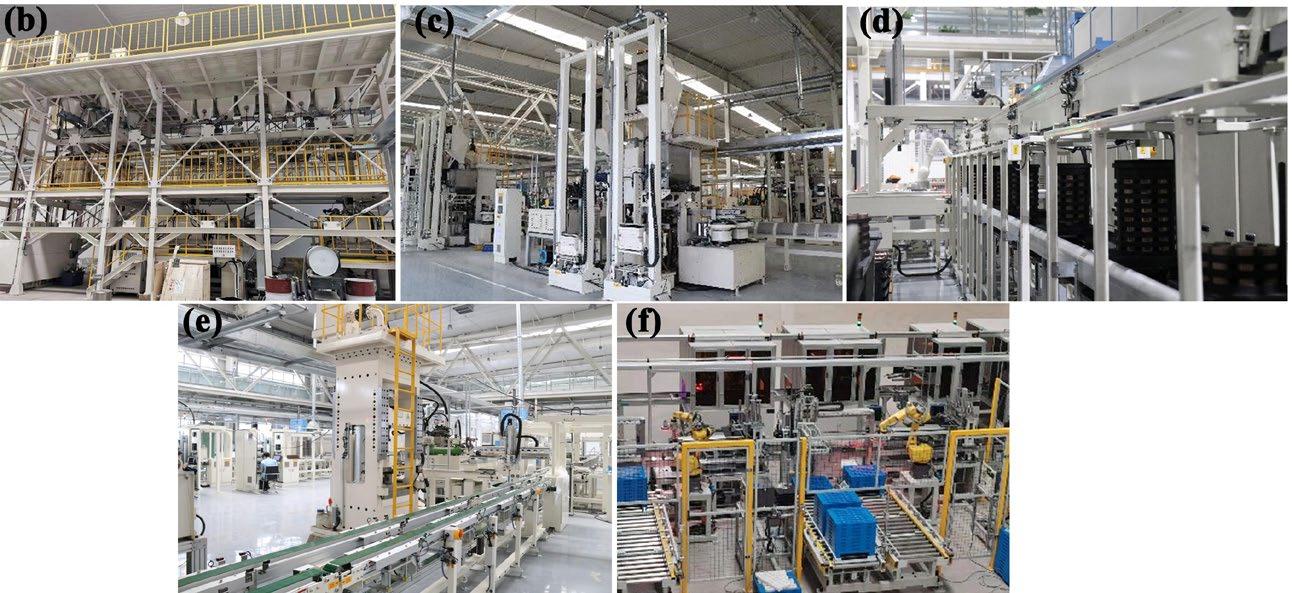
“PowderMetallurgy technology can be used to achieve precise control of material properties through multi-component composites.” (a) (b) (e) (f) (c) (d) Intelligent deliver system Post-treatment Delivery Batching Material Intelligent assembly line AGV Material conveying system Product intelligent storage system Raw material intelligent storage system (Batching and mixing) Brake pads for high-speed trains
nical support to the development and application of better PM friction materials for other braking systems, outside of high-speed rail applications.
Contact Peifang Wu, Chairman Beijing Tianyishangjia New Material Corp., Ltd.
No. 4318, Yard 7, Yingbin South Street, Doudian Town, Fangshan District Beijing, China
Tel: +86 010-8240775 wupeifang@bjtysj.com www.bjtysj.com
Authors
Dr Hongzhou (Andy) Zhang, Pacific Steel Limited, New Zealand hongzhou1229@gmail.com
Prof Gang Chen University of Science and Technology Beijing, China gche098@ustb.edu.cn
References
[1] Zhang P, Zhang L, Wei D B, et al. Adjusting function of MoS2 on the high-speed emergency braking properties of copper-based brake pad and the analysis of relevant tribo-film of eddy structure.
Composites Part B-Engineer, 2020, 185: 107779
[2] Zhang P, Zhang L, Fu K X, et al. Fade behaviour of copper-based brake pad during cyclic emergency braking at high speed and overload condition. Wear, 2019, 428–429: 10–23
[3] Zhang P, Zhang L, Wei D B, et al. A high-performance copper-based brake pad for high-speed trains and its surface substance evolution and wear mechanism at high temperature. Wear, 2020, 444–445: 203182
[4] Zhang P, Zhang L, Wei D B, et al. Substance evolution and wear mechanism on friction contact area of brake disc for high-speed trains at high temperature. Engineering Failure Analysis, 2020, 101: 104472
[5] Zhang P, Zhang L, Wei D B, et al. Effect of matrix alloying on braking performance of copper-based brake pad under continuous emergency braking. Journal of Tribology, 2020, 142(8): 081703
[6] Zhang P, Zhang L, Wei D B, et al. The synergistic effect of Cr and CrFe particles on the braking behavior of Cu-based powder metallurgy brake pads. Tribology Transactions, 2019, 62(6): 1072–1085
[7] Zhang P, Zhang L, Wei D B, et al. Effect of graphite type on the contact plateaus and friction properties of copper-based friction material for high-speed train. Wear, 2019, 432–433: 202927
[8] Zhang P, Zhang L, Fu K X, et al. Effects of different forms of Fe powder additives on the simulated braking performance of Cu-based friction materials for high-speed trains. Wear, 2018, 414–415: 317–326
Brake pads for high-speed trains
[9] Zhang P, Zhang L, Fu K X, et al. The effect of Al2O3 fiber additive on braking performance of copper-based brake pads utilized in high-speed train. Tribology Interna¬tional, 2019, 135: 444–456
[10] Zhang P, Zhang L, Wu P F, et al. Effect of carbon fiber on the braking performance of copperbased brake pad under continuous high-energy braking conditions. Wear, 2020, 458–459: 203408
[11] Zhang P, Zhang L, Ren S B, et al. Effect of matrix alloying of Fe on friction and wear properties of Cu-based brake pad materials. Tribology Transactions, 2019, 62(4): 701–710
[12] Zhang L, Fu K X, Zhang P, et al. Improved braking performance of Cu-based brake pads by utilizing Cu-coated SiO 2 powder. Tribology Transactions, 2020, 63(5): 829–840
[13] Zhang P, Zhang L, Fu K X, et al. Effects of Ni-coated graphite flake on braking behavior of Cu-based brake pads applied in high-speed trains. Journal of Tribology, 2019, 141, 8: 081301
[14] Zhang P, Zhang L, Wu P F, et al. The multi-scale strengthened friction film enabling the stable braking performance of copperbased brake pad in high-speed emergency braking. Tribology transactions, 2020. https://doi.org/ 10.1080/10402004.2023.2177217

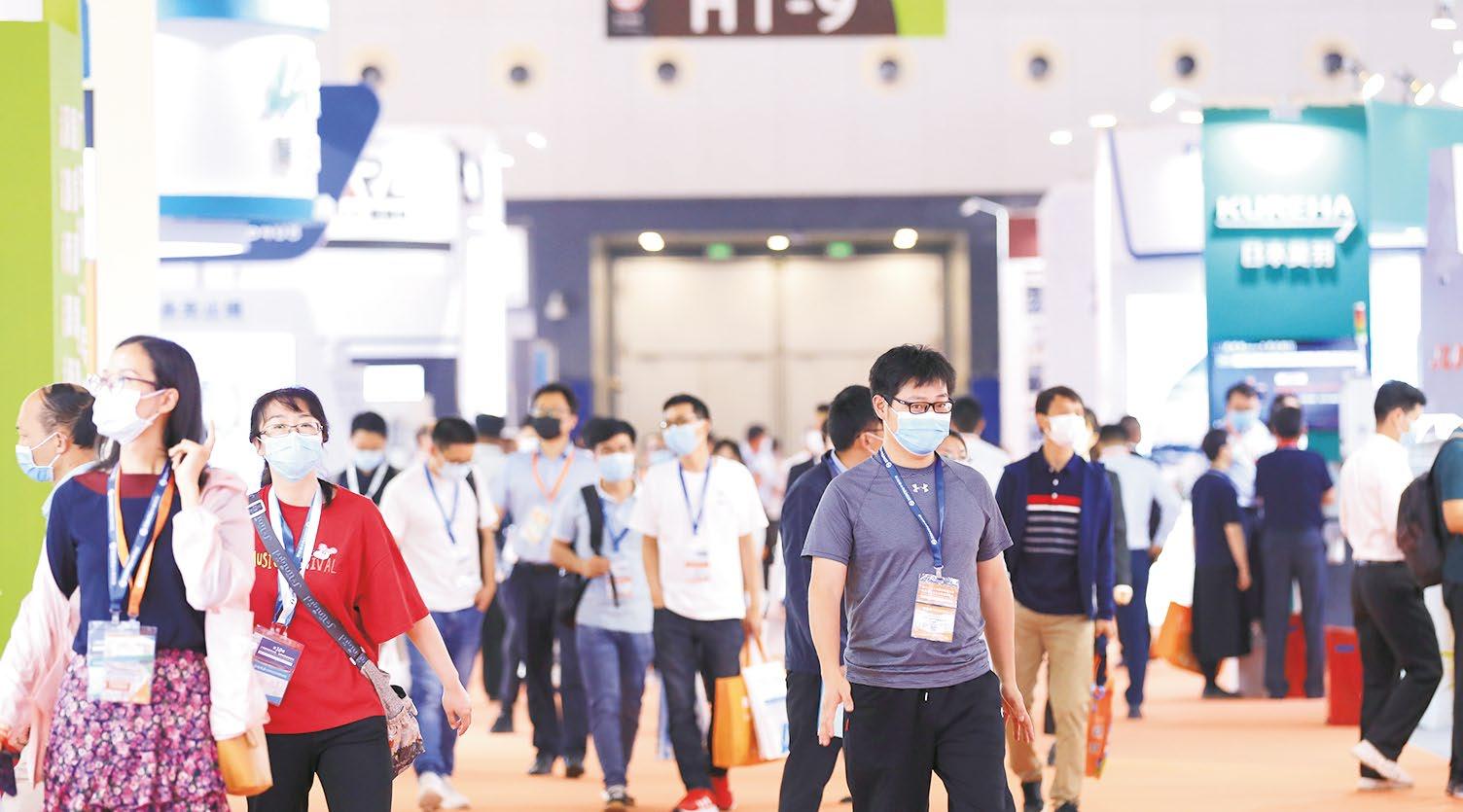
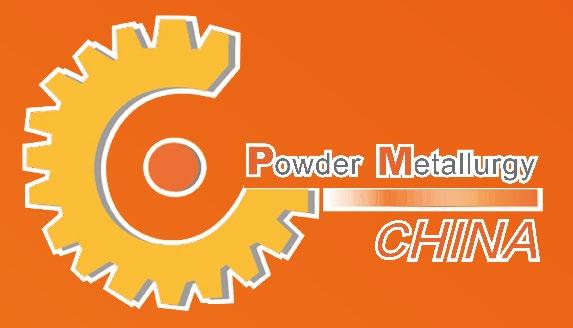
The START project: Creating a sustainable supply chain for green energy harvesting products by Powder Metallurgy
Sustainable Energy Harvesting Systems Based on Innovative Mine Waste Recycling (START) is an Innovation Action project co-funded by the EU and its Horizon Europe programme. Using an advanced powder production and consolidation process, the project’s aim is to create a sustainable supply chain for green energy harvesting products by transforming sulphide materials from mining waste into sustainable high-added-value Powder Metallurgy components for tellurium-free thermoelectric (TE) devices. Here, the consortium members offer a comprehensive summary of START’s background, the innovative workflow developed, and its potential impact.
Launched in June 2022, the START project is formed of a consortium of fifteen institutions from eleven European countries, coordinated by LNEG - the National Laboratory of Energy and Geology of Portugal. Six research organisations with backgrounds in geology, materials science and renewable energies are represented on the consortium, as well as seven SMEs covering the entire supply chain, from production to exploitation and ecological footprint assessment, and two non-profit international associations representing a consolidated network of partners and stakeholders. START will have a duration of four years and a budget of around €9.2 million.
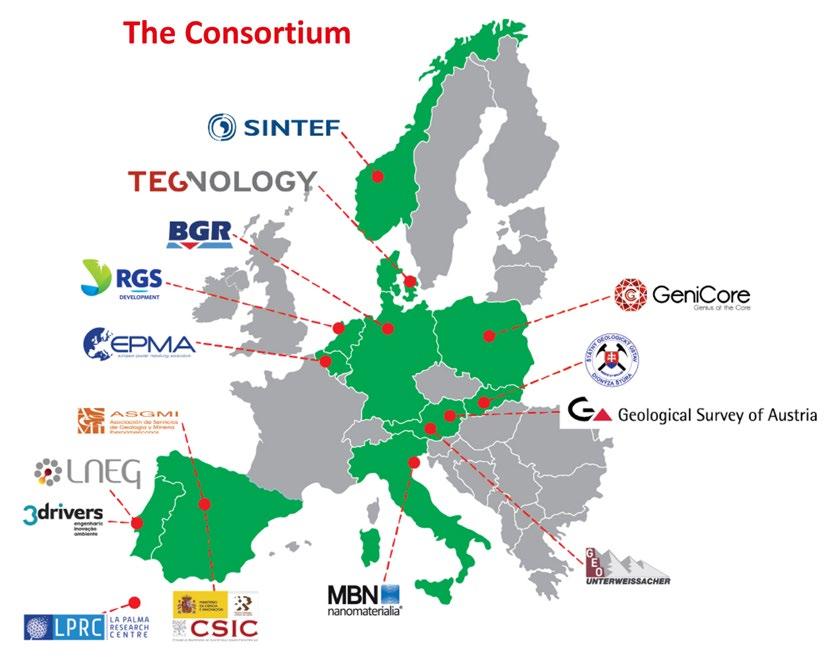
Fig. 1 identifies the consortium partners and participating nations.
Motivation and objective
Climate change is one of humankind’s greatest challenges, and fighting it depends on the rapid implementation of green technol -
ogies and business practices, known as the green transition, to which the European Union (EU) is fully committed through the European Green Deal [1]. However, this green transition is based on a shift from a fossil fuel-inten -
sive to a material-intensive energy system, increasing the need for mineral resources. The growing demand for essential minerals and declining quality of ores is substantial increasing waste volumes from mining operations.

Sulphide minerals: tetrahedrite series treated for TE supply chain (WP2)
DFT modelling, powder technology and rapid solidification (WP3)
characterisation (WP4)
RECOVERY AND REUSE OF MINE WASTE
Additionally, current commercial thermoelectric (TE) generators (used to harvest waste heat from, for example, industrial processes and convert it into electric power) rely mostly on tellurium-based thermoelements [2]. Tellurium is a relatively scarce element, with a terrestrial abundance of Ca. 1 ppb. As China accounts for over 60% of its production, Europe is heavily dependent on imports [3].
The START project proposes a unique technological solution to this problem, based on a ‘waste material-waste heat to power’ methodology for the development of sustainable and economically viable tellurium-free TE waste heat harvesting systems (Fig. 2). This is
achieved by producing advanced sulphide p-type thermoelements that incorporate discarded sulphide minerals in mining waste, mainly of the tetrahedrite-tennantite mineral series (Cu 6[Cu 4(TM) 2](Sb, As) 4S 13, where TM is a transition metal) to replace the current commercial tellurium-based p-type thermoelements. The tetrahedrite-tennantite mineral series is relatively abundant in some Cu mine tailings and, at present, is an environmental hazard.
START’s development of green energy harvesting devices through the incorporation of mineralderived p-type thermoelements serves both economic and remediation purposes by reducing
mining’s environmental footprint, as mining residues are converted into useful and valuable resources. This strategy is in line with the priorities set out by the European Green Deal and the EU Action Plans on Critical Raw Materials and Circular Economy [1, 4, 5].
Potential impact of the START project
Around two-thirds of the primary energy produced worldwide is lost as waste heat [6]. Using TE energy harvesting systems to capture and directly convert this waste heat into electric power has the potential to improve overall energy production efficiency and, in conserving more of the energy produced, thus preventing tens of millions of tons of CO 2 emissions.
The impact of the START project’s approach towards a more sustainable and resilient EU is defined as:
1. The reduction of EU dependence on primary critical raw materials
2. The promotion of circular economy processes
3. The production of TE energy harvesting systems focused

“... using TE energy harvesting systems to capture and directly convert this waste heat into electric power has the potential to improve overall energy production efficiency and [...] avoid tens of millions of tons of CO2 emissions.”
Innovative
START project proposes disruptive technologies for direct use of minerals in thermoelectric renewable energy ecosystems , based on a ‘waste materialwaste heat to power’
By
Boost
Recycling
START will enable the transition to a greener society and economy through eco-innovation, more sustainable economic models and by promoting energy security.
START will create a new rapid growth commercial ecosystem that will attract new stakeholders exploiting market opportunities for replication and market development.
on increasing the overall efficiency of energy production and consumption systems, thereby reducing greenhouse gas emissions
The main outcomes of the project are outlined in Fig 3.
Powder Metallurgy in START
Powder Metallurgy is one of the processing technologies being used to produce the mineral-derived p-type thermoelements upon which the START project’s success depends. The approach followed in the START project includes three main process steps, summarised in Fig. 4.
Production of nanostructured powders by Mechanochemical Synthesis
Mechanochemical Synthesis (MCS), comprising the first process step in the START approach, is a solid-state synthesis route which uses highenergy ball mills and is already in use for large-scale nanostructured powder production by MBN [7]. The process is a suitable and fast way to produce sulphide semiconductor powders from minerals and pure elements [8, 9].
During MCS, chemical reactivity is promoted under non-equilibrium conditions, near room temperature, by unbalanced mechanical forces that transfer the mechanical energy to the powder particles. This introduces strain into the powder by generating dislocations and other defects that act as fast diffusion paths, changing the reactivity of the powders [9].
Mechanical deformation also occurs on a local basis, being mediated by dislocations and other lattice defects. As a result, the mass-transport process will be reduced relative to that of high-temperature solidstate diffusion, having a great impact on the chemical and physical behaviour of the compounds. There are several variables which influence the MCS process (e.g. type of mill, milling media, ball-to-powder ratio, filling extent of the milling chamber, milling atmosphere, milling speed, milling time, etc.) [9].
Powder consolidation by Pulse Plasma Compaction
Pulse Plasma Compaction (PPC), a method developed by GeniCore, is used to consolidate the TE materials. This technology is a modification of the conventional spark plasma sintering (SPS) process [10]. In PPC,
energy stored in a capacitor bank and charged to several kV (in the SPS process, it is typically several volts), is delivered to the powder in profoundly shorter pulses than are used in SPS technology (dozens of µ s instead of a few ms) with a frequency up to 200 Hz.
Oscillating capacitor discharge is used to produce current pulses with a first half-wave amplitude of several tens of kA. The high voltage short pulses result in peak power values up to 80 MW, and field-enhanced diffusivity enables full densification at lower temperature setpoints than in conventional SPS, where lowvoltage electric fields are employed [11].
SPS-based technologies have proven to be a viable consolidation technique to enable sulphide-based powders to achieve full-density compaction at temperatures considerably lower than their melting points, preserving the nanostructures developed by the MCS process [12]. Other advantages of SPS include a fast heating rate, short cycle time, accurate control of sintering energy, high reproducibility, safety and reliability.
The use of the innovative PPC device in the START approach, as

methodology.
converting discarded waste secondary sulphide materials largely available in Europe into useful and valuable mineral resources
will contribute to the security of supply of raw materials and will help to improve the sustainability of materials in the EU economy.
value chain New market opportunity for European mineral resources
EU competitiveness on raw materialsRenewable energy ecosystems New commercial ecosystems
Mechanochemical synthesis is a solidstate synthesis route using high-energy ball mills.
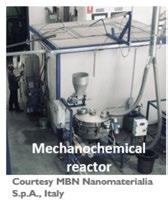
Lab-scale production is carried out by LNEG , while large-scale production is carried out by MBN Nanomaterialia
Pilot production line is initially established, then scaled to meet the market requirement of TE at lower costs.
Step 2 : Consolidation by pulse plasma compaction (PPC) to produce the thermoelements
Consolidation of the TE materials by pulse plasma compaction {PPC), a method developed by GeniCore Sintering efficiency results from hot pressing, in which the powder is heated up using short high current impulses.

Design and manufacture of TE devices incorporating the mineral-derived tetrahedrite p-type thermoelements.
well as the upgraded field-assisted sintering technology (U-FAST) developed by GeniCore, is expected to enable TE materials to be produced with more appropriate densities and improved material stability, preventing thermally induced solidstate reactions in the material during service, which will enhance overall TE performance.
The production of square samples instead of traditional cylindrical compacts will also be assessed. From a technological point of view, this could represent a cost-effective solution and a huge step forward in
the consolidation of parallelepiped thermoelements required for device assembly for large-scale applications.

Mineral-derived tetrahedrite powders produced by MCS
Sulphur-based compounds are a vast class of materials, some of which are semiconductor materials with exceptional properties for energy conversion applications, either as thermoelectric materials or as photovoltaic materials [8, 12–14]. Among
these, the tetrahedrite-tennantite series offers the great advantage of being naturally occurring.
Unfortunately, the poor thermoelectric properties and low thermal stability of natural tetrahedritetennantite – caused by the presence of other phases (i.e., famatinite) and other minerals (e.g., pyrite, chalcopyrite, and quartz) – restrict its use for commercial exploitation. The refinement of pure tetrahedrite-tennantite by conventional mining processes is not economically viable, but its direct use as a raw material in the production of modified tetrahedritetennantite by Powder Metallurgy is a promising route.
Tetrahedrite-tennantite powders can be produced from the elements by a relatively low-effort solid-state processing route, but a more costefficient approach is to start from minerals with known composition and balance them with elemental powders. Using this approach, minerals from different sites, and hence with different compositions and structures, can be processed with a dedicated material balance, targeting the same thermoelectric performance.
“The refinement of pure tetrahedritetennantite by conventional mining processes is not economically viable, but its direct use as a raw material in the production of modified tetrahedrite-tennantite by PM is a promising route.”Step 3 : Assembly and production of the TE device
Step 1:
Production of nanostructured powders from minerals and pure elements by mechanochemical synthesisFig. 4 The START process workflow. The main partners involved in these activities are nanostructured powder specialist MBN Nanomaterialia, for Step 1; material engineering company GeniCore, Step 2; and TEGnology, a leading company in TE energy harvesting, Step 3.
At the laboratory level, the effectiveness of processing natural and synthetic tetrahedrites has already been demonstrated in the range of grams [8]. It is now scaled by a factor of 100, approaching a relevant pilot-scale production.
Processing routes
With the support of the Lundin Mining Company, tetrahedritetennantite mineral from the Neves-Corvo mine (in the Portuguese sector of the Iberian Pyrite Belt) has been used. This material has been processed with purity levels of 20%, 50%, and 80% synthetic tetrahedrite (Fig. 5), via two different processing routes.
Both routes use industrial MCS apparatus, in plants designed by MBN Nanomaterialia Spa [6], which favours a direct transfer of impact energy to the processed material. The process is carried out in an argon atmosphere, with the milling chamber being cooled to operate near ambient temperature.
The first route is more conservative; the synthetic tetrahedrite is formed in a different MCS process and then added to the natural mineral for the final mixing. The second route consists of direct MCS of the natural mineral using the same composition of elemental

copper, antimony, and sulphur powders as was used in the first route, for consistent benchmarking. This second route is more challenging but provides more flexibility, allowing a focus on alloying new elements into the tetrahedrite-tennantite rather than dispersing synthetic tetrahedrite into the naturally occurring one. The backscattered electron images in Fig. 6 show material obtained by both routes. The images do not reveal substantial differences between the results, even at higher magnification, regarding the distribution of pyrite (dark grey) and quartz (darker spots) distribution.
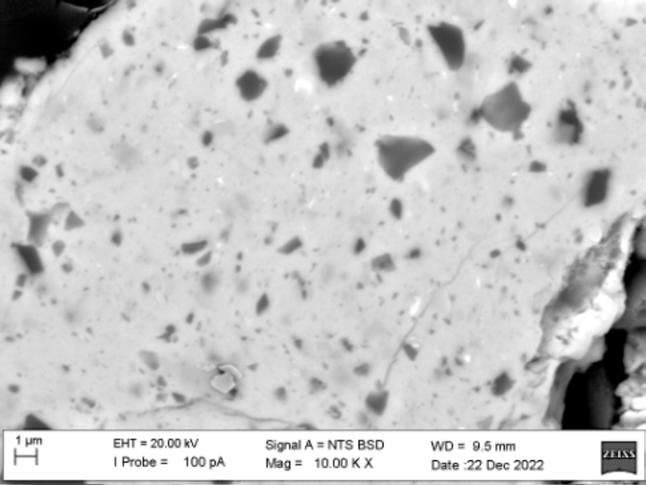


Typical X-ray diffraction (XRD) patterns for some of the processed materials are shown in Fig. 7, top. These XRD patterns confirm that the two routes are consistent with each other; a small difference appears in the famatinite peak, which is promoted when processed directly from powders mixtures containing elemental powders.
This is a positive result, since it confirms that the two routes are equally effective, and it opens the way for the direct processing via MCS of natural tetrahedritetennantite material with metals and sulphur powders to produce thermoelectric materials.
The formation of famatinite, an unwanted phase, is due to the lack of stabilising elements such as Fe and Zn as substitutes for Cu in the synthetic tetrahedrite utilised in the experiment. The synthesis of doped tetrahedrite reduces the formation of famatinite when higher MCS energy levels are used (Fig. 7, bottom). This synthesis has been carried out in industrial plants to validate the feasibility of the approach. The next developmental steps are related to the identification of the most effective combination of substitutional elements that will be used as a reference target in the processing of minerals with metals and sulphur powder.

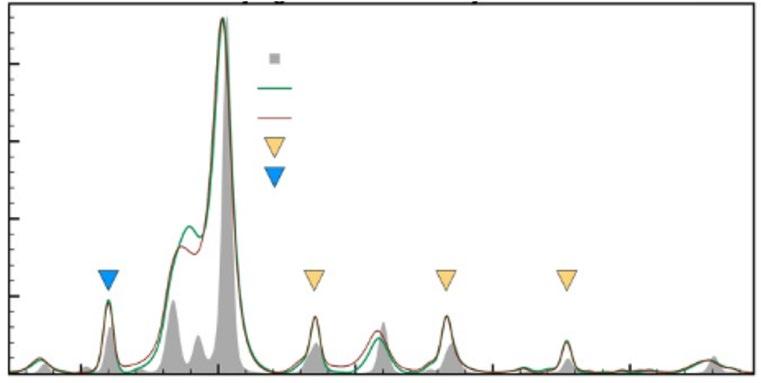
synthetic
Alvise Bianchin, MBN Nanomaterialia Marcin Rosiński, GeniCore Hao Yin, TEGnologycontact@start-heproject.com
Additional information
In the near future, START will organise several free webinars to provide more details on the project and offer updates on its activities. To stay informed, subscribe to the START mailing list.
www.start-heproject.com
www.twitter.com/START_HEproject
www.linkedin.com/ company/86266991
Funding and acknowledgements
This approach will enable the enhancement of naturally occurring tetrahedrite-tennantite to make it an effective thermoelectric material and has the potential to be transferred to other combinations of minerals and metals for the synthesis of functional materials.
Authors and contact
Filipe Neves, LNEG Coordinator filipe.neves@lneg.pt Bruno Vicenzi, EPMA Dissemination Manager bv@epma.comThe START project (project number: 101058632) is co-funded by the European Union. Views and opinions expressed in this report are those of the author(s) only and do not necessarily reflect those of the European Union or the European Health and Digital Executive Agency. Neither the European Union nor the granting authority can be held responsible for any discrepancies.
References
[1] A European Green Deal ( https:// commission.europa.eu/strategyand-policy/priorities-2019-2024/ european-green-deal_en , accessed on January 2023) | European Commission (europa.eu)
[2] D Zabeka, F Morini, Solid state generators and energy harvesters for waste heat recovery and thermal energy harvesting, Thermal Science and Engineering
Progress 9 (2019) 235–247, ( https:// doi.org/10.1016/j.tsep.2018.11.011 )
[3] U.S. Geological Survey, 2020, Mineral commodity summaries 2020: U.S. Geological Survey, 200 p., ( https://doi.org/10.3133/Mcs2020 )
[4] Critical Raw Materials Resilience: Charting a Path towards greater Security and Sustainability ( https:// ec.europa.eu/commission/presscorner/detail/en/ip_20_1542 )
[5] A new Circular Economy Action ( https://eur-lex. europa.eu/legal-content/EN/ TXT/?uri=COM:2020:98:FIN )
[6] Fitriani et al, A review on nanostructures of high-temperature thermoelectric materials for waste heat recovery, Renewable and Sustainable Energy Reviews 64 (2016) 635–659 ( http://dx.doi.org/10.1016/j. rser.2016.06.035 )
[7] https://www.mbn.it/en/company/ (accessed in January 2023)

[8] F Neves, L Esperto, I Figueira, J Mascarenhas, R Salgueiro, T P Silva, J B Correia, P A Carvalho, D de Oliveira, Mechanochemical synthesis of tetrahedrite materials using mixtures of synthetic and ore samples collected in the Portuguese zone of the Iberian Pyrite Belt, Minerals Engineering , 164 (2021) 106833 ( http://dx.doi. org/10.1016/j.mineng.2021.106833 )
[9] P Baláž et al, Hallmarks of mechanochemistry: from nanoparticles to technology, Chem. Soc. Rev. 42 (2013) 7571–7637 ( https://doi. org/10.1039/C3CS35468G )
[10] https://genicore.eu/pulseplasma-compaction-ppc/ (accessed on January 2023)

[11] M Dias, M Rosinski, P C R Rodrigues, J B Correia, P A Carvalho, Gibbs-Thomson effect as driving force for liquid film migration: Converting metallic into ceramic fibres through intrinsic
SUBSCRIBE
TO OUR WEEKLY NEWSLETTER
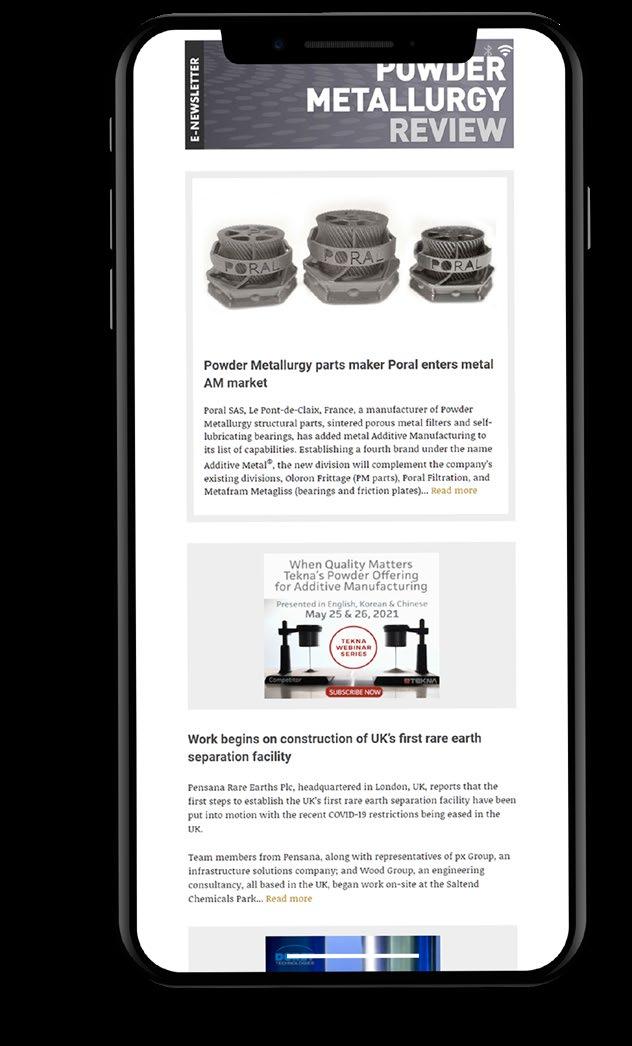
oxidation, Acta Mater 218 (2021) 117216 ( https://doi.org/10.1016/j. actamat.2021.117216 )
[12] F Neves, J B Correia, K Hanada, Spark plasma sintering of Cu 2SnS 3 powders synthesized by mechanical alloying, Materials Letters 164 (2016) 165–168 ( http://dx.doi. org/10.1016/j.matlet.2015.10.153 )
[13] D S Prem Kumar, Minqin Ren, Thomas Osipowicz, Ramesh Chandra Mallik, P Malar, Tetrahedrite (Cu 12Sb 4S 13) thin films for photovoltaic and thermoelectric applications, Solar Energy 174 (2018) 422–430 ( https://doi. org/10.1016/j.solener.2018.08.080 )
NORTH AMERICA’S LARGEST AND MOST INFLUENTIAL ADDITIVE MANUFACTURING EVENT. EXPERIENCE THE NEXT LEVEL OF ADDITIVE MANUFACTURING IN CHICAGO.

Witness groundbreaking product announcements, experience hands-on equipment demos, learn real-world additive manufacturing applications from the most respected experts, and network with thousands of industry peers.

MAY 2-4, 2023

McCormick Place | Chicago
REGISTRATION IS OPEN rapid3devent.com
World PM2022: Reviewing three innovative methods for metal powder production

A technical session at the 2022 World PM Congress, organised by the European Powder Metallurgy Association (EPMA) and held in Lyon, France, October 9-13, 2022, focused on a number of innovative methods for powder production. An overview was given of a new approach to spherical powders in a range of sizes using conical laser beams; the production and processing of tungsten-based nanopowders in thermal plasma systems; and the fabrication of monodispersed spherical composite granules by electrostatic integrated granulation of nanopowder suspension. Dr David Whittaker reviews the research presented during the session.
New approach to powder production using conical laser beams
Firstly, Yuri Chivel (Merphotonics, France) presented a process for obtaining spherical powders in a wide range of sizes from 50 nm to 50 µ m, in which a continuous near-surface optical discharge with a temperature of 20,000 K is formed using conical laser beams in an inert gas flow, into which material is introduced in the form of a wire or irregular raw powder [1].
The author identified the main reason for the low efficiency of industrial powder production processes as being the low concentration of the energy flow. During plasma atomisation, the diameter of the sprayed wire is 3 mm and the diameter of the plasma beams is 20 mm. With gas atomisation, a large amount of metal is melted inefficiently. This new approach has been developed for the purpose of obtaining powders using a highly concentrated energy source,
consisting of a laser and special optical systems using conical laser beams. An optical discharge has also been applied as a unique physical object. The developed optical system is shown in Fig. 1.

A series of theoretical calculations was presented for the process
of heating a 2 mm diameter steel wire. These calculations showed that, at an intensity of 10 5 W/cm 2 , complete melting of the wire took place at a wire feeding speed of 4 cm/s. The productivity of the process was determined by the speed of the melting wave.
To obtain nanopowders, condensation of particles from the vapour phase is used. The vapour phase is obtained by ablation of the material with a laser or using an electric arc, followed by condensation in a continuous gas flow (the so-called gas-phase condensation). As shown in a number of reported studies in the literature, this method is well controlled and allows nanoparticles to be obtained in the range from individual molecules to 1 µ m, but the production of nanoparticles on an industrial scale has not yet been
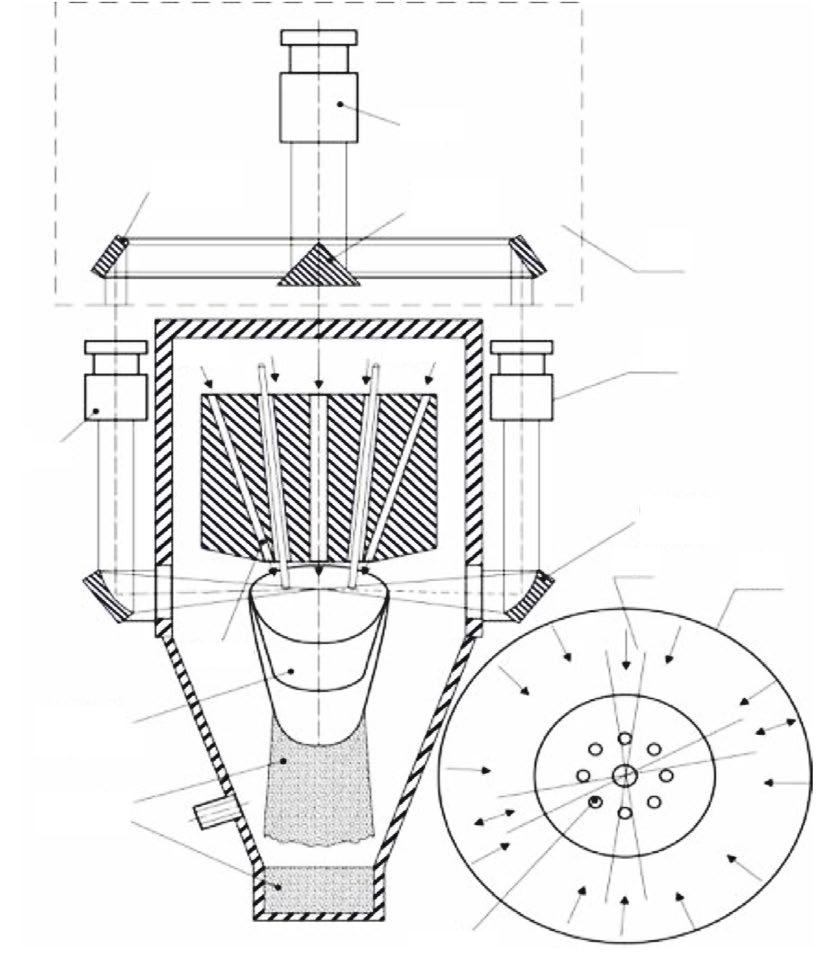
achieved, since the scale of devices is extremely small.
The approach in this study was therefore based on the use of the unique properties of conical laser beams and a continuous optical discharge (Fig. 2). This makes it possible to increase the scale of devices at a high specific power of energy input.
An evaporated object – in the form of a system of wires with a diameter of about 1 mm – is introduced into the focal region of the conical laser beam from the laser
system or systems of several beams focused by a conical mirror. Part of the laser radiation evaporates the wires continuously fed into this area. The remaining part of the laser radiation flux is focused into a small spot, which generates a continuous optical discharge having dimensions in the order of a few centimetres in the region of the wires’ vapours and the surrounding gas area. Published work indicates that, to maintain a discharge with a temperature of about 20,000 K, several kilowatts of power are consumed.
The wires are continuously fed into the optical discharge plasma, continuously evaporated by laser radiation and heated by the plasma. The discharge is purged with an inert gas flow at velocities of 4–10 m/s.
The process of heating and evaporation of a thin wire, when introduced into the plasma of an optical discharge with simultaneous exposure to laser radiation, has been considered theoretically by the author. It was determined that the limiting speed of the introduction of wires into the region of evaporation and plasma formation would be determined by the speed of the evaporation wave in the wire. The evaporated material is blown through the plasma of an optical discharge by an inert gas flow and, at the discharge outlet, begins to condense in the gas flow at the highest degree of supersaturation, forming nanoparticles.
The issue of maintaining the optical discharge was then considered in greater depth. The absorption of the discharge plasma is proportional to the square of the wavelength of the laser radiation. Therefore, the discharge is well supported by CO 2 laser radiation, though the efficiency of a CO 2 laser is only 10% for a large system. Reported studies have shown that this problem can be solved by placing an optical discharge in the laser cavity. Due to the very large number of passages of radiation through the discharge in the cavity, radiation of any wavelength can be used to maintain it. Diode lasers with a high efficiency emerge as the most promising option. In the scheme
powdernozzle laser laser wire gas wire optical discharge conical mirror 1 conical prism I conical mirror II 2 Fig. 2 Scheme for nanopowder production [1]
shown in Fig. 2, the optical charge is placed in the resonator of either one laser or in the resonators of several diode lasers, placed in pairs with an external cavity.
The large transverse dimensions and the large length of the continuous optical discharge (COD) in the transverse gas flow create opportunities for the implementation of another variant of the method for obtaining micro- and nanoparticles with high productivity. A jet of irregular raw particles, with a large cross-section of 1 cm, a particle density of up to 100 cm -3, and a speed of 0.5-1 m/s, was introduced into a continuous optical discharge (COD) in a transverse gas flow (Fig. 3).
At such a concentration of particles of millimetre size, the transmission coefficient of laser radiation will be about 0.5 and, at a laser system power of 10 kW, the COD is maintained. Heating and evaporation of particles occur due to direct laser radiation in the caustic of the conical beam and heating by COD plasma by radiation and convective heat conduction. The intensity of plasma radiation at 15-18,000 K is 10 4 W/cm 2 at the same power density of convective heating. Calculations show that, at a path length of 3–4 cm, complete evaporation of particles up to 0.5 mm in size takes place in the COD. Larger particles will melt and become spherical. At the exit from the COD, spherical micro- and nanoparticles can be obtained with a process productivity of several kg/h.
It was shown in this study that, when a conical beam of laser radiation is introduced into a dense powder jet, almost complete absorption of radiation is ensured. On this basis, a method and devices have been developed for obtaining nanopowder by laser ablation of a powder jet from particles of micron size (30-60 µm). This method was verified theoretically and experimentally.
In the model under study, the dense stream (5·10 6 cm -3) with a diameter of 0.5 mm from titanium micro-powders with particles of 30 µ m in size, is injected into the

focal region of a conical beam 3 mm long at the rate of several m/s.
The dynamics of heating and evaporation of spherical particles have been considered theoretically and, according to the resulting calculations, for particles with a duration of stay in the heating region ~ 10 -2 s , the required laser power for the developed evaporation will not exceed ~ 250 W and total speed of evaporation equals 36 g/h for a power input ~ 12 Wh/g.
The equipment for nanopowder production was created in the form of an evaporation-condensation chamber (Fig. 4). The powder stream from the openings of the sleeve was evaporated by the conical beam and condensed nanopowders were carried by the gas stream with a flow of 200 cm 3/s to the glass-fibre filter. Non–evaporated micro-particles of spherical shape were captured at the collector.
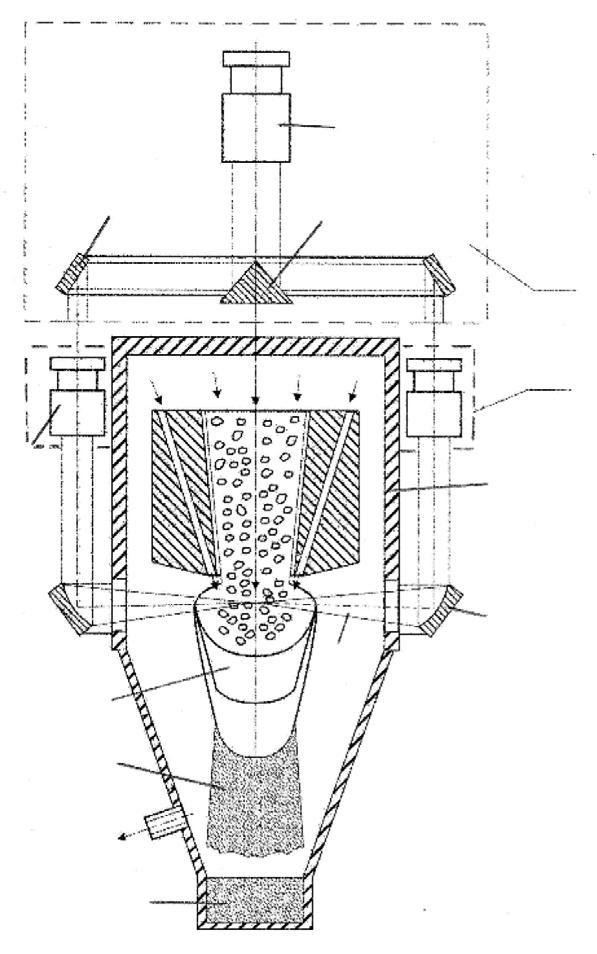
“... when a conical beam of laser radiation is introduced into a dense powder jet, almost complete absorption of radiation is ensured.”
The powders obtained in the experiments were conglomerates with a size of 100–120 nm, consisting of particles with an average size of 50 nm. The obtained results on particle sizes are in excellent agreement with the theory of particle condensation in a gas flow developed in the published literature. According to calculations, under the conditions of the experiment, with a path length to the filter of 3 cm, the average diameter of the condensing particles should be 150 nm, in good agreement with the experimental results.
The author summarised the outcomes from the reported study by stating that the process efficiency for obtaining powders by the developed laser method is up to 0.5 kg/h kW, while the existing most effective methods of plasma and gas atomisation provide an efficiency of no better than 0.1-0.25 kg/h kW. In addition, the laser method makes it possible to obtain powders over a wide range of sizes, from several
nanometres to hundreds of microns in a clean atmosphere, thus eliminating powder contamination.
Also, the use of diode lasers, with an energy efficiency of 60% at operating voltages no higher than 50 V, allows the use of renewable energy sources to power them.
Production and processing of tungsten-based powders in thermal plasma systems
Next, A Samokhin, N Alexeev, M Sinaisky, A Fadeev and A Dorofeev (Institute of Metallurgy and Materials Science RAS, Russia) reported on a study of the production and processing of tungsten-based powders in thermal plasma systems [2].
The reported study related to plasma-chemical production of W nanopowders, composite W-Cu, W-C, W-C-Co, W-Ni-Fe nanopowders, as well as the production of spherical micro-powders of these compounds
for use in modern Additive Manufacturing technologies.
To create a nano-sized structure in products, methods of compacting and consolidating nanosized powders should be used, in which there will be no significant increase in grain size. A technology that potentially takes into account the combination of these requirements is Laser Powder Bed Fusion (PBF-LB) of a powder material with a nano-scale or submicron structure. The powder materials used can be powders with a spherical particle shape with a particle size of about 10 µ m, obtained as a result of the process of spheroidisation of powder micro-granules in thermal plasma.
The process of spheroidisation of nanopowder microgranules in a thermal plasma should ensure the formation of spherical particles with a dense, non-porous internal structure, with a uniform distribution of chemical elements inside each particle and may be the only method in which there is no significant increase in grain size in the internal structure of the product.
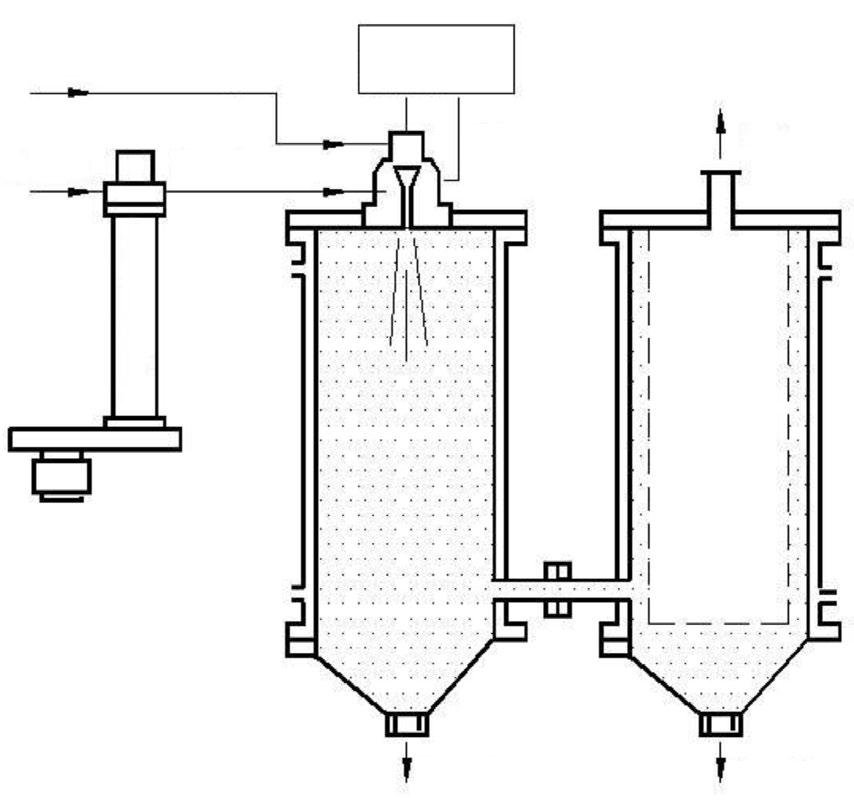
The developed process for obtaining composite micro-powders included the following stages:
1. plasma-chemical synthesis of W-C-Co, W-Cu, W-Ni-Fe composite nanopowders in a hydrogen-containing thermal arc discharge plasma
2. granulation of the resulting composite nanopowders by spray drying to obtain nanopowder microgranules of a given dispersion composition
3. plasma spheroidisation of the target fraction of the obtained nanopowder microgranules in the thermal plasma of an electric arc discharge
Plasma-chemical synthesis of W nanopowder, as well as W-Cu, W-C, W-C-Co and W-Ni-Fe composite nanopowders, was carried out in the thermal plasma flow of an electric arc plasma torch with a power of 25 kW in a reactor with a limited jet flow.
The plasma-forming gas was heated in the plasma torch, the disperse raw materials being transported by the gas into the plasma flow at the plasma torch outlet. The formation of nanoparticles in a plasma reactor occurs as a result of chemical condensation of components from the gas phase and is accompanied by the deposition of the obtained nanoparticles on the surface, limiting the high-temperature gas-dispersed flow. By periodically removing the growing layer of nanoparticles from the walls of the plasma reactor, the nanopowder product is collected in hermetic containers of the target product.
The initial tungsten-containing raw material in the process of plasmachemical synthesis of W nanopowders was tungsten oxide powder WO 3 (particle size less than 50 µ m), which interacts with a stream of nitrogenhydrogen thermal plasma. To obtain composite W-Cu and W-Ni-Fe nanopowders, a mixture of powders of tungsten oxide WO 3 (particle size less than 50 µ m) with copper oxide CuO (particle size less than 25 µ m) was used, as well as its mixture with powders of nickel oxide NiO and iron oxide Fe 2O 3 with a particle size of less than 25 µm. All experiments were performed at a constant mass ratio of elements in the raw mixture: W/Cu = 80/20; W/Ni/Fe = 90/7/3.
The initial tungsten-containing raw material in the process of plasmachemical synthesis of W-C composite nanopowders was tungsten oxide powder WO 3 (particle size less than 50 µ m), which interacts with methane in a stream of nitrogen-hydrogen thermal plasma. To obtain W-C-Co composite nanopowders, a powder mixture consisting of particles of tungsten oxide WO 3 (particle size less than 50 µ m) and Co particles (particle size less than 5 µ m) was used. All experiments were performed at a constant mass ratio of elements in the raw mixture W/Co = 11.
The plasma-chemical synthesis of W, W-C, W-C-Co, W-Cu and W-Ni-Fe nanopowders was carried out in a plasma reactor with limited jet flow. The power consumption of the elec -
tric arc plasma torch was in the range from 19–24 kW. A mixture of nitrogen with 20 vol.% hydrogen was used as a plasma gas. Dispersed raw materials with a flow rate in the range from 1–10 g/min were transported by nitrogen into the mixing chamber of the raw materials with a plasma jet of an electric arc plasma torch. During the plasma-chemical synthesis of W-C and W-C-Co nanopowders, the dispersed raw material was transported by a mixture of hydrogen and methane.
On the basis of electron microscopy assessments, the nanopowders obtained were a polydisperse system consisting of aggregated nanoparticles in the size range from 10–200 nm, while the nanoparticles mainly had a shape close to spherical. Individual W-Cu and W-Ni-Fe nanoparticles had a core-shell structure, where W was the core and the Cu or Ni-Fe alloy the shell.
The specific surface areas of the nanopowders obtained in the experiments varied in the range from 2–10 m 2/g for W, W-Cu, W-Ni-Fe nanopowders and from 20–25 m 2/g for W-C and W-C-Co nanopowders.
As a result of experimental studies, it was found that the main process parameters that affect the specific surface area of the nanopowders were the consumption of the initial dispersed raw material and the

concentration of methane (in the case of plasma-chemical synthesis of W-C and W-C-Co nanopowders).
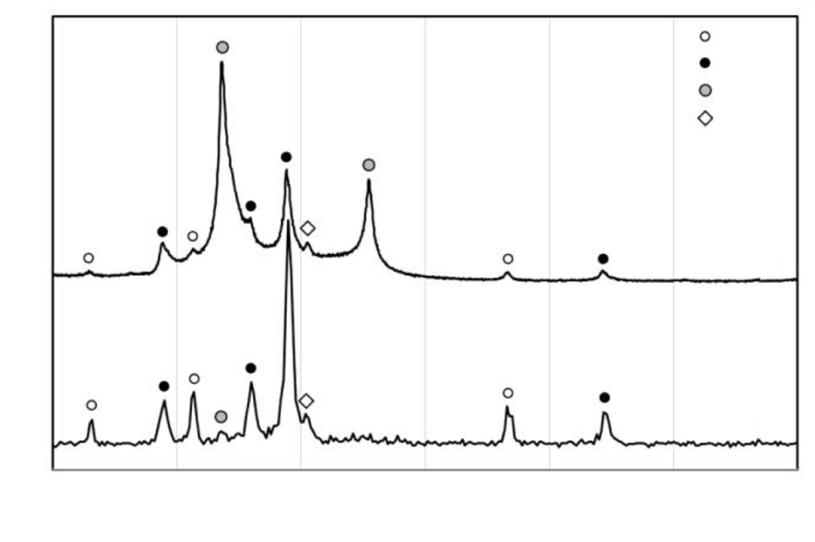
With an increase in the consumption of the initial dispersed raw material, the specific surface area of nanopowders decreased, due to an increase in the concentration of condensed vapours. The increase in the concentration of methane led to an increase in the specific surface area of the nanopowder due to an increase in the content of free carbon with a high specific surface area.
The phase composition of the W-Cu and W-Ni-Fe composite nanopowders obtained was characterised by: W and Cu metal phases for W-Cu; the W phase and the γ -phase, which is a solid solution of iron and tungsten in nickel, for W-Ni-Fe.
In the experiments, it was noted that, during the plasma-chemical synthesis of W-C and W-C-Co nanopowders, the phase composition of the resulting nanopowders differs markedly (Fig. 5). The introduction of cobalt into the process leads to a significant decrease in the amount of the cubic tungsten carbide phase WC (1-x) and an increase in the content of the tungsten monocarbide phase WC. The results of EDS microanalysis indicated that a uniform distribution of the
elements W, Co and C was achieved in the obtained nanoparticles.
The next stage in the process route was to agglomerate the nanopowders into free-flowing microgranules. This was achieved by spray drying of nanopowder suspensions with organic binders.
Micrographs of W-Cu nanopowder microgranules, obtained using C 12H 22O 11 as binder, indicated that the granules had an average diameter of 30 µ m, were characterised by a homogeneous microstructure, did not contain internal cavities and had a uniform distribution of W and Cu. The bulk density of the nanopowder granules was 3.9 g/cm 3 and the flow rate was 21 s/50 g.



In the W-C-Co nanopowder microgranules, processed using (C 8H 14O 2) n as binder, the dispersed composition was characterised by the values D10 = 23 µ m, D50 = 37 µ m, D90 = 60 µ m. The average particle size of the microgranules was 39 µ m. According to the results of analyses, the content of carbon in the microgranules was 6.4 wt.%, oxygen 1.0 wt.%, the bulk density was 2.6 g/cm 3 and the flow rate was 29 s/50 g.
In the W-Ni-Fe nanopowder microgranules, obtained using (C 8H 14O 2)n as binder, the granules had an average diameter of 35 µ m, were characterised by a homogeneous microstructure, did not contain internal cavities and had a uniform distribution of W, NI and Fe. According to the results of analyses, the content of carbon was 0.9 wt.%, oxygen 3.0 wt.%, bulk density was 2.5 g/cm 3 and the flow rate was 37 s/50 g.
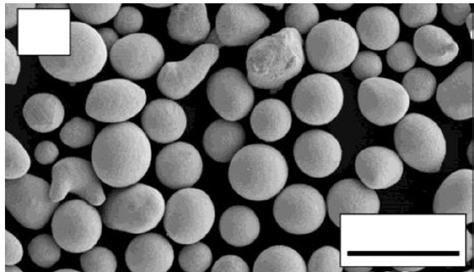
The final process step of plasma spheroidisation of W-C-Co, W-Cu and W-Ni-Fe nanopowder microgranules was carried out in a plasma reactor with limited jet flow. The power consumption of the electric arc plasma torch varied in the range from 20 to 30 kW. A mixture of argon with 5 vol.% hydrogen was used as the plasma gas. The precursor, at a flow rate of 1 kg/h, was transported by argon to the mixing chamber of the processed material with the plasma jet of the electric arc plasma torch.
In all experiments, a countable degree of product spheroidisation of at least 95% was achieved (Fig. 6).
Thermal plasma jets, generated by electric arc plasma torches, are characterised by significant enthalpy and gas velocity gradients. When processing polydisperse powders in a plasma jet, the conditions for thermal interaction of particles of the processed material with high-temperature gas are different. This fact predetermines the possible difference in the direction and rate of phase transformations occurring in individual particles, as a result of which, under these conditions, particles in polydisperse powders can have a different internal microstructure. The spherical particles obtained in the experiments had a predominantly dense microstructure and had no internal cavities (Fig. 7 (a,c)), although pores were present in some particles (Fig. 7(b)). The grain size in the particles in most cases was in the submicron range.
A change in the phase composition during the transformation of nanopowder microgranules into spherical microparticles was noted only in the W-C-Co system (Fig. 8). The main phase in both
nanopowder and spherical microparticles was tungsten carbide W 2C. When processing granules in a plasma flow, the formation of a carbide phase WC (1-x) occurs and its content increases significantly with an increase in the enthalpy of the plasma jet: according to the XPA results, the intensity of 100% peaks increases from 0.3 to 0.85.
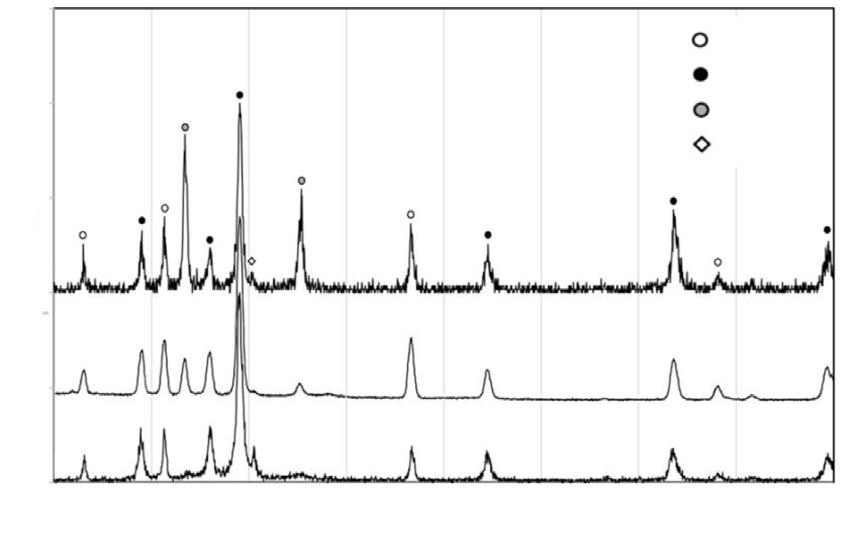
The content of tungsten monocarbide WC obviously also increases, as the intensity ratios of the 100% WC and W 2C peaks increase from 0.28 to 0.43. An increase in the enthalpy of the plasma jet (up 2.8 to 4.8 kWh/ m 3) during the processing of microgranules leads to an increase in the mass-average temperature of the gas-dispersed flow and the microparticles present in it, which, in turn, can contribute to an increase in the content of the higher-temperature carbide phase WC (1-x)

The dispersed composition of W-C-Co microgranules treated in plasma was characterised by the values D10 = 8 µ m, D50 = 14 µ m, D90 = 28 µ m. The average particle size was 17 µ m. According to the results of analyses, the content of carbon in the plasma spheroidised product was 4.5 wt.%, oxygen 0.03 wt.%. The value of the bulk density was 9.5 g/cm 3 and the flow rate was 10 s/50 g. The disperse composition of W-Cu microgranules treated in plasma was characterised by the values D10 = 10 µ m, D50 = 20 µ m, D90 = 60 µ m. The average particle size was 23 µ m. The content of O impurities in the resulting powder did not exceed 0.7 wt.%; that of C impurities was ~0.02–0.2 wt.%. The value of the bulk density was 8.1 g/cm 3 and the flow rate was 12 s/50 g. The dispersed composition of W-Ni-Fe microgranules treated in plasma was characterised by the values D10 = 10 µ m, D50 = 27 µ m, D90 = 50 µ m. The average particle size was 30 µ m. The content of O impurities in the resulting powder did not exceed 0.15 wt.%; that of C impurities was ~0.007 wt.%. The value of the bulk density was 9.4 g/ cm 3 and the flow rate was 10 s/50 g.
Fabrication of monodispersed spherical composite granules by electrostatic integrated granulation of nanopowder suspension
Finally, Koki Nakamura, Asushi Yokoi, Wai Kian Tan, Go Kawamura, Atsunori Matsuda and Hiroyuki Muto (Toyohashi University of Technology, Japan) reported on the fabrication of monodispersed spherical composite granules by electrostatic integrated granulation of nanopowder suspensions [3].
The drawbacks of nanopowders are their high tendency toward agglomeration, poor flowability and handling ability. One solution to
overcome these disadvantages is to use composite granules fabricated from nanopowders.
For the fabrication of composite powders, one of the bottom-up assembly methods used is the electrostatic assembly (EA) method. In the EA method, the surface charge of particles is adjusted to be either positive or negative, using polyelectrolytes. By mixing both suspensions, the electrostatic integrated interaction between the oppositely charged particles would lead to a controlled assembly, forming composite particles. Formation of different types of composite particles for various applications has been reported, such as selective laser sintering, porous ceramics, heat conduc -
“The drawbacks of nanopowders are their high tendency toward agglomeration, poor flowability and handling ability. One solution to overcome these disadvantages is to use composite granules fabricated from nanopowders.”
tive composites etc. On the other hand, composite granule formation using the EA method has yet to be reported.
Therefore, it was considered a matter of interest to integrate electrostatic assembly into the granulation process for the fabrication of composite granules, in the electrostatic integrated granulation (EIG) process. Using surface charge adjusted colloidal suspensions, a controlled EIG would enable the formation of monodispersed composite granules. Importantly, the composite granules would exhibit excellent homogeneity, flowability and handling ability.
Using alumina (Al 2O 3) particles as raw powder materials, a model study on the EIG process was carried out in the reported work. Al 2O 3 particles with average diameters of 140 nm, 530 nm, 830 nm and 1600 nm were used as starting materials. In the reported study, the Al 2O 3 particles with the different diameters of 140, 530, 830 and 1600 nm were referred to as S, M, L and LL, respectively. The Al 2O 3 particles exhibit positive surface charge in aqueous suspension and the average zeta potential was approximately +50 mV. Zeta potential is the electrical potential at the slipping plane that separates mobile fluid from fluid that remains
attached to the surface. New instrumentation techniques have been introduced that enable zeta potential measurement.
To adjust the surface charge of Al 2O 3 particles to be negative, poly sodium 4-styrene sulfonate (PSS) solution was used. For the fabrication of composite granules, S-sized PSS-treated Al 2O 3 particles were used as a base to combine with Al 2O 3 particles of different sizes to form the combinations S-M, S-L and S-LL. The mixing ratio based on surface area of the positively and negatively charged colloidal suspensions was adjusted according to x: 1-x (0 < x < 1) and the zeta potential of the mixture was measured. Then the mixed suspensions were transferred into a glass vessel (volume: 9 ml) and rotated using a rotator for the EIG process.
In order to identify the formation mechanism of the EIG process, a different set of experiments was carried out. In this investigation, Al 2O 3 composite granules, consisting of the S-S combination were formed by mixing PSS-treated and as-received Al 2O 3 particle suspensions with negative (- 50 mV) and positive (+ 50 mV) surface charge, respectively. An in-situ observation of granule formation in an acrylic vessel (90 mm in diameter and
20 mm in thickness) was carried as a function of time.
In the investigation of the effect of volume fraction (against volume of the vessel) and rotation speed on the composite granules’ monodispersity, the S-S combination of Al 2O 3 composite granules were fabricated. The mixing ratio of the suspensions was fixed at 1:1. To investigate the effect of volume fraction, the rotation speed was fixed at 3.2 rpm, while the volume fraction was varied between 0.15, 0.30, 0.45 and 0.60 vol.%. For the effect of rotation speed, the volume fraction was fixed at 0.45 vol.% and the speed was varied between 1.6, 2.4, 3.2 and 4.0 rpm.
In the investigation of composite granule formation using particles with different size combinations in various ratios, the zeta potentials of the mixtures obtained are shown in Fig. 9. The conditions used that resulted in the formation of spherical composite granules are indicated in red in this figure. From this observation, it can be seen that spherical composite granules were formed when the zeta potentials of mixed suspensions were near the 0 mV region. This indicates that a granulation region near 0 mV with a substantial electrostatic interaction between the particles could have enabled composite granule formation. For further confirmation of this observation, the composite granules fabricated within and outside this granulation area were observed using optical microscopy.

The composite granules obtained using the three different particle size combinations of S-M, S-L and S-LL are shown in Fig. 10, which demonstrates that, despite using different particle sizes, when the zeta potential of the mixed suspensions was within the granulation region, monodispersed spherical composite granules with an average diameter of 500 µ m were formed using the EIG process.
In order to study the formation mechanism during the EIG, in-situ observation was carried out as a function of granulation time. From these in-situ observations, the gran
ulation process can be divided into four stages. For the first 10 min, gradual sedimentation of alumina particles toward the bottom of the vessel, due to gravitational pull, led to the formation of concentrated regions. The rotational movement of the vessel caused these concentrated regions to be divided into two regions during the nucleation stage, the precipitation region and the particle accumulation region. This first stage led to the formation of primary agglomerates with a size of several micrometres.
After 30 min of granulation, stage two involved the consolidation of the primary agglomerates, forming a powder-bed-like immersion that enabled a constant contact of the flocculate. In stage three, a continuous vessel rotation led to the formation of secondary larger agglomerates. This could have been
caused by a remnant existence of local opposite charges between the primary agglomerates, inducing electrostatic integrated interaction during collisions causing a further agglomeration process. By comparing these three stages, it could be observed that the precipitation region and the repose angle of the particle accumulation region reduced gradually. In the final (fourth) stage, friction caused by the collision between secondary agglomerates and the vessel wall resulted in the formation of the smooth surfaces of the spherical composite granules. It was also noteworthy that the precipitation region that consisted of primary agglomerates disappeared and spherical granules were formed.
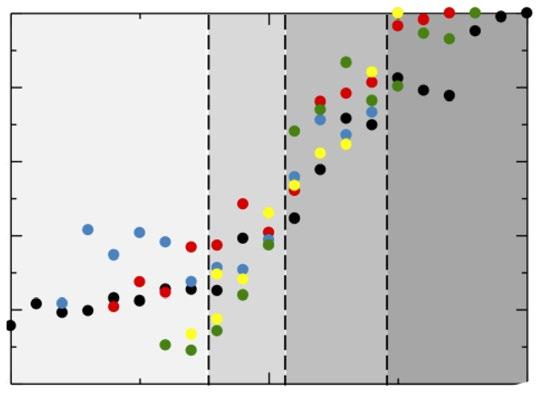
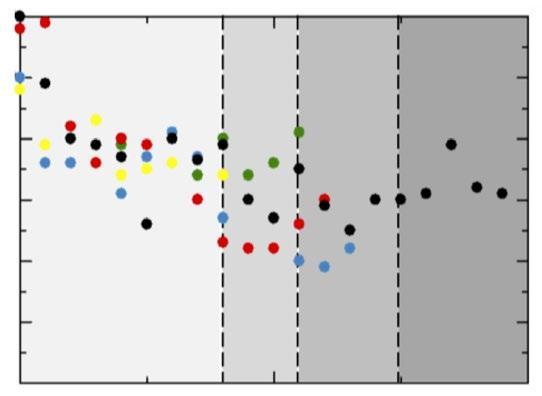
For a quantitative interpretation of the results, the ratio of accumulation region formed and

the corresponding angle of repose obtained are plotted against granulation time in Fig. 11. From Fig. 11 (a), in the initial stage, the suspension mainly consisted of a colloidal suspension of alumina and primary agglomerates leading to a low ratio of particle accumulation region. As the EIG progressed, more formation of primary and secondary agglomerates occurred.
The continuous rotational movement of the vessel led to a transition from agglomerates to flocculate and, finally, to spherical composite granules (after 60 min). Due to the correlation between the monodispersity of flocculates and the angle of repose, the repose angle of the particle accumulation region during granulation was investigated.
The graph, showing the repose angle obtained against granulation time, is presented in Fig. 11 (b).

In the initial granulation stage, a higher repose angle was observed due to the smaller size of agglomerates and their irregular particle size distribution. With longer granulation time, the repose angle reduced and reached a constant of approximately 30°. This observation resulted
from the formation of smoother and rounder composite granules with improved monodispersity, enabling better flowability and, thus, the lower angle of repose.
Next, the effects of volume fraction and rotation speed of the vessel in the EIG process were investi -
gated. By fixing the rotation speed of the vessel at a constant of 3.2 rpm, granulations using colloidal suspensions with four different volume fractions of 0.15, 0.30, 0.45 and 0.60 vol.% were carried out. Microscope images of the granules obtained indicated that a shorter granulation time was obtained with lower volume fractions. The shortest and longest granulation times were 20 and 75 min, using suspension with volume fractions of 0.15 and 0.60 vol.%, respectively. Also, the average diameter of the granules obtained reduced when a lower volume fraction was used.
To determine the effect of rotation speed, a constant volume fraction of 0.45 vol.% was used, while the vessel’s rotation speed was varied between 1.6, 2.4, 3.2 and 4.0 rpm. Although all four parameters enabled the formation of composite granules, the average diameter of the granules reduced when a higher rotational speed was applied. The granulation time also reduced with higher vessel rotational speed. Composite granules were formed after only 35 min at 4.0 rpm, while a longer time of 60 min was needed when the vessel was rotated at 1.6 rpm.
For further confirmation, the particle size distributions of the composite granules obtained using different volume fractions and rotational speeds were determined using image analysis software. Fig. 12 shows the particle size distributions obtained using different combinations of volume fraction and vessel rotation speed. As shown in Fig. 12 (a), a lower volume fraction of colloidal suspension led to the formation of composite granules with smaller diameters and, thus, shorter formation times.
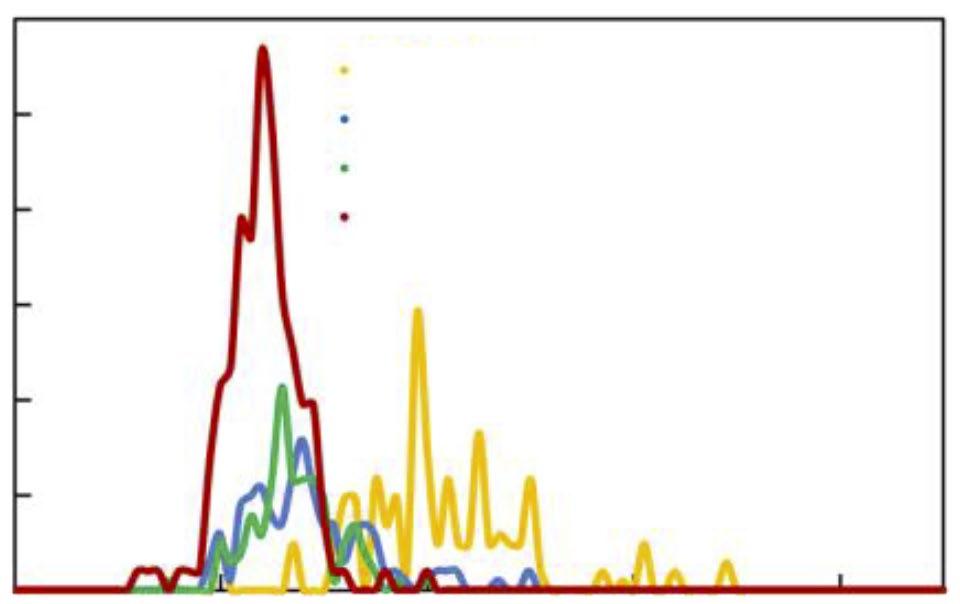
As for the effect of rotation speed, granulation at higher speed resulted in smaller composite granule formation, as shown in Fig. 12 (b), leading to shorter granulation times. Also, the monodispersity of the composite granules obtained at 4.0 rpm was superior to that obtained at lower rotation speeds. This could have been caused by a stronger mechan -

“Although all four parameters enabled the formation of composite granules, the average diameter of the granules reduced when a higher rotational speed was applied.”
ical agitation, providing sufficient energy to enable a faster consolidation process of the primary and secondary agglomerates.
These findings indicate that controlled formation of composite granules via EIG can be achieved by adjusting the volume fraction of the colloidal suspension and the rotation speed of the granulation vessel.
Author and contacts
Dr David Whittaker Tel: +44 1902 338498 whittakerd4@gmail.com

[1] Yuri Chivel, Merphotronics, France yuri.chivel@gmail.com
[2] A Samokhin, Institute of Metallurgy and Materials Science RAS, Russia asamokhin@imet.ac.ru

[3] Koki Nakamura, Toyohashi University of Technology, Japan Nakamura.koki.in@tut.jp
References
[1] New approach to powder production using conical laser beams, Yuri Chivel. As presented at the World PM2022 Congress, October 9–13, 2022, and published in the proceedings by the European Powder Metallurgy Association (EPMA)
[2] Production and processing of tungsten-based powders in thermal plasma systems, A Samokhin et al As presented at the World PM2022 Congress, October 9–13, 2022, and published in the proceedings by the European Powder Metallurgy Association (EPMA)
[3] Fabrication of monodispersed spherical composite granules by electrostatic integrated granulation of nanopowder suspension, Koki Nakamura et al. As presented at the World PM2022 Congress, October 9–13, 2022, and published in the proceedings by the European Powder Metallurgy Association (EPMA)
World PM2022 Proceedings


The full proceedings of the World PM2022 Congress are available to purchase from the European Powder Metallurgy Association.
www.epma.com
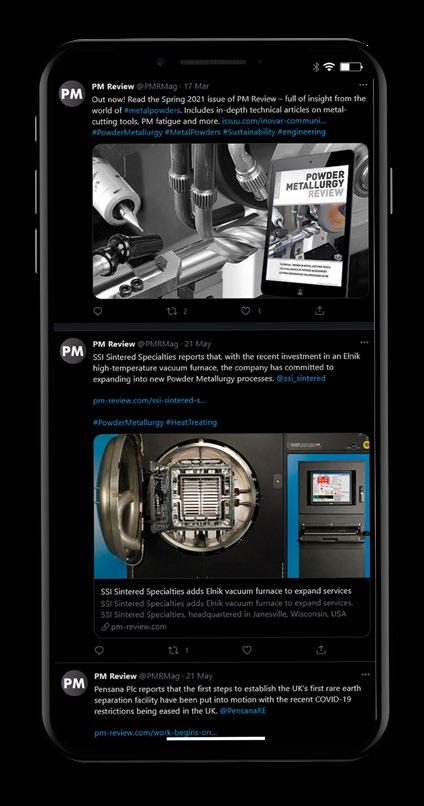
SINTERING EQUIPMENT & ANCILLARIES
Alphabetical index

Industry events
Powder Metallurgy Review is dedicated to driving awareness and development of Powder Metallurgy and its related technologies. Key to this aim is our support of a range of international partner conferences. View our complete events listing on www.pm-review.com
2023
PM23 International Conference on Powder Metallurgy & Particulate Materials
March 13–15, 2023
Mumbai, India www.pmai.in
EPMA Press&Sinter Seminar
March 28–29, 2023
Barcelona, Spain www.seminars.epma.com
Hannover Messe 2023
April 17–21, 2023
Hannover, Germany www.hannovermesse.de
RAPID + TCT 2023
May 2–4, 2023
Chicago, IL, USA www.rapid3devent.com
PM China 2023
May 31–June 2, 2023
Shanghai, China www.pmexchina.com
World Titanium Conference 2023 (Ti-2023)
June 12–16, 2023
Edinburgh, Scotland, UK www.iom3.org/events-awards/world-titaniumconference-2023.html
PowderMet2023 / AMPM2023
June 18–21, 2023
Las Vegas, NV, USA www.powdermet2023.org / www.ampm2023.org
MAPP Second International Conference
June 28–29, 2023
Sheffield, UK www.mapp.ac.uk/events/mapp-2ndinternational-conference
Dritev 2023
July 5–6, 2023
Baden, Germany www.vdiconference.com/dritev/
EPMA Powder Metallurgy Summer School
July 17–21, 2023
Dresden, Germany www.summerschool.epma.com
Formnext + PM South China
August 29–31, 2023 Shenzhen, China www.formnext-pm.com
EMO Hannover 2023
September 18–23, 2023 Hannover, Germany www.deutschemesse.co.uk/emo
Euro PM2023
October 1–4, 2023
Lisbon, Portugal www.europm2023.com
Formnext
November 7–10, 2023
Frankfurt, Germany www.formnext.com
2024
World PM2024
October 13–14, 2022
Yokohama, Japan www.worldpm2024.com
If you would like to see your Powder Metallurgy related event listed in this magazine and on our websites, please contact Jo Sheffield, jo@inovar-communications.com
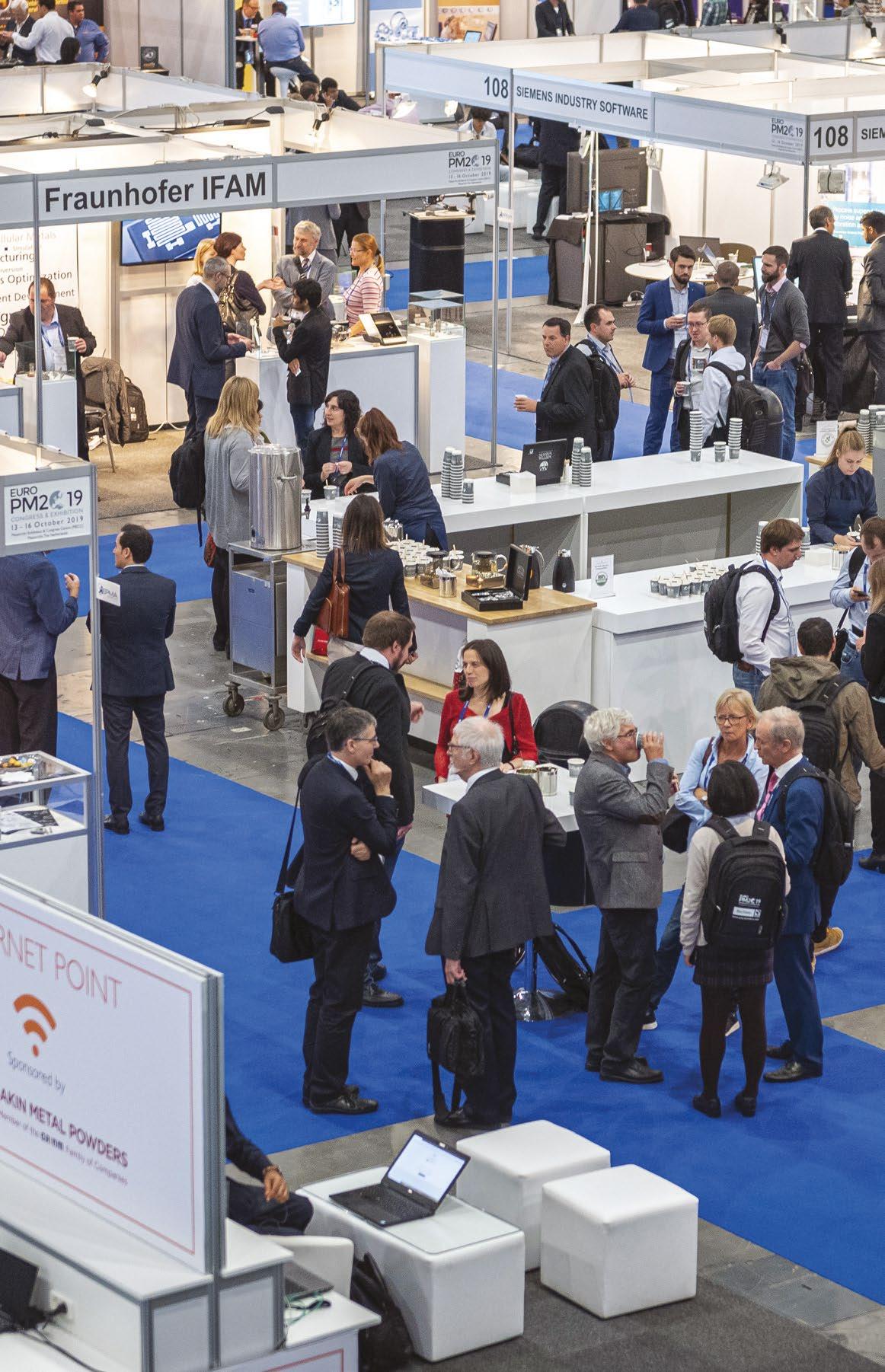
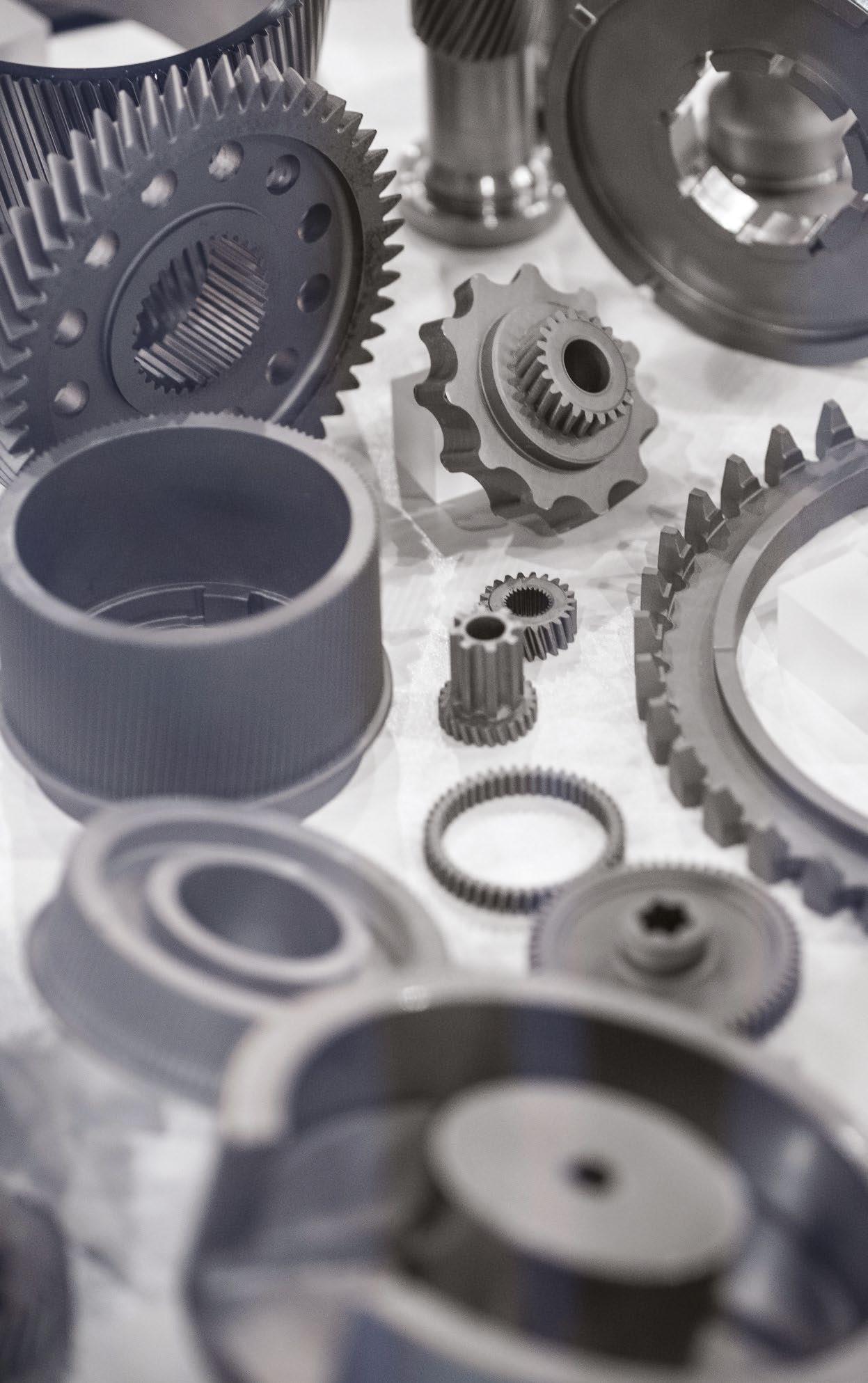
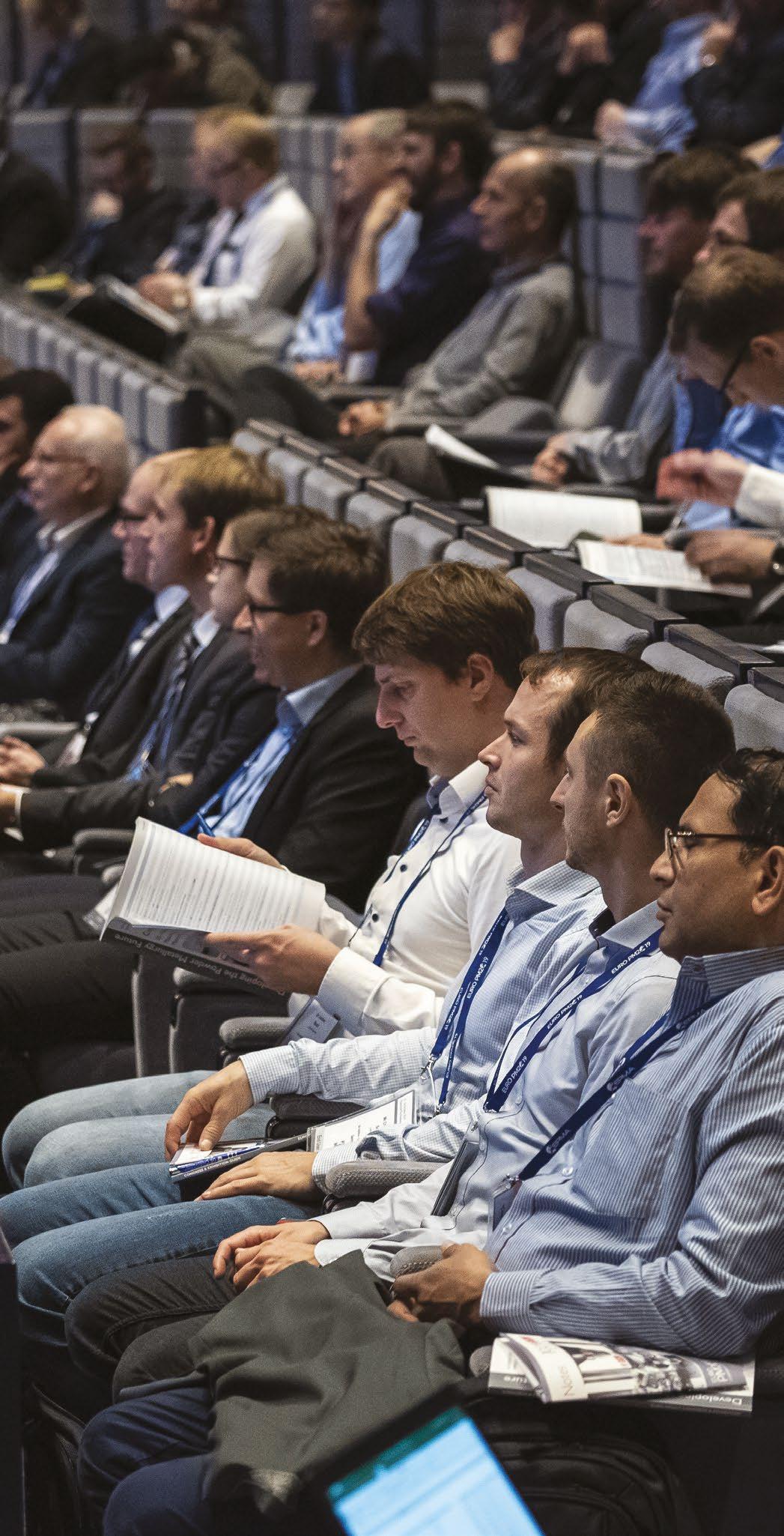





CONTINUOUS FLOW VACUUM SINTERING FURNACES
CONTINUOUS FLOW VACUUM SINTERING
n Faster floor to floor times
n Superior material properties
n Faster floor to floor times
n Elevated temperatures
n Superior material properties
n Energy efficient & environmentally friendly
n Elevated temperatures

n Energy efficient & environmentally friendly
n Minimal atmosphere consumption
n Precise control
n Minimal atmosphere consumption
n Meets AMS 2750 and CQI-9 Requirements
n Precise control
n Meets AMS 2750 and CQI-9 Requirements
n Meets AMS 2750 and CQI-9 Requirements













n Meets AMS 2750 and
COMPLETE
From sales and applications engineering, to equipment design, manufacturing, commissioning, and never ending aftermarket support, our team of engineers, metallurgists, and technicians understand your process from all angles.
Gasbarre takes a 360º approach to servicing our customers From sales and applications engineering, to equipment design, manufacturing, commissioning, and never ending aftermarket support, our team of engineers, metallurgists, and technicians understand your process from all angles. Gasbarre’s technical capability and commitment to service will ensure your success today and into the future!
Gasbarre takes a 360º approach to servicing our customers. From sales and applications engineering, to equipment design, manufacturing, commissioning, and never ending aftermarket support, our team of engineers, metallurgists, and technicians understand your process from all angles. Gasbarre’s technical capability and commitment to service will ensure your success today and into the future!
Gasbarre takes a 360º approach to servicing our customers. From sales and applications engineering, to equipment design, manufacturing, commissioning, and never ending aftermarket support, our team of engineers, metallurgists, and technicians understand your process from all angles. Gasbarre’s technical capability and commitment to service will ensure your success today and into the future!
Gasbarre’s technical capability and commitment to service will ensure your success today and into the future!
COMPLETE LINE OF THERMAL PROCESSING EQUIPMENT
OF THERMAL PROCESSING EQUIPMENT




Annealing n Brazing n Carbonitriding
Co-firing
Drying n Enameling
COMPLETE LINE OF THERMAL PROCESSING EQUIPMENT
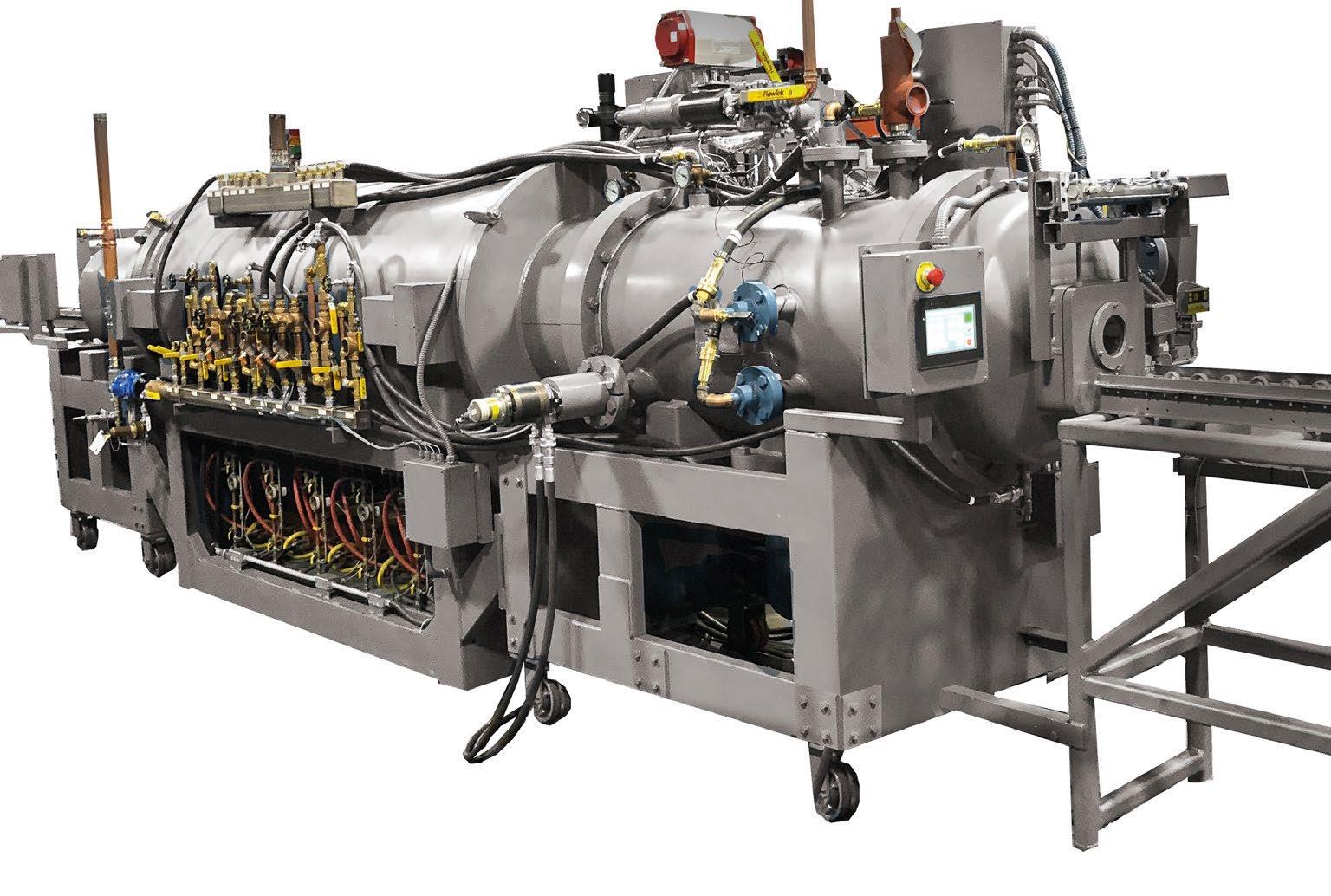



Annealing
Ferritic Nitrocarburizing
Annealing
Steam Treating
814.834.2200
inquiries@gasbarre.com www.gasbarre.com
Hardening
Soldering
Inert Atmosphere Processing
Vacuum Processes
